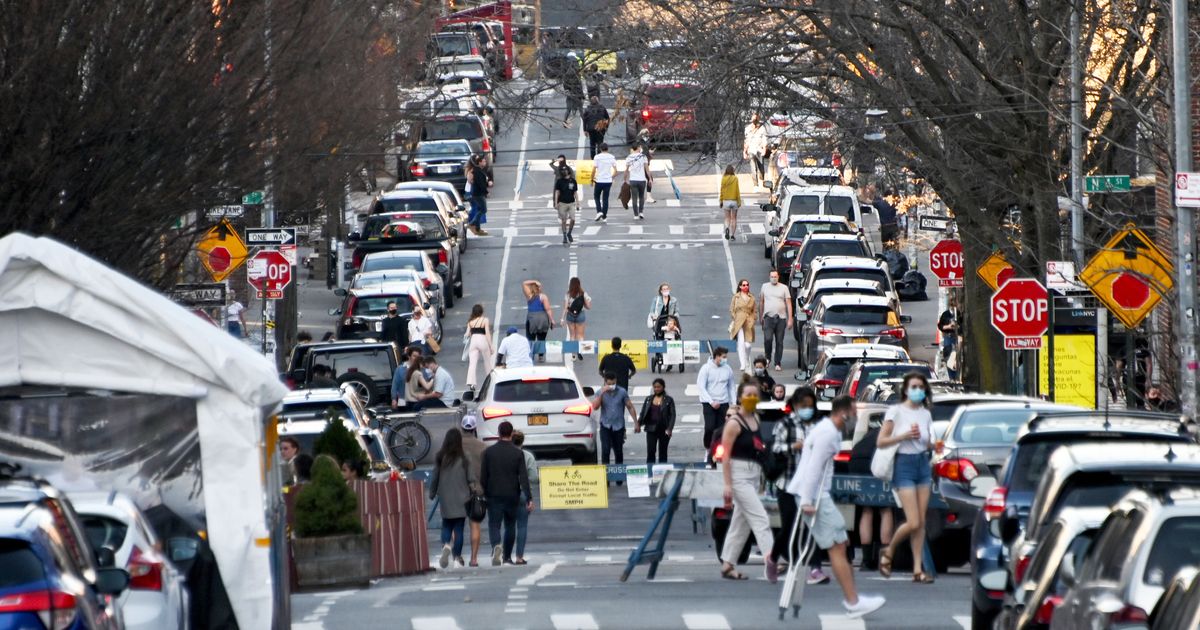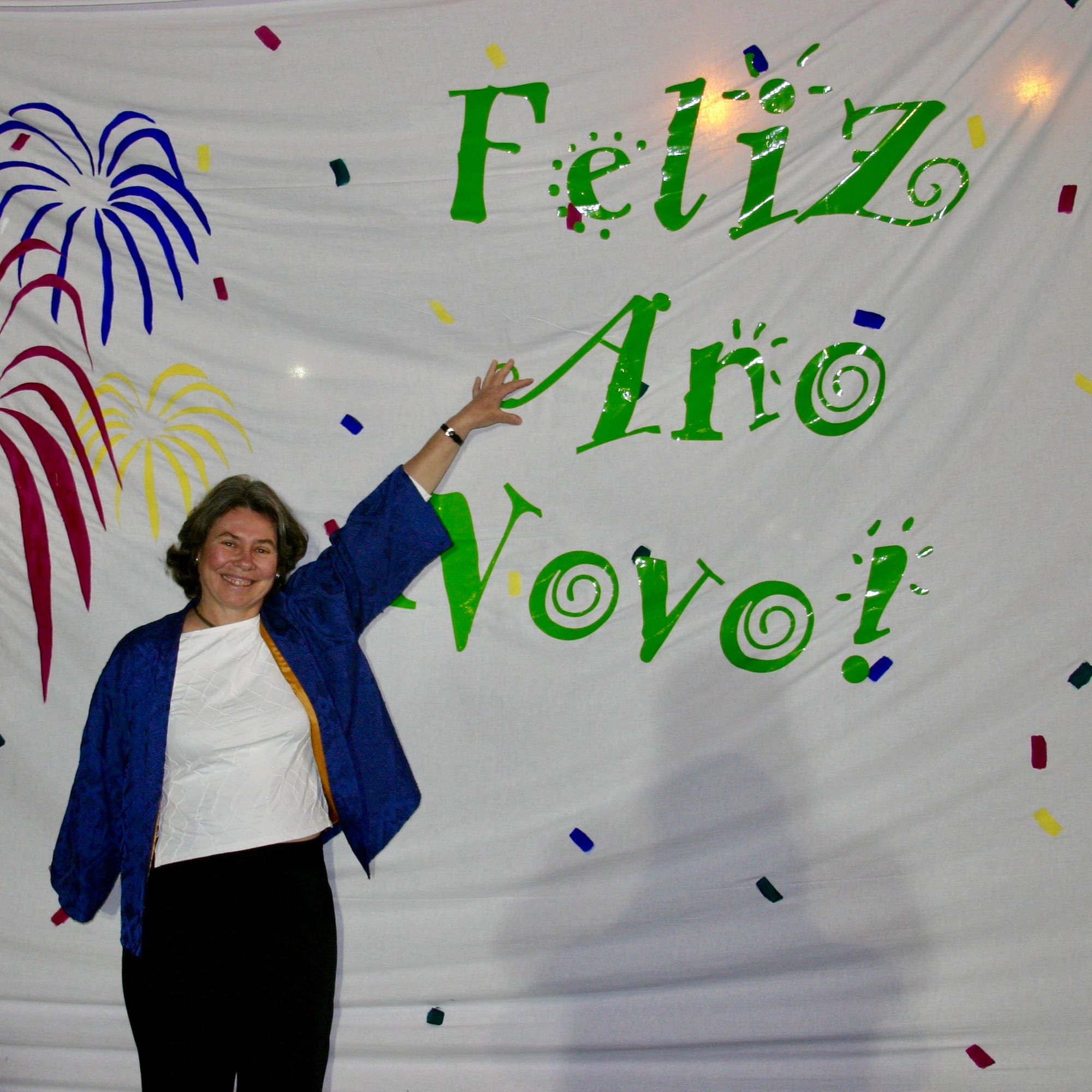A Three Step Process:
Delray has gradually but consistently been moving away from its beloved "village-like" quality defined by vibrant community life and walkability, and towards more and more car presence which is draining its soul. Through the following three phases, we can revitalize Delray Beach and restore the qualities that we love and cherish.
Part One: LQCs
Lighter Quicker Cheaper interventions (LQCs) are small "experiments" that can improve a place with minimal effort, time, and money. Examples include outdoor seating, ping pong tables, string lights, coffee or food trucks, etc. LQCs can also be larger like weekend markets or art installations. They can be easily removed if they are not successful or they can be expanded into more long term projects if they are.
The first step to improving a place is starting with 10+ of these LQC experiments. They will help people see a place's potential and what it could become without forcing them to "marry" a particular change. These temporary interventions/activations can become catalytic ventures into previously uncharted territory. Many of them have been proven to work in other communities around the world, so their effectiveness has precedent.
Part Two:
Seeing how the community responds to LQC "experiments" can help clarify which interventions to expand on and invest in. In this way, the experiments can become the foundation for a bold and transformative vision of the future. Agendas can be developed around the successful interventions which can define the next phase of the renewal process for Delray Beach, focused on Placemaking and community ownership and engagement. This process can be supported with communication and advocacy campaigns such as the ones we have developed: "A Bench on Every Corner," "A Porch on Every Building" and "Creating the Streets We Love."
Part Three:
After a vision for the future has been developed, it is time to consolidate and create an entity(ies), or redefine existing ones, that can work together with government agencies and deliver broad outcomes that the community wants for its future. The goal is to continuously generate new levels of change that reflect the community, in partnership with local citizens.
Some "Experiments" For Delray to Try
1) Expanding Local Squares and Markets
We like to say that the square is the heart of community. It's where people congregate, where they meet up with friends or family members, where they go when they want to people watch and take part in community life. Therefore, great squares are a must for a thriving community. What's more, putting a market in them gives them vibrant activity that further connects people.
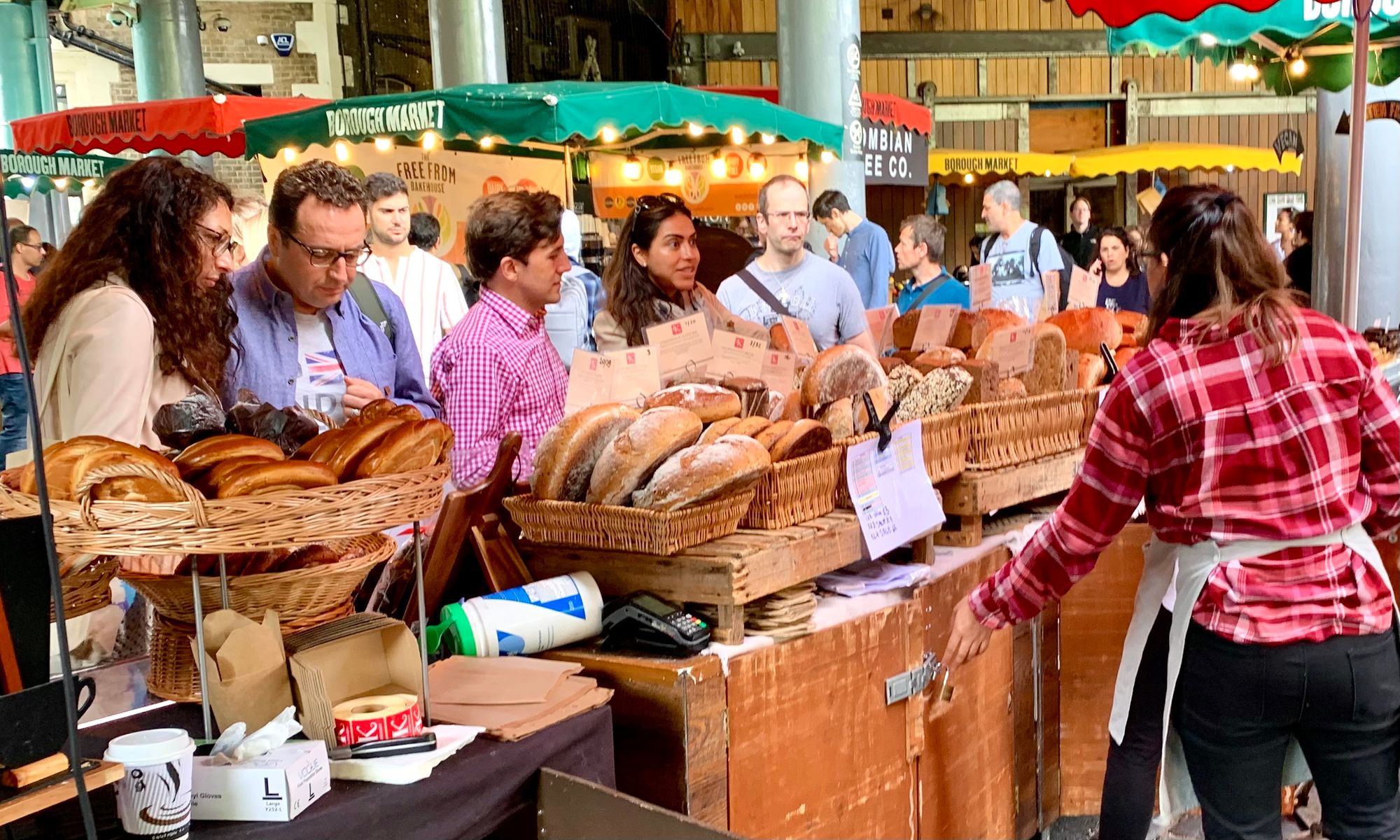
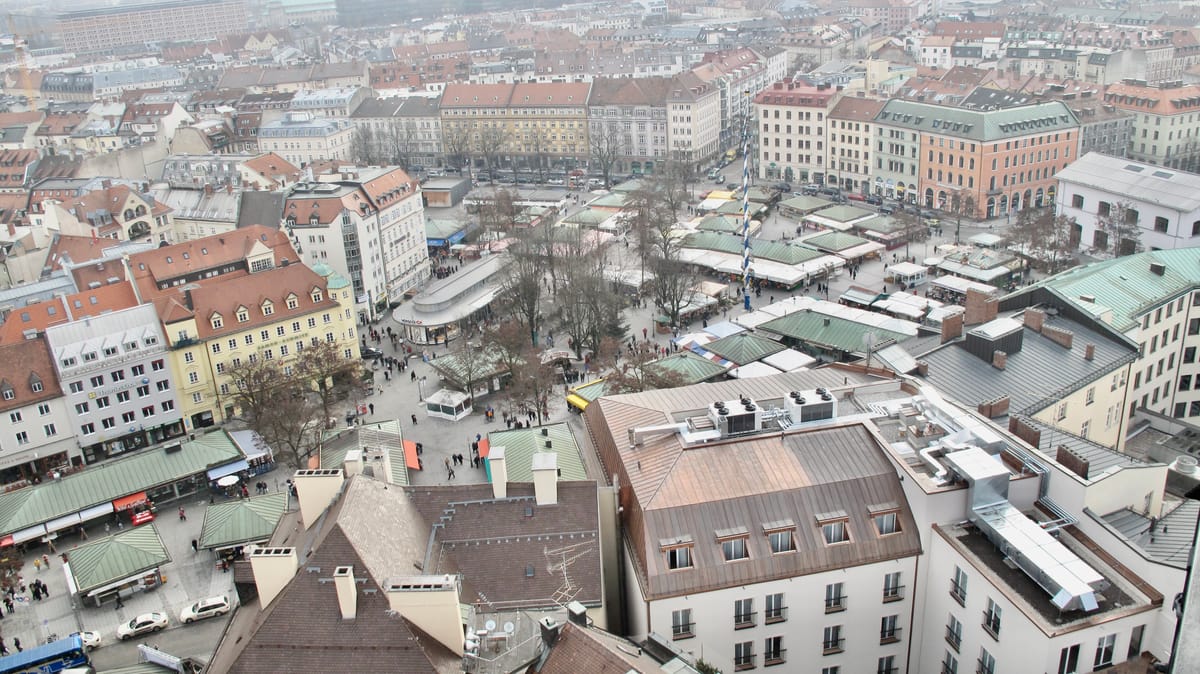
Delray Beach has two great markets. With those as a foundation, establishing a year-round market or series of markets, including a night market, could be a mainstay for people in the region, along with being a draw for visitors.
Old School Square's Garage
This large section of Old School Square could be an asset that becomes a central feature of Delray's market future. The garage, because of it size and the fact that each of the four sides faces different exposures, can incorporate different approaches for activation. The large green area would be the main gathering space for the community. The garage would do well to add small pavilion-style buildings or other lightweight structures on the south side to create vibrancy and foster local commerce.
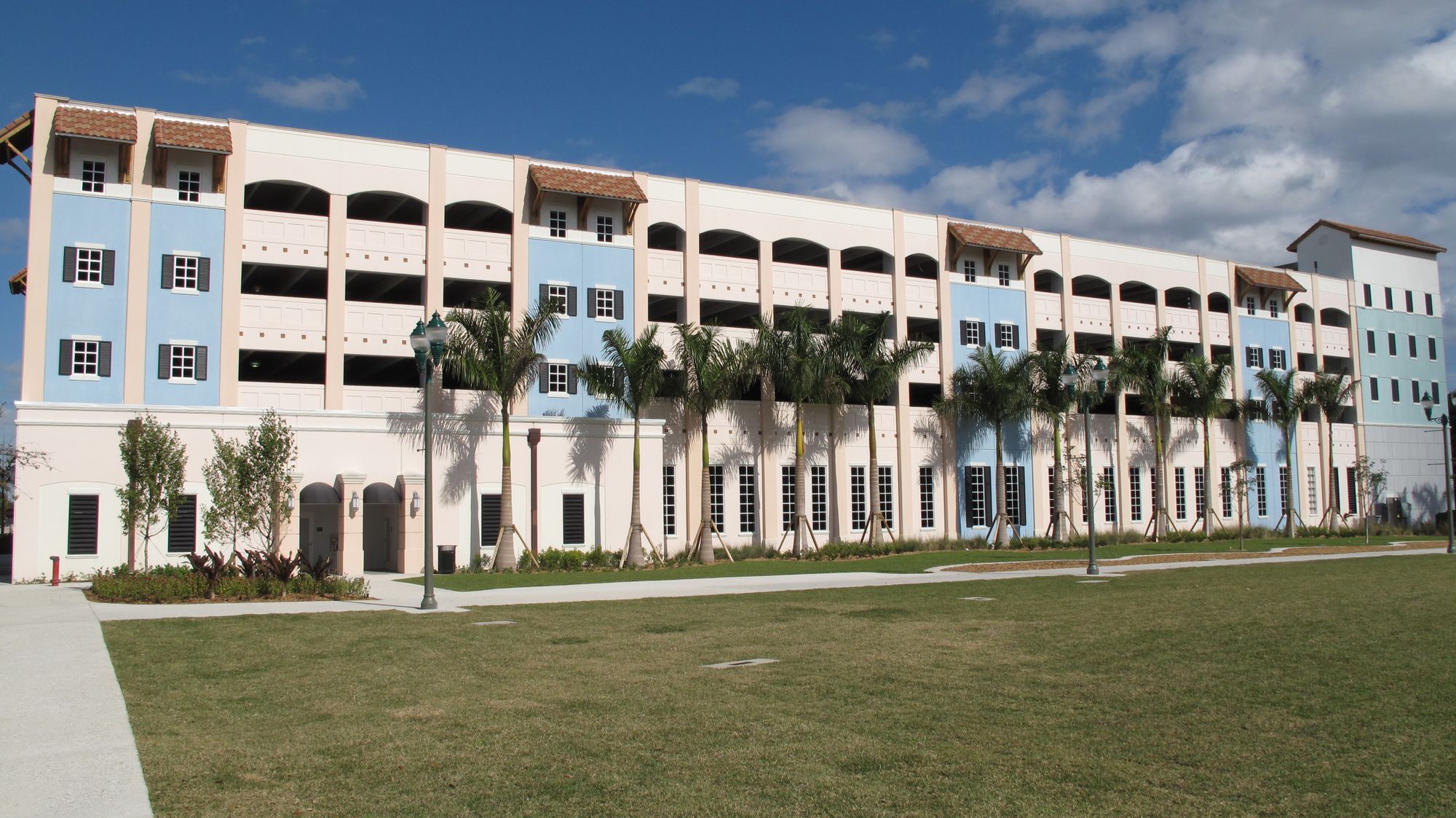
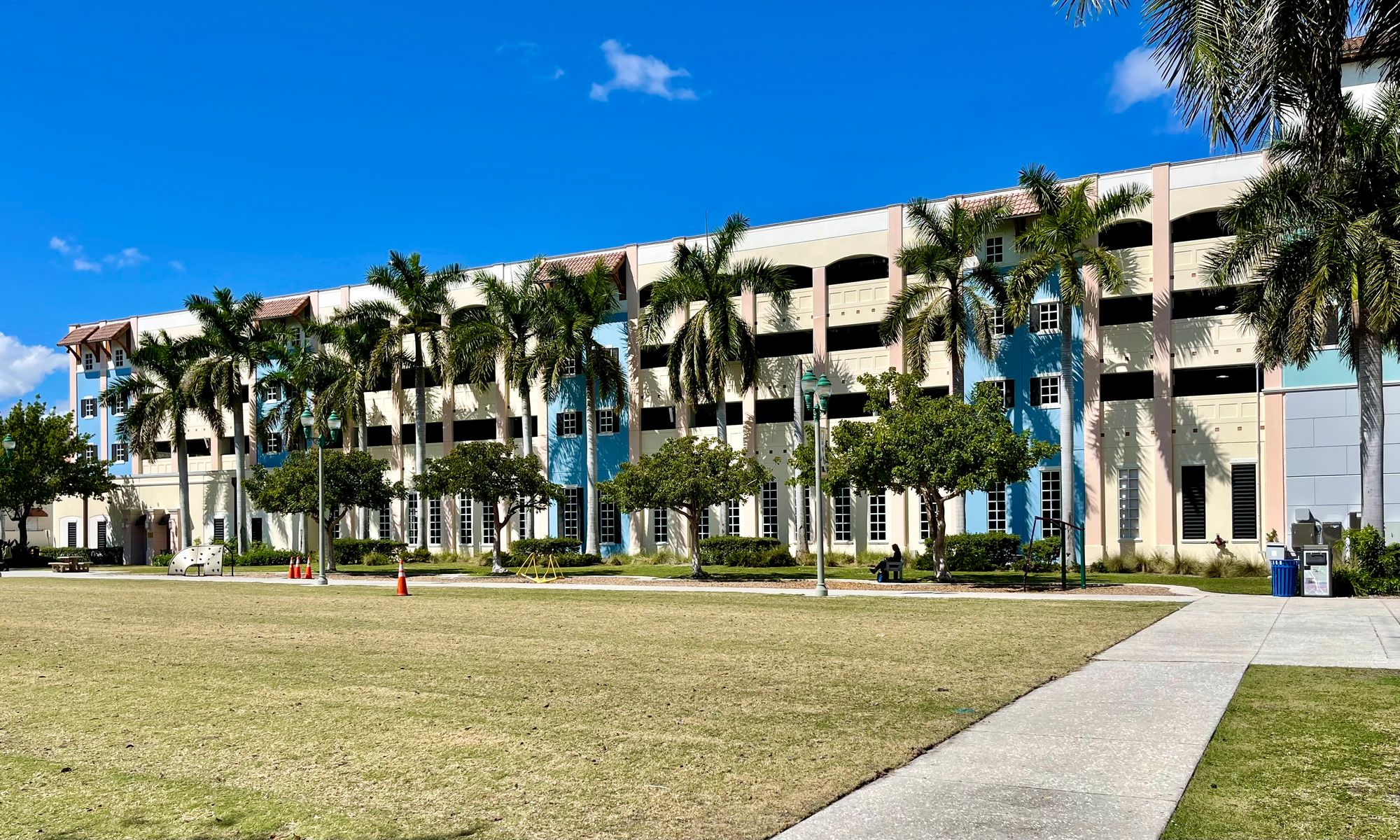
The garage has not changed much in 20 years, except for the palm trees growing.
Miami Beach - Collins Avenue Garage
This plant-camouflaged garage in Miami is a remarkable idea that could easily be applied to Delray's "central garage." By adding storefronts along the base it could become a revenue generator as well as an interesting destination.
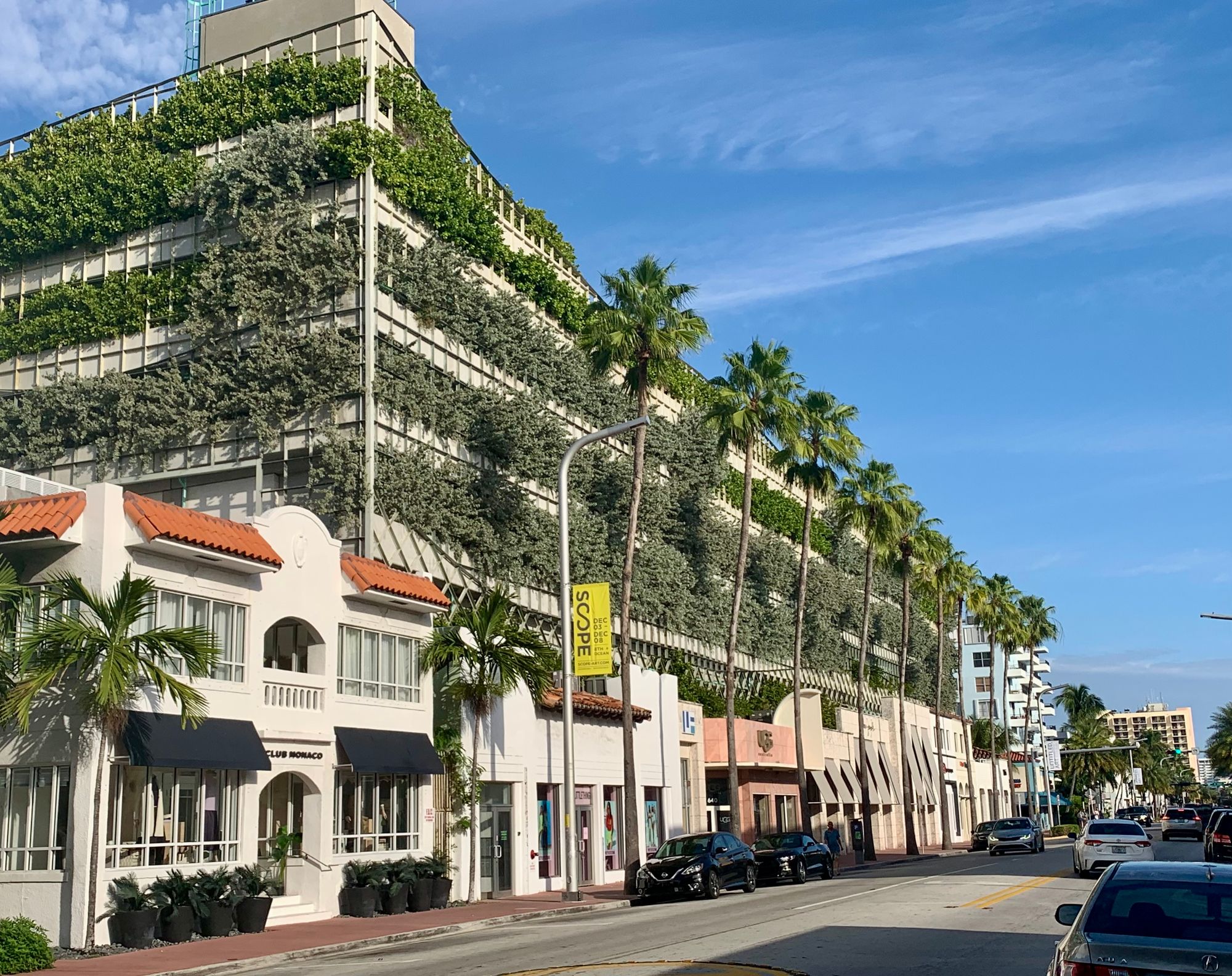
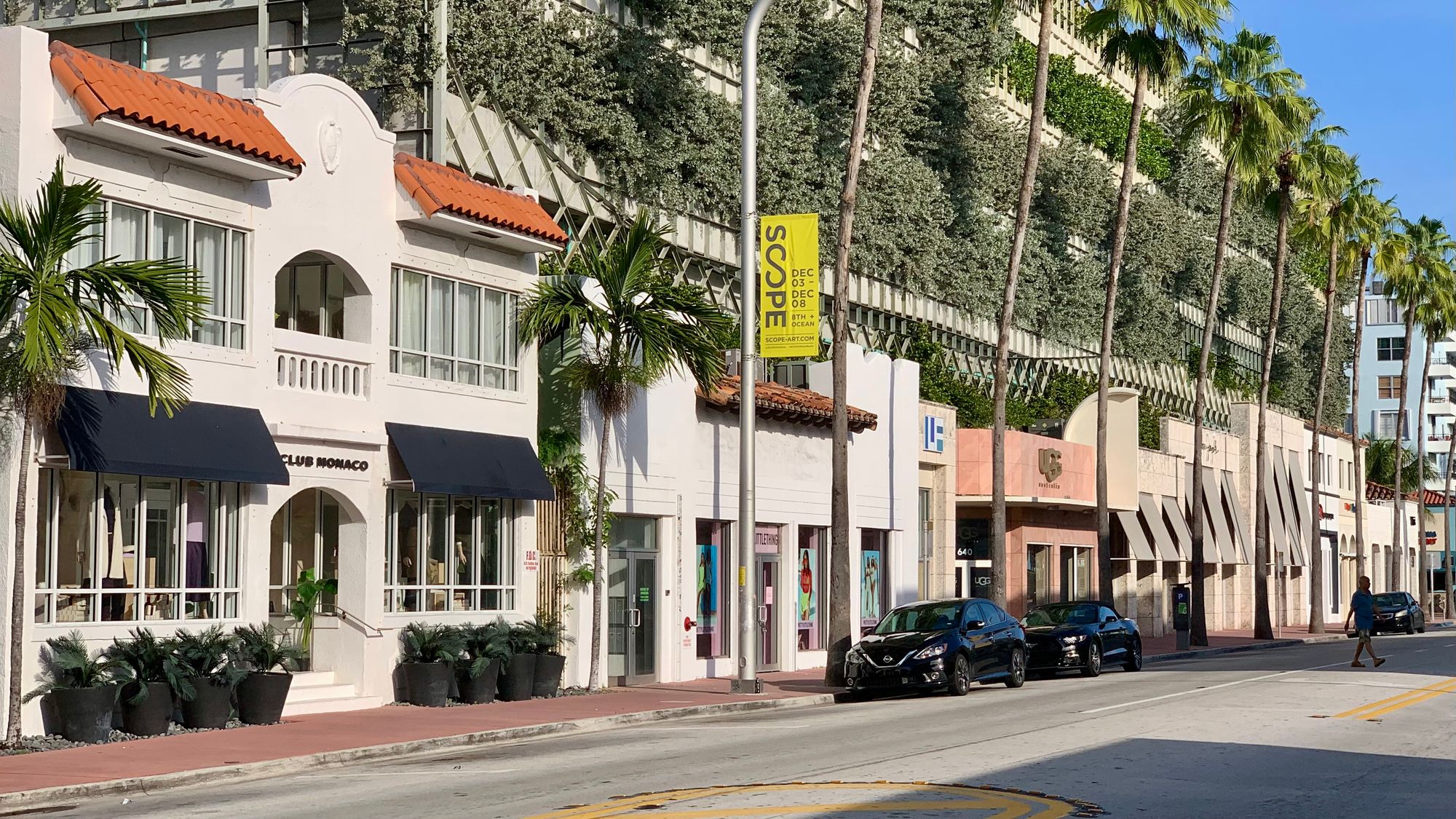
Gabriel's Wharf - South Bank, London
Gabriel's Wharf in South Bank shows how a public space can support local businesses and entrepreneurs. There are over 60 vendors here in this once bland, industrial area. They offer a unique blend of food, retail, and programming.
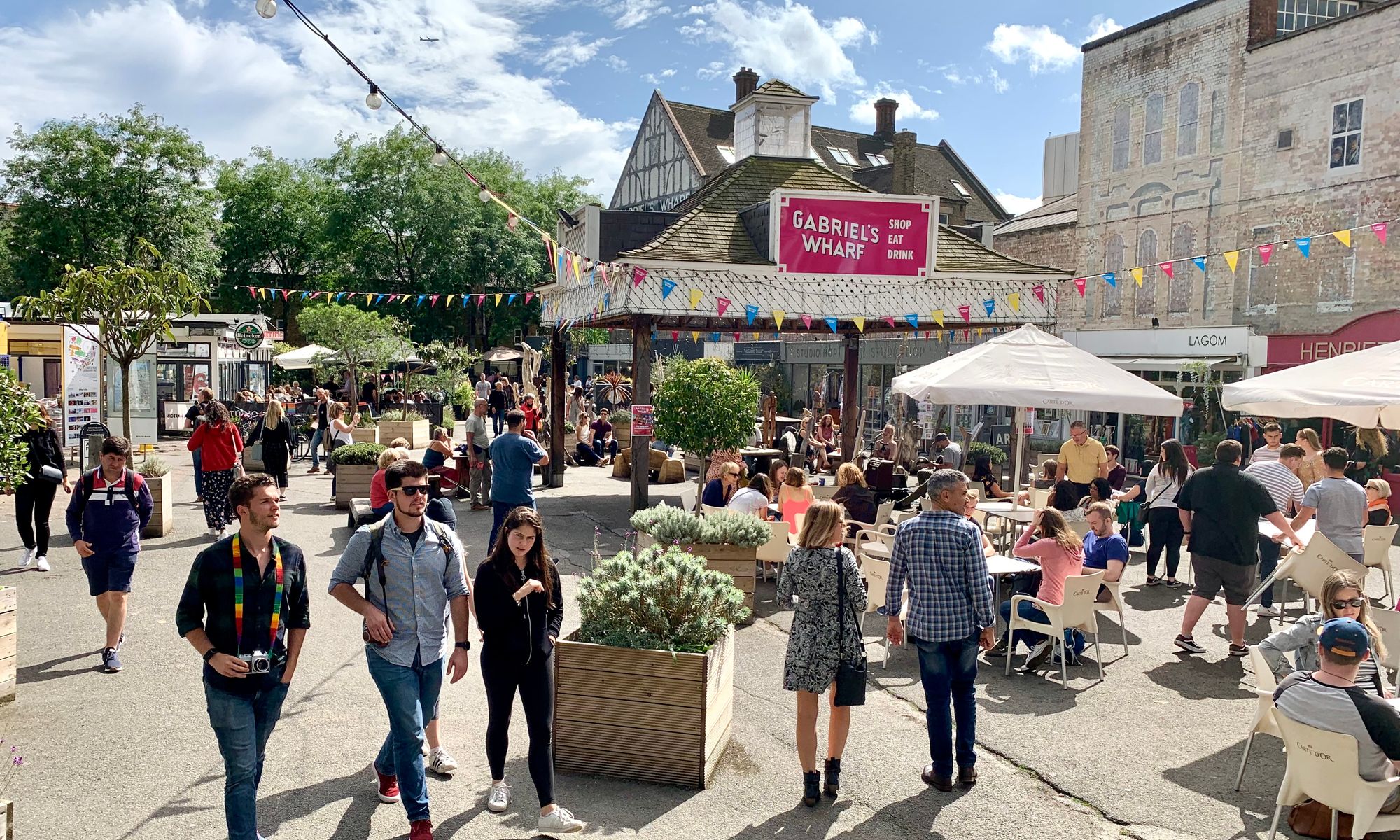
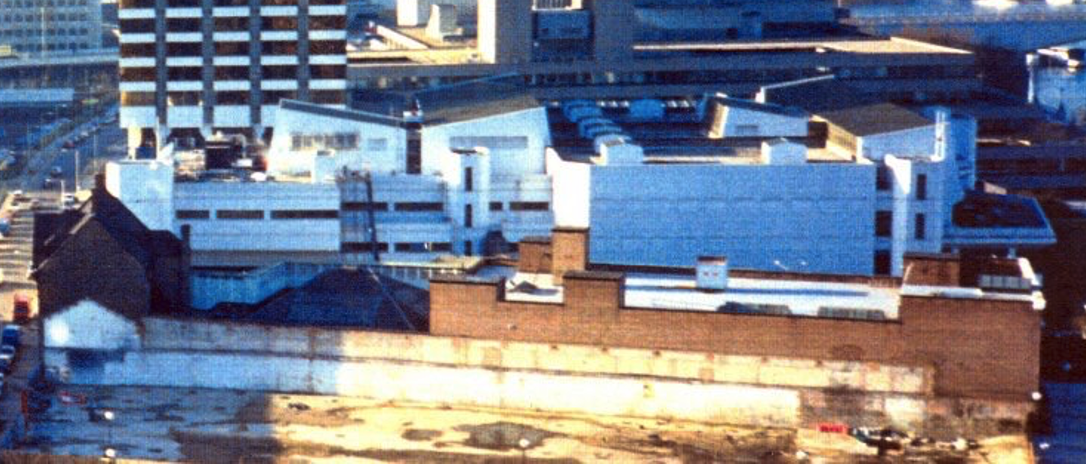
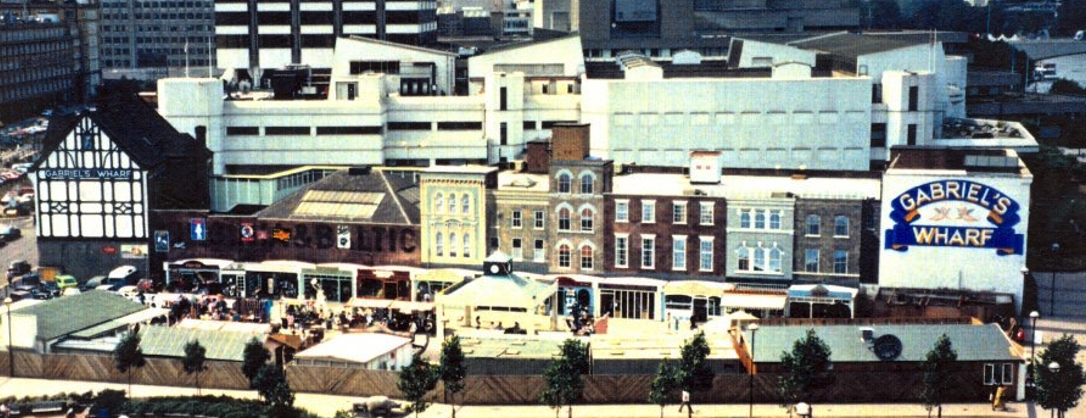
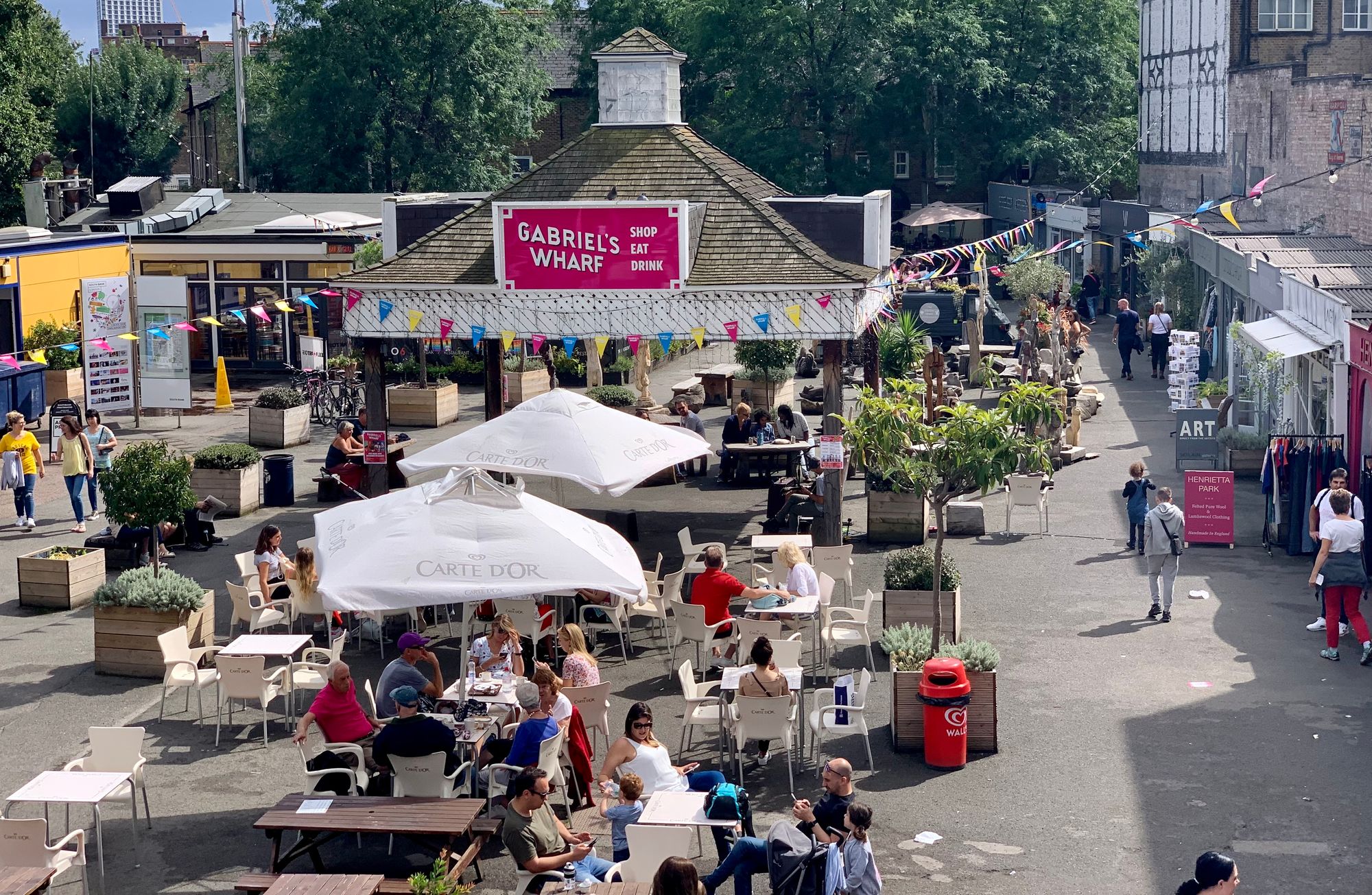
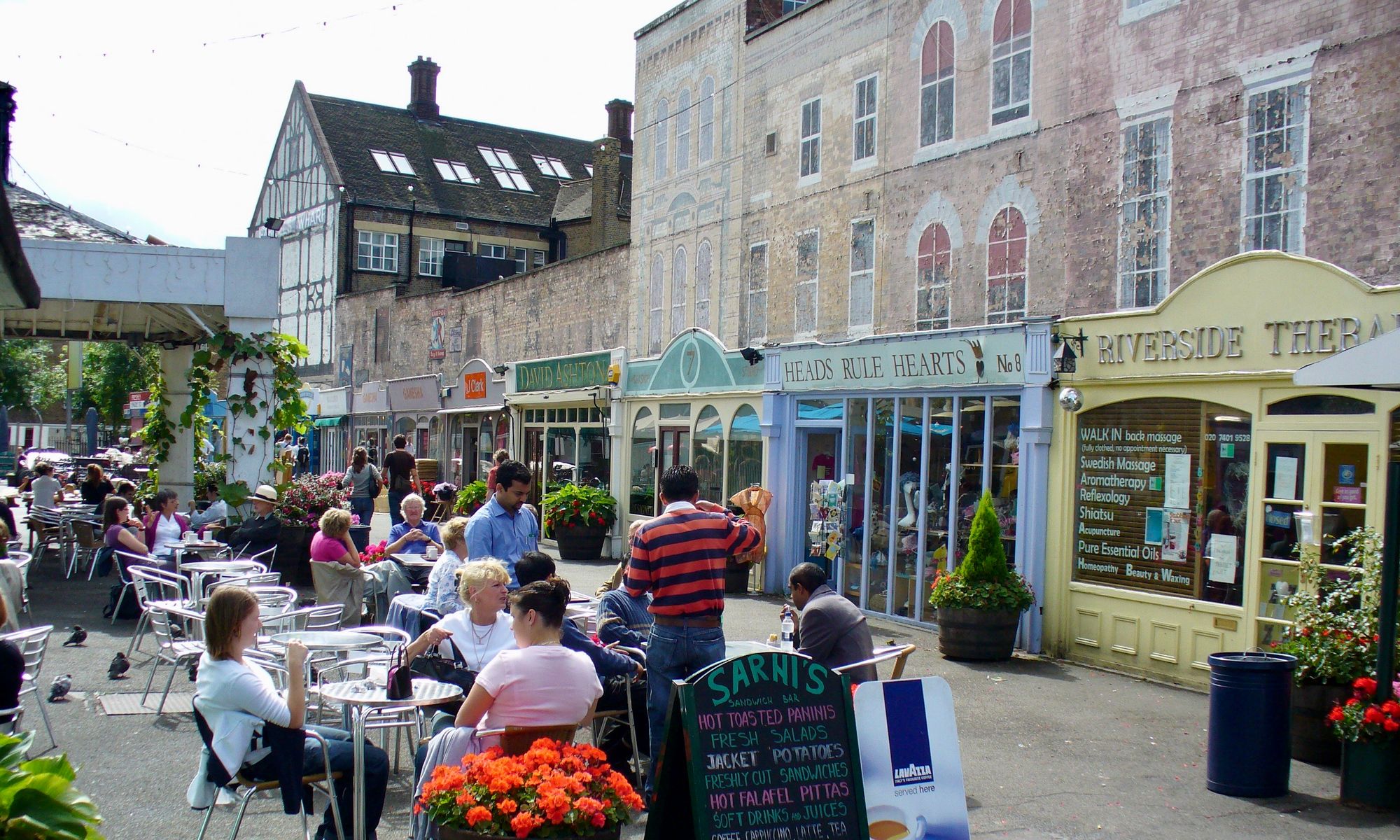
The story of transforming Gabriel's Wharf began in 1988. A close friend, Eric Reynolds of Urban Space, and his team turned a blank wall into a spectacular mural depicting a Georgian shopping street. This quickly became the backdrop to a community of retail workshops, stalls, and restaurants built using garage structures with storefronts designed by artists.
The "lighter, quicker, cheaper" interventions that spurred its transformation were so successful that it still flourishes as a center for shopping and dining more than three decades later.
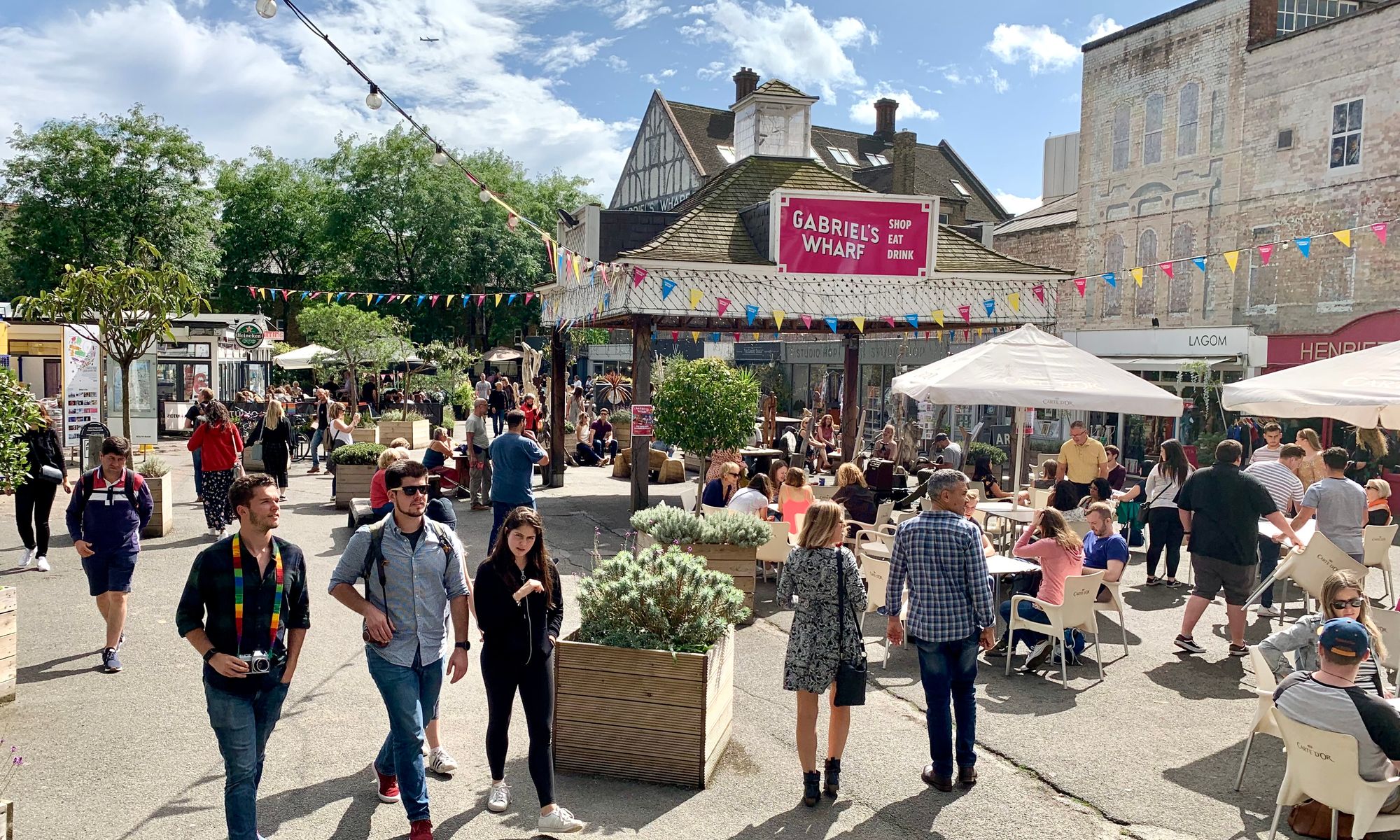
Crest Theatre and Cornell Museum Historical Society
A key part of Old School Square is the Crest Theater, the Cornell Museum, and the Historic Society. All are key gateways leading into the core of Delray. Creating active "porches" or plazas around each building would signal the importance of each institution, making the arrival into downtown inspirational and fun.
We call porches that part of buildings that is outdoors and shared with the public realm such as outdoor eating areas, external displays of goods, etc. The outdoor offerings, activities and amenities in these "porches" catch people's attention and make them interested in what is happening within a building.
For more on "porches":
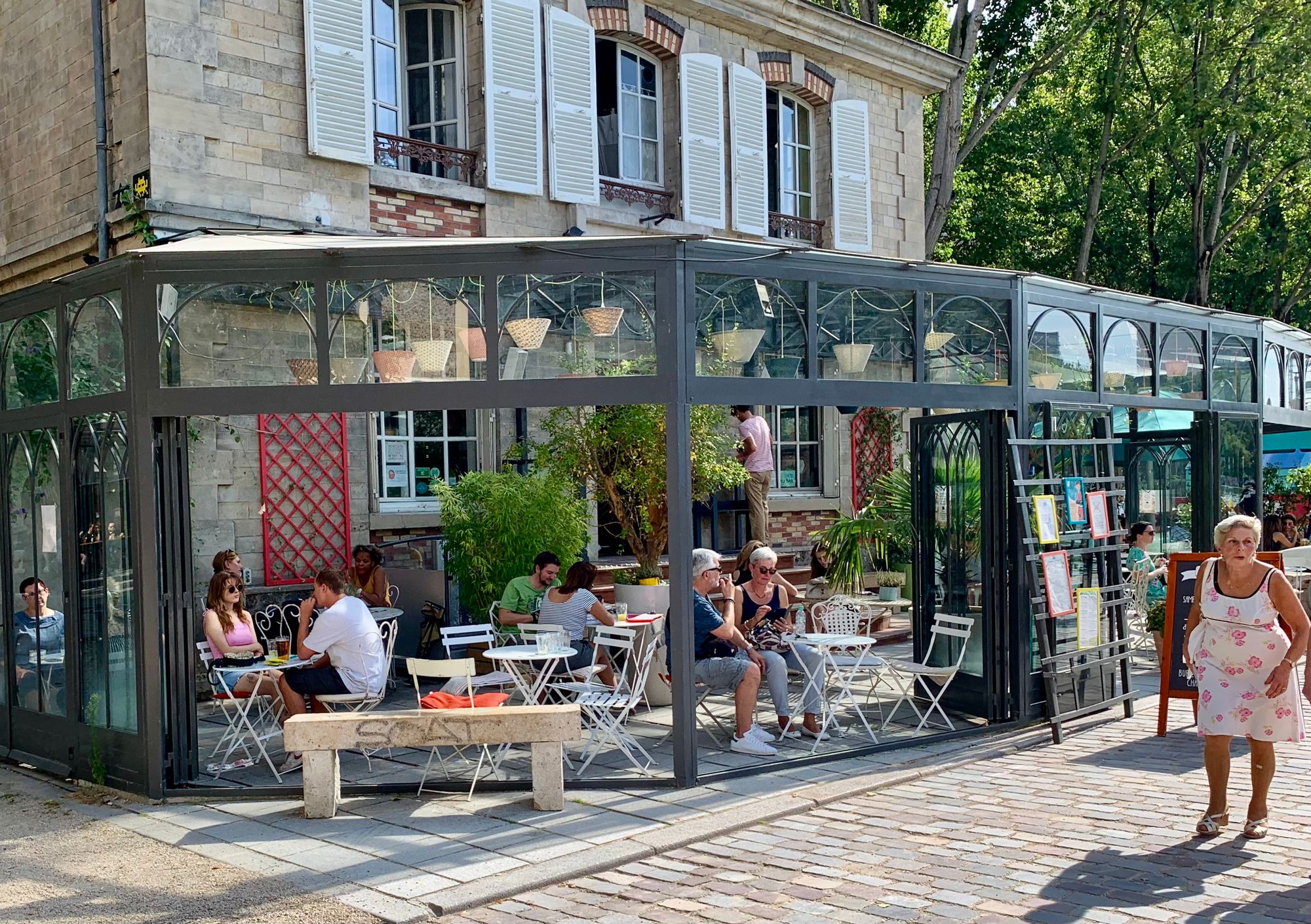
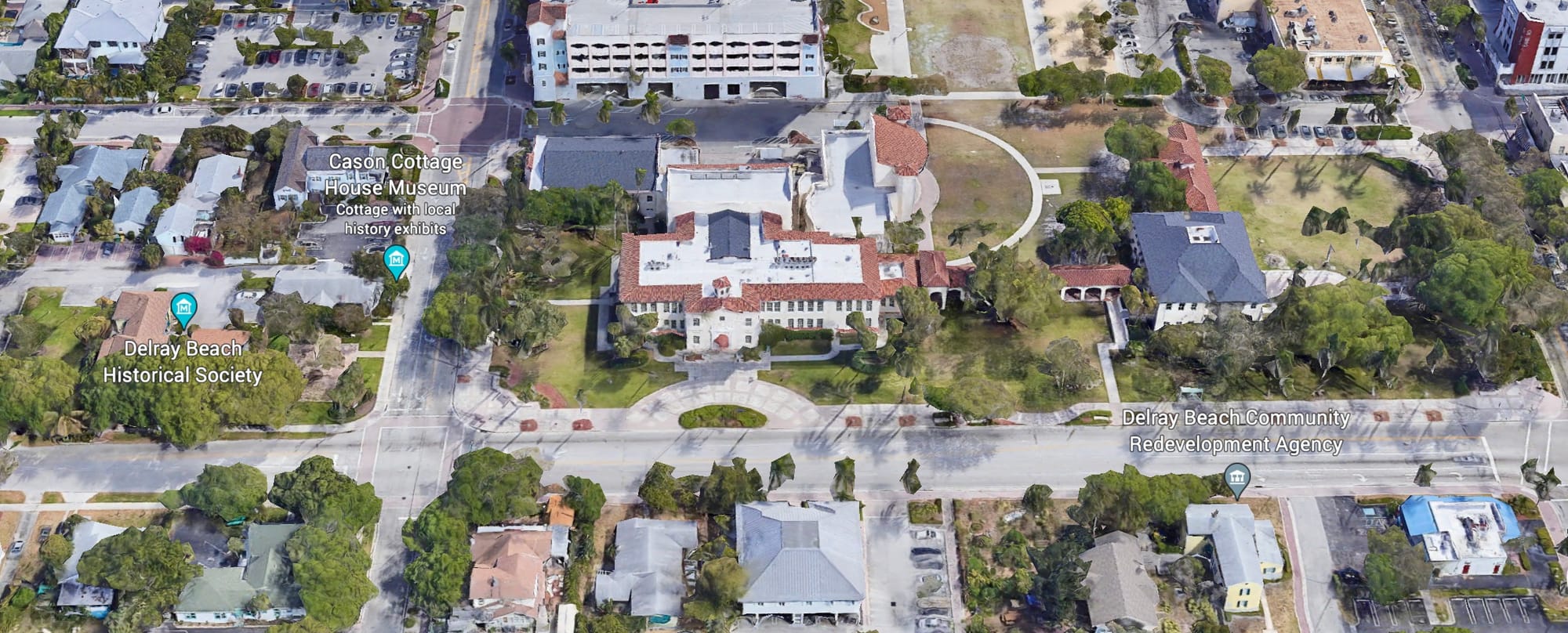
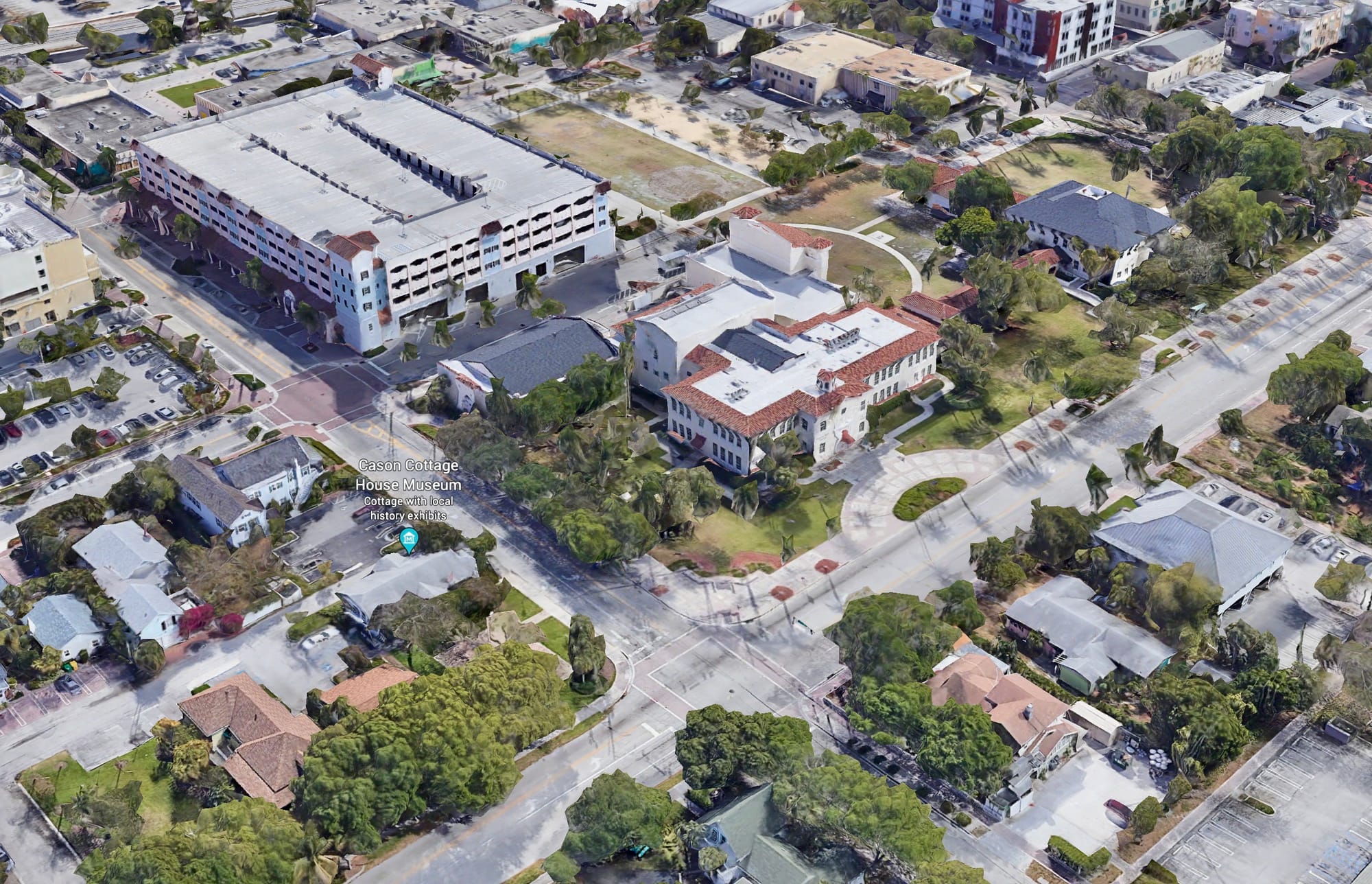
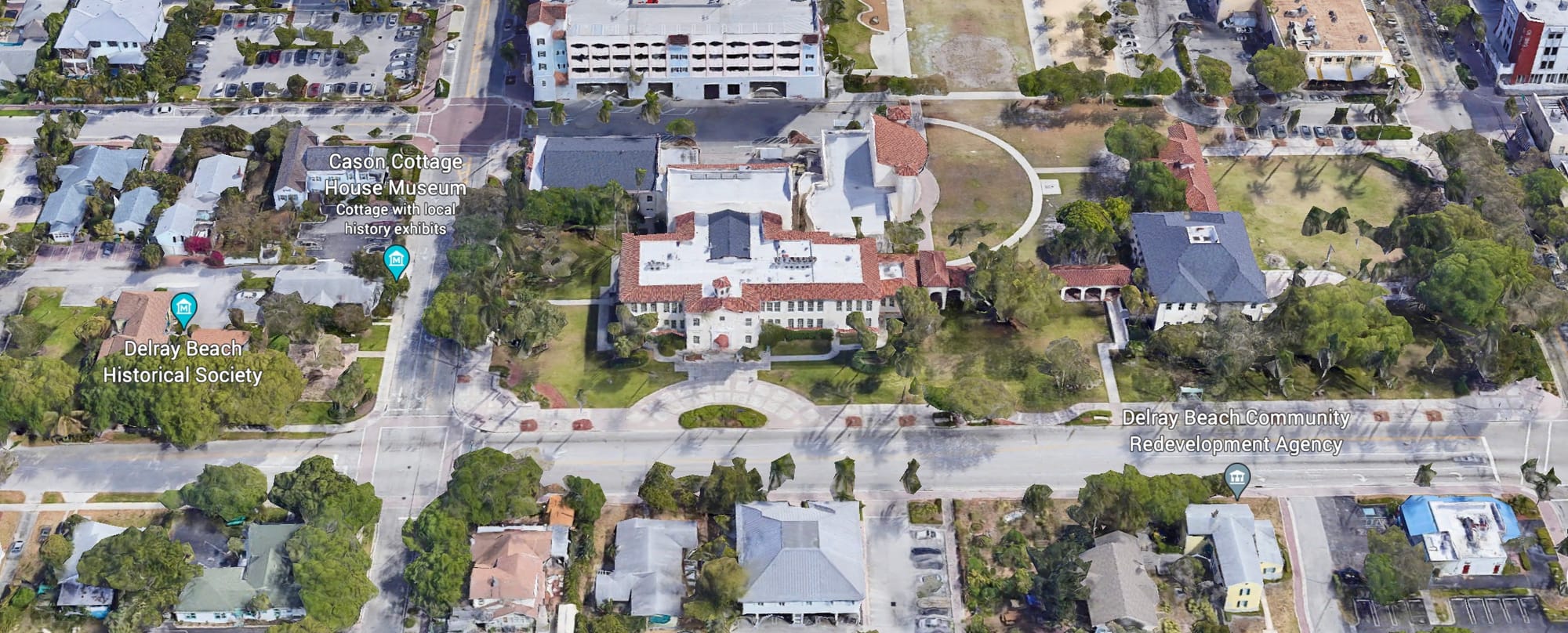
From the Delray Beach Historical Society to the Atlantic Avenue Intersection (and Potentially beyond,
Here you can see how Paris' and Vienna's city halls uses their "front porches" to host all kinds of activities and engage with the community. The buildings of Old School Square can do the same.
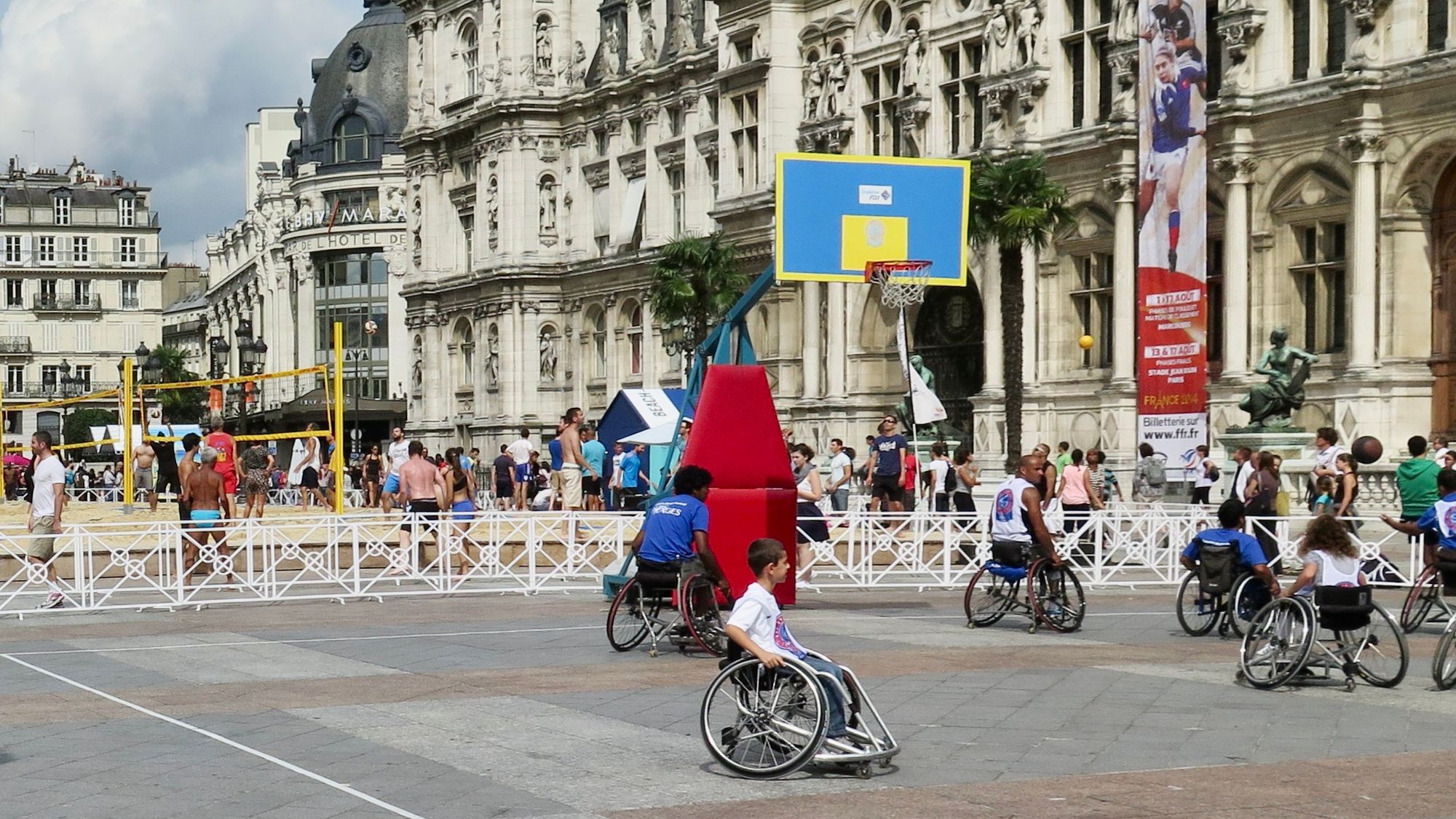
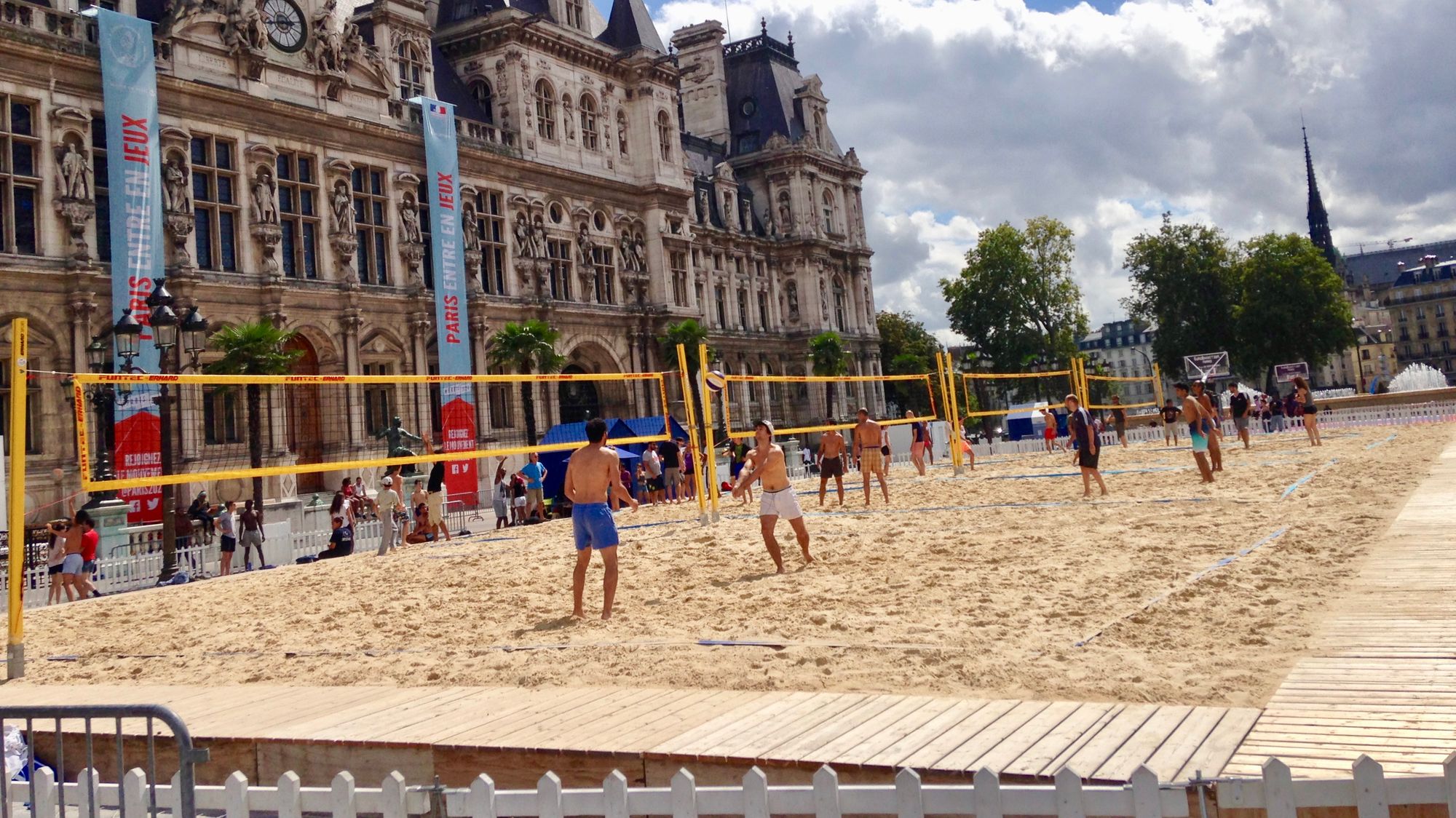
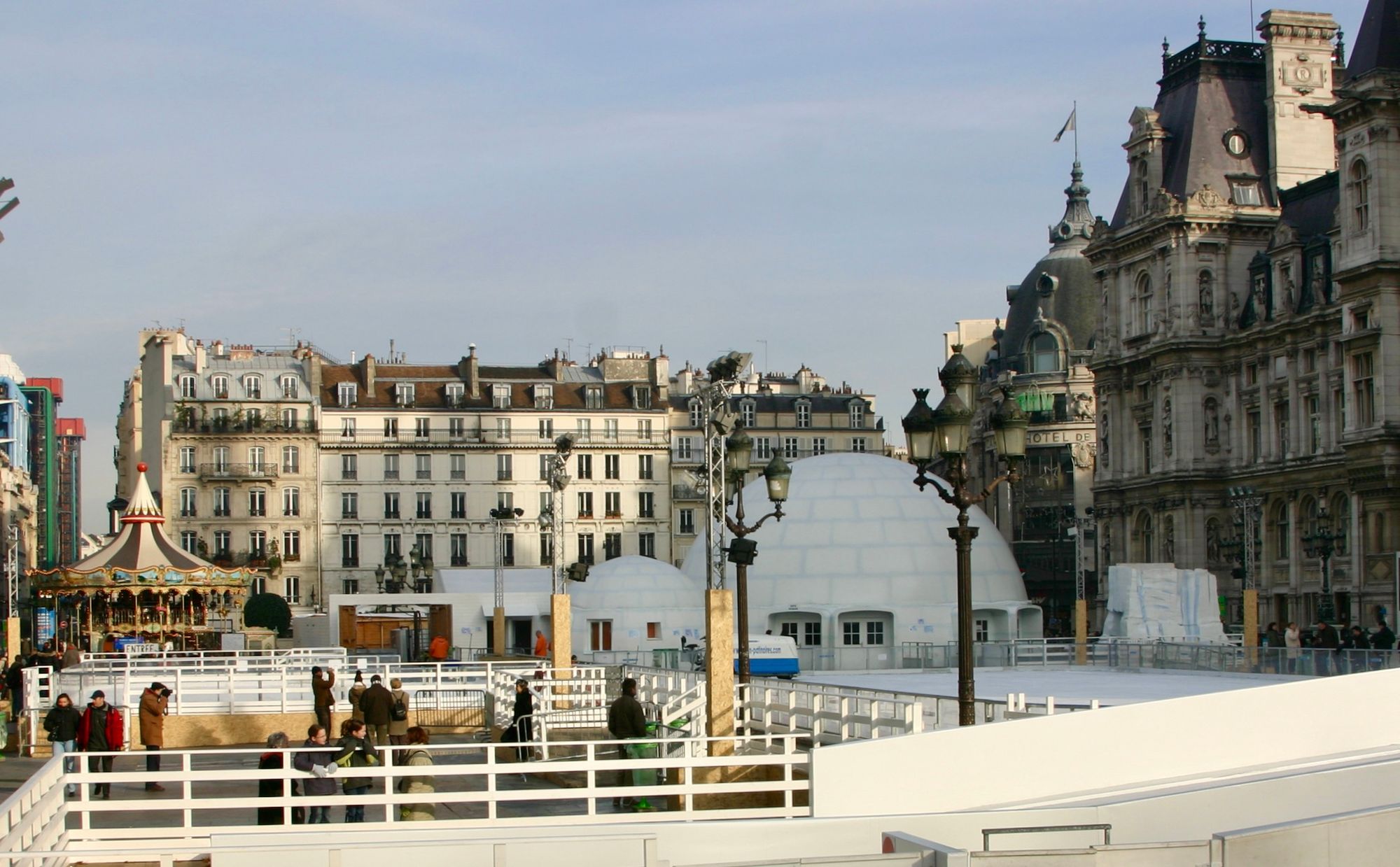
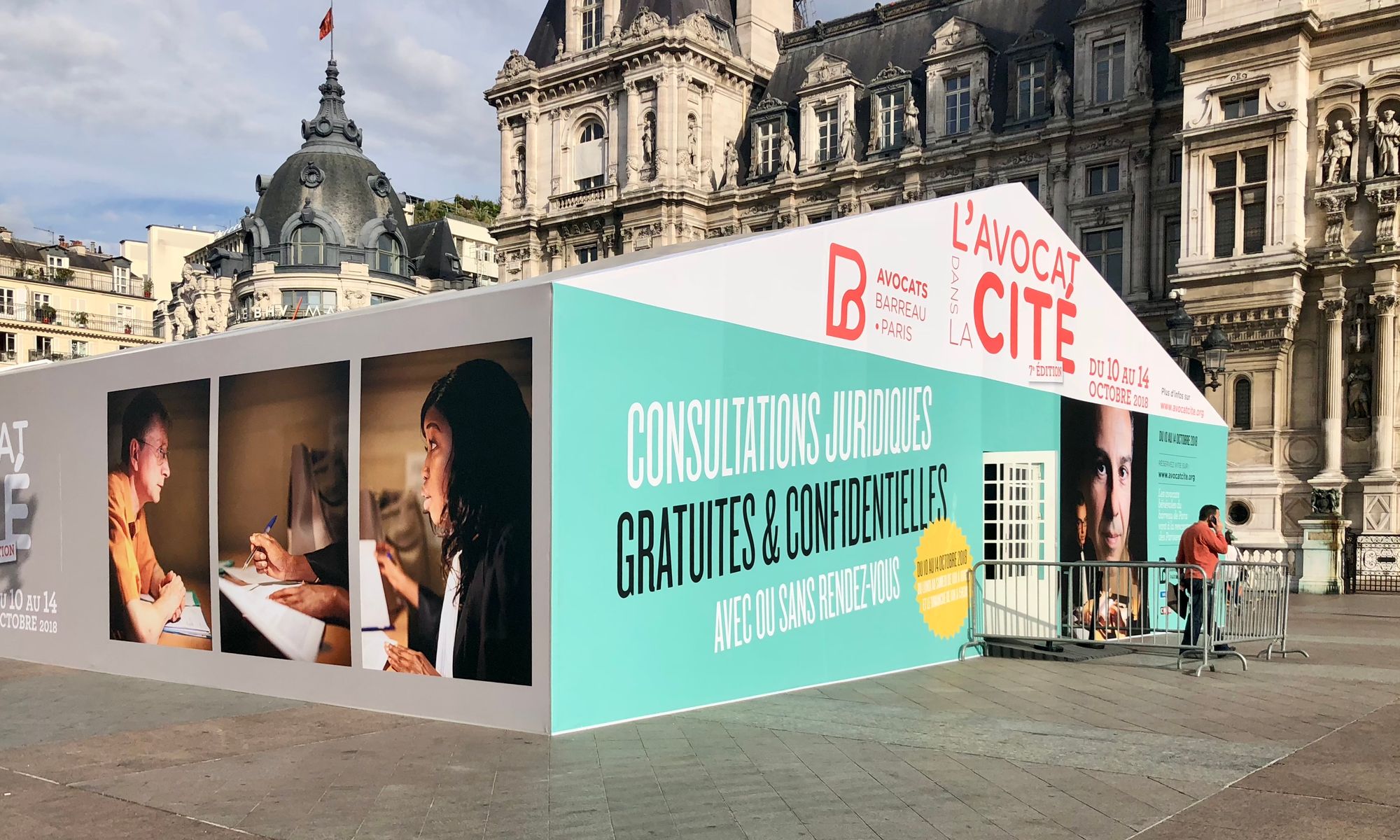
Vienna - City Hall
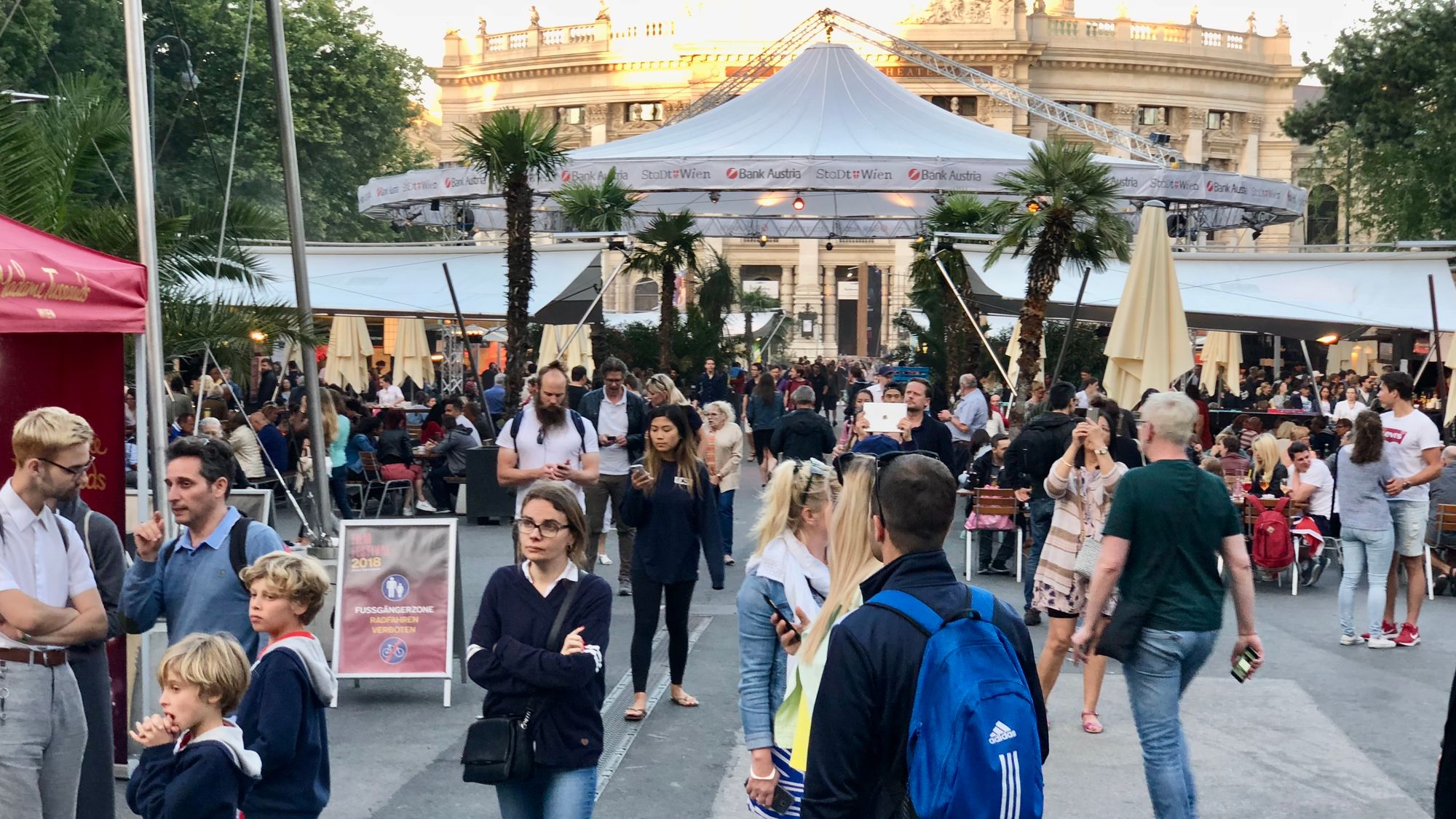
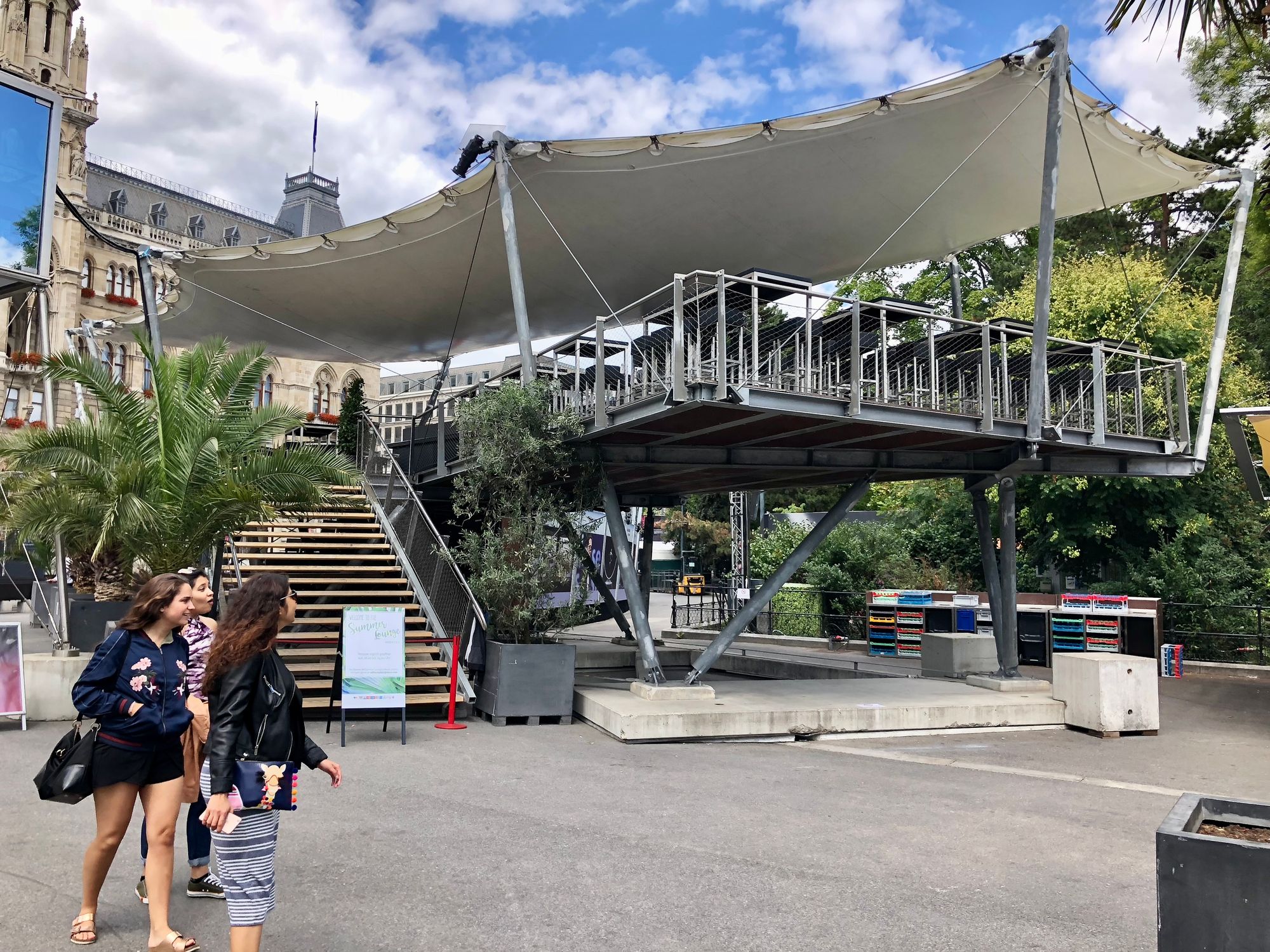
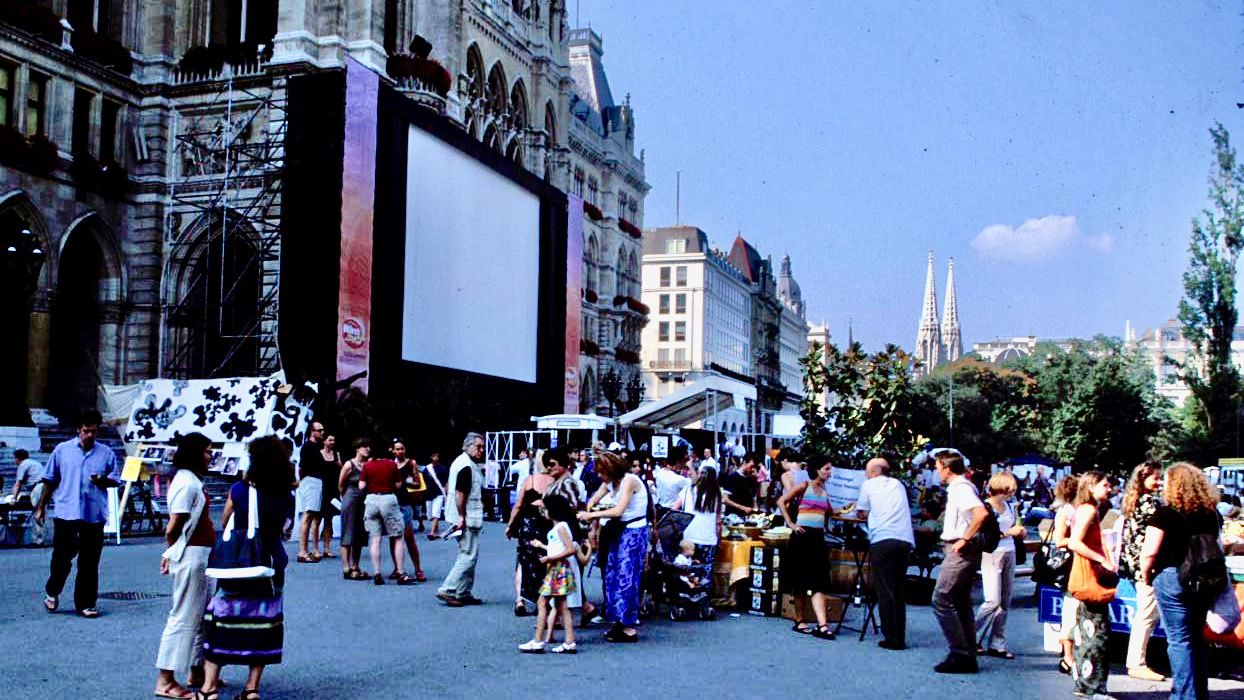
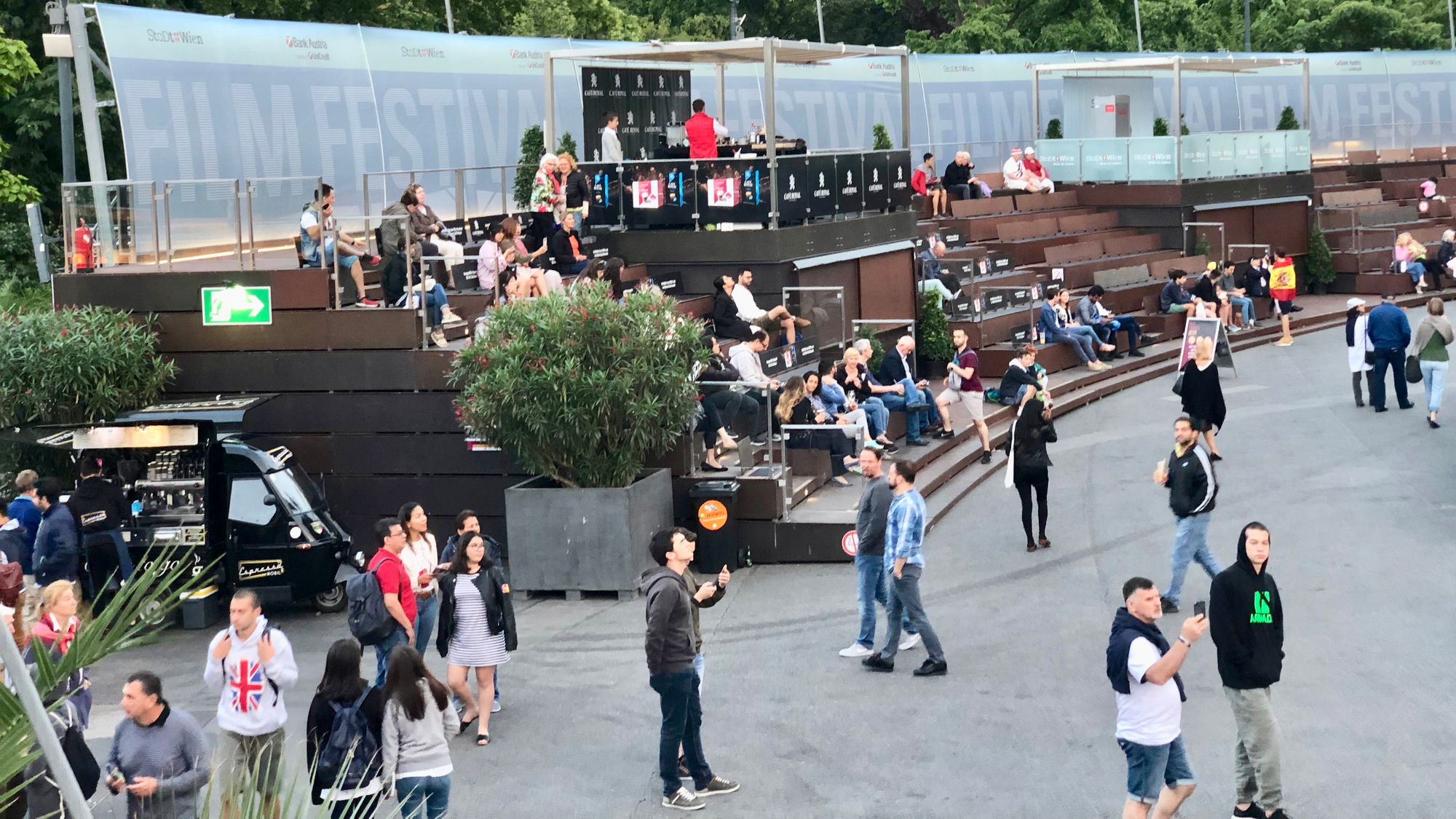
Part of a longer term strategy could also be enhanced by moving the "entranceway" to downtown and Old School Square at least three blocks west, so that by the time vehicles have arrived at Swinton, they are well aware that they are in the center and are already getting oriented.
2) Hubs at Intersections on Atlantic Avenue in Key Locations
Hubs are compact areas full of life and energy. They are places that people are drawn to because there is a lot going on and people are enjoying themselves there. Think of that great spot you love to meet with friends to hang out. Hubs usually incorporate places to eat or drink, interesting outdoor life, local shops, and beautiful or interesting features. The more hubs we can create in a city, the more interesting and appealing it becomes.
There is already a great example of a "hub" in Delray - on Atlantic at 2nd East:
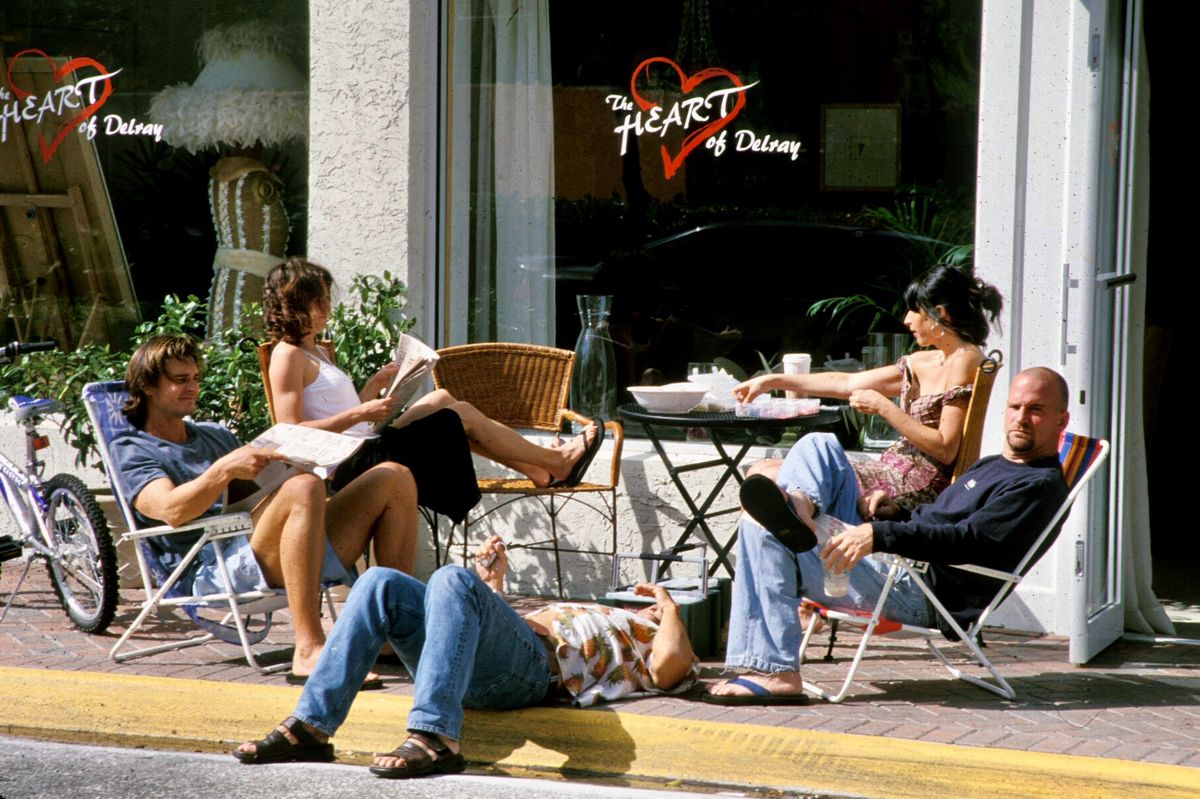
The following experimental hubs could help activate three key destinations along Atlantic Avenue: Between 5th and 6th Avenues (Federal, North and South), from 6th Ave starting on the South side to the Intercoastal, between xxx and xxx, between xxx and A1A on the south side and between xx and Edwards on the north side. Worthing Park also has great potential as a hub.
Worthing Square
Historically, Worthing Park felt open and welcoming. Today, it is overrun with trees and plantings that give it a sense of being closed off. Could it be revitalized?
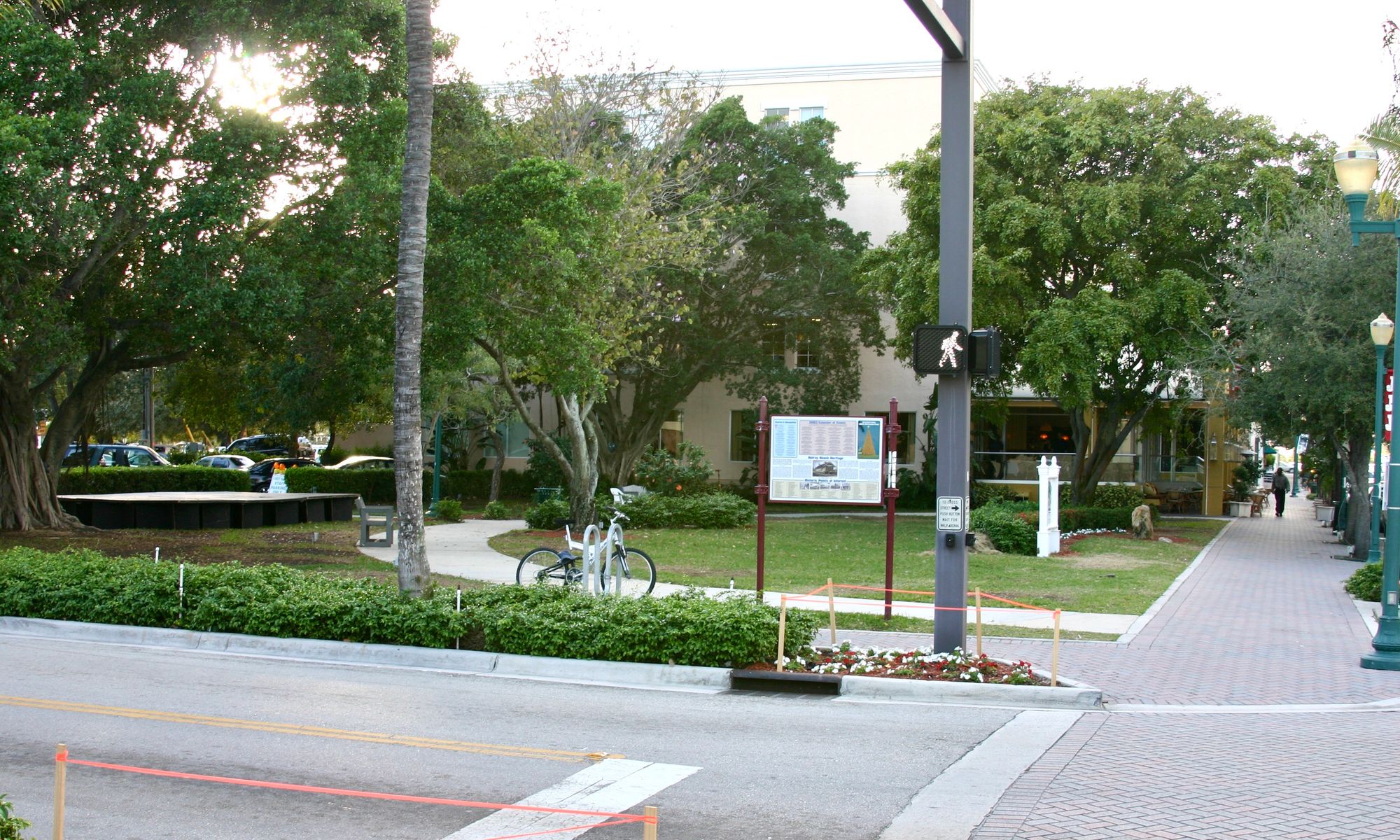
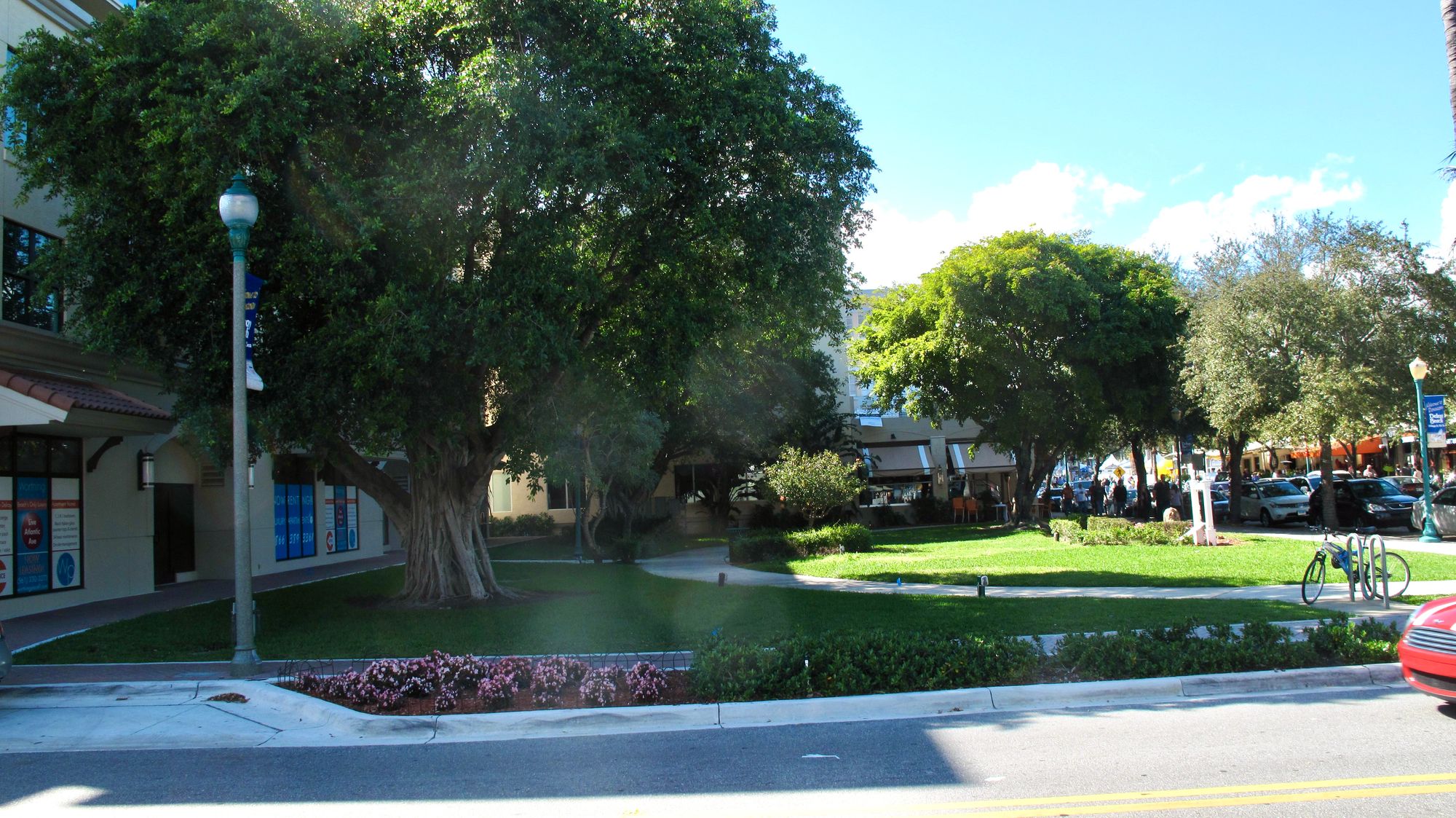
Historic, more open park in 2003 and 2011
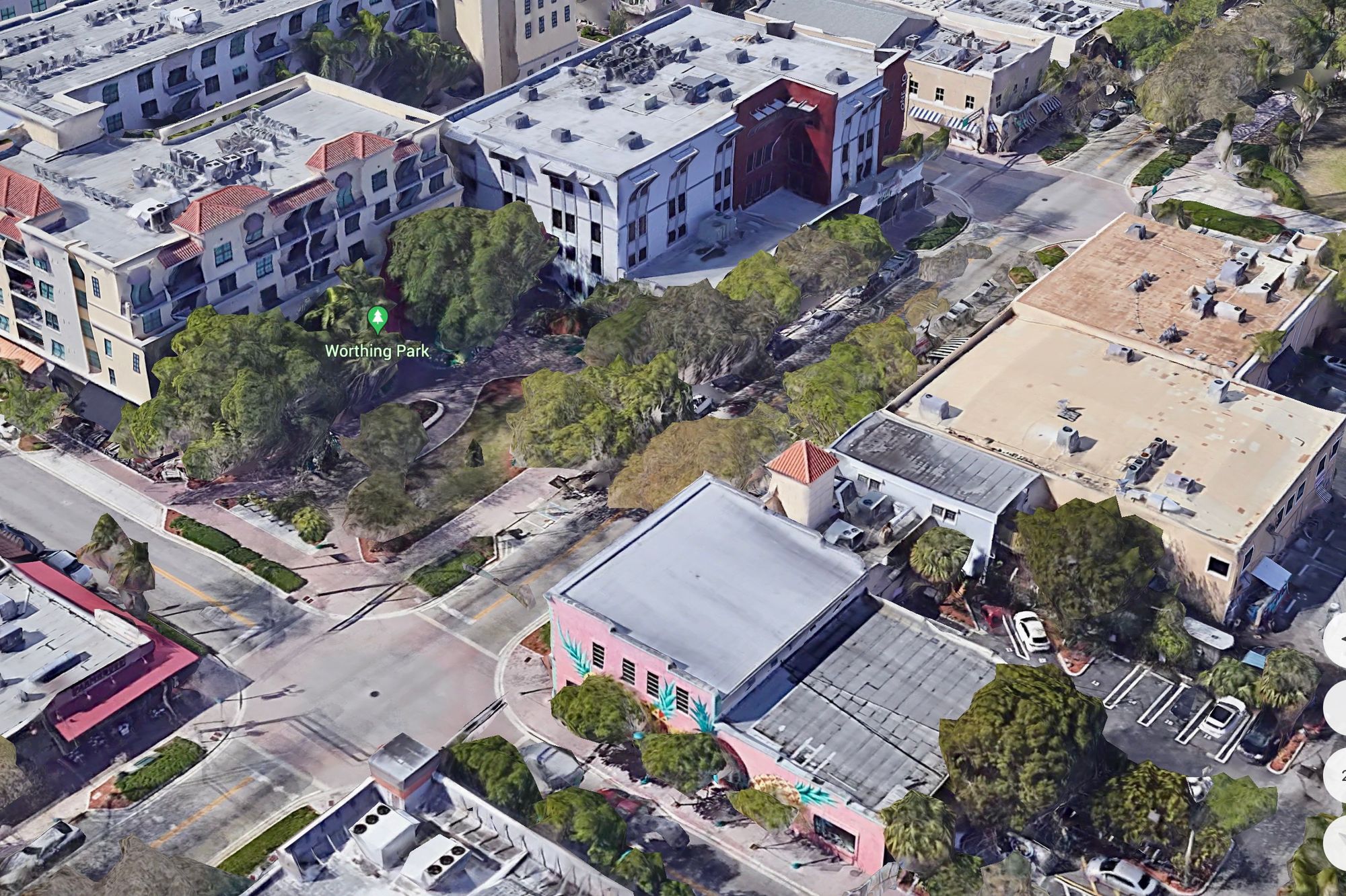
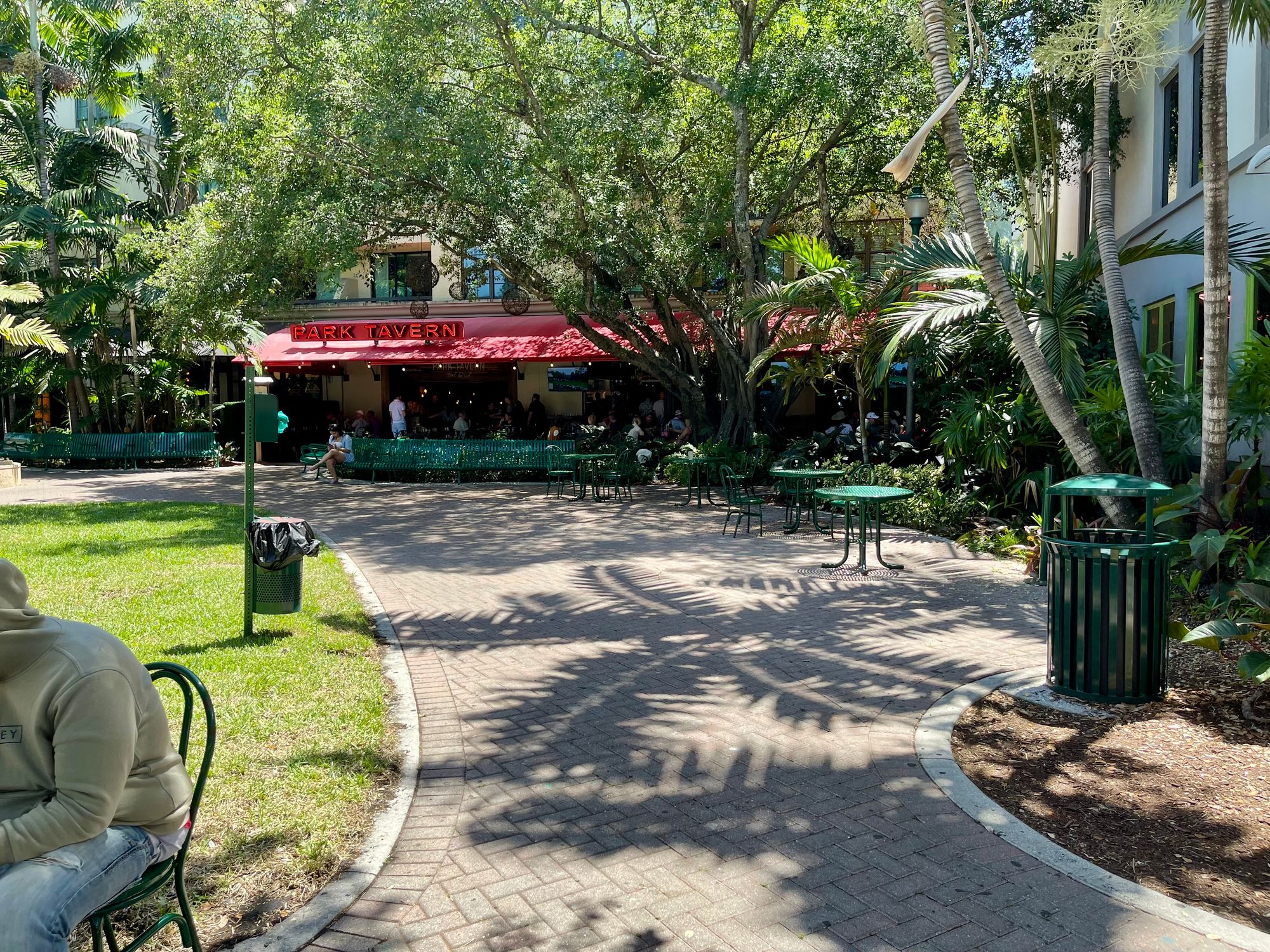
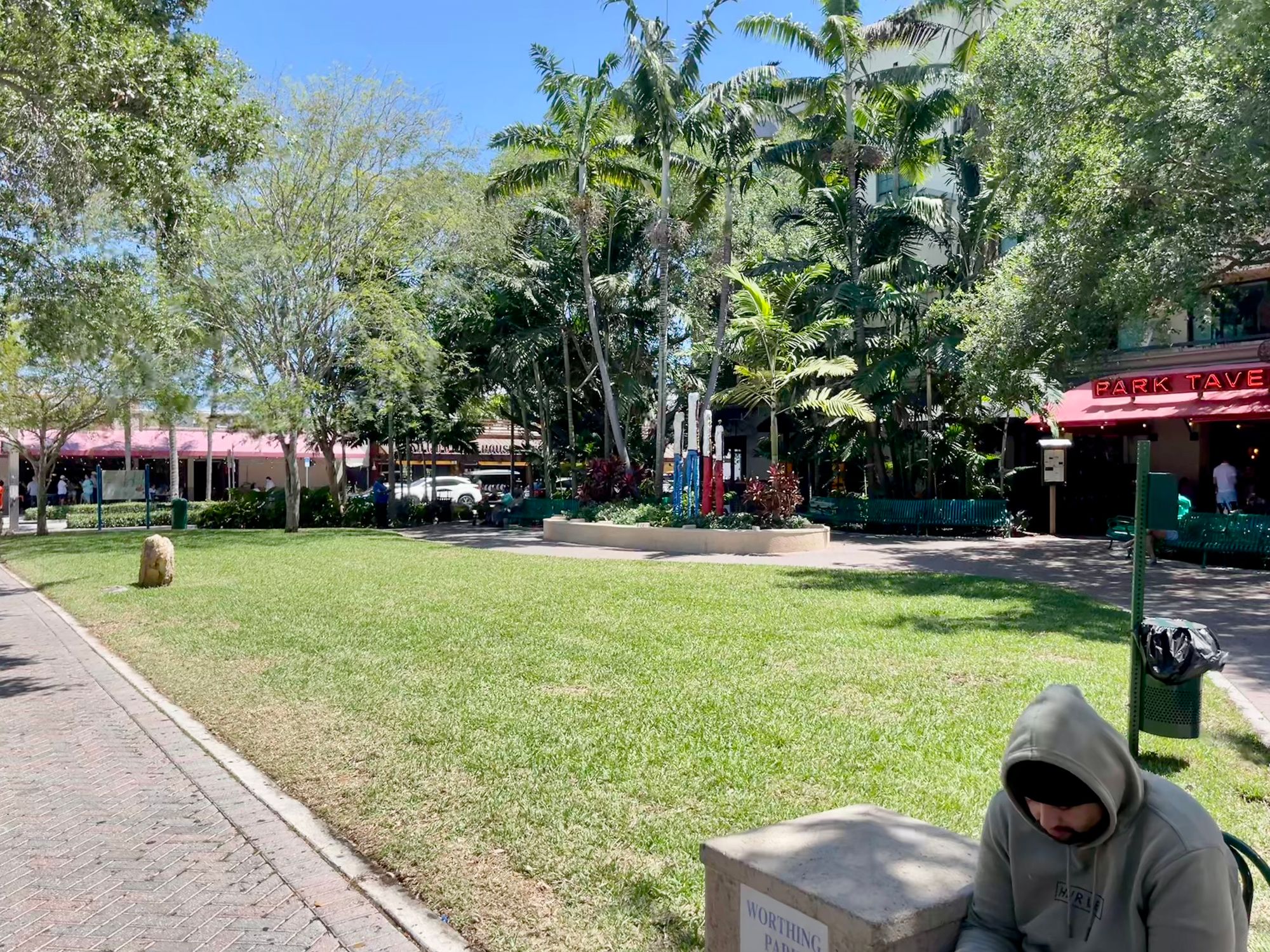
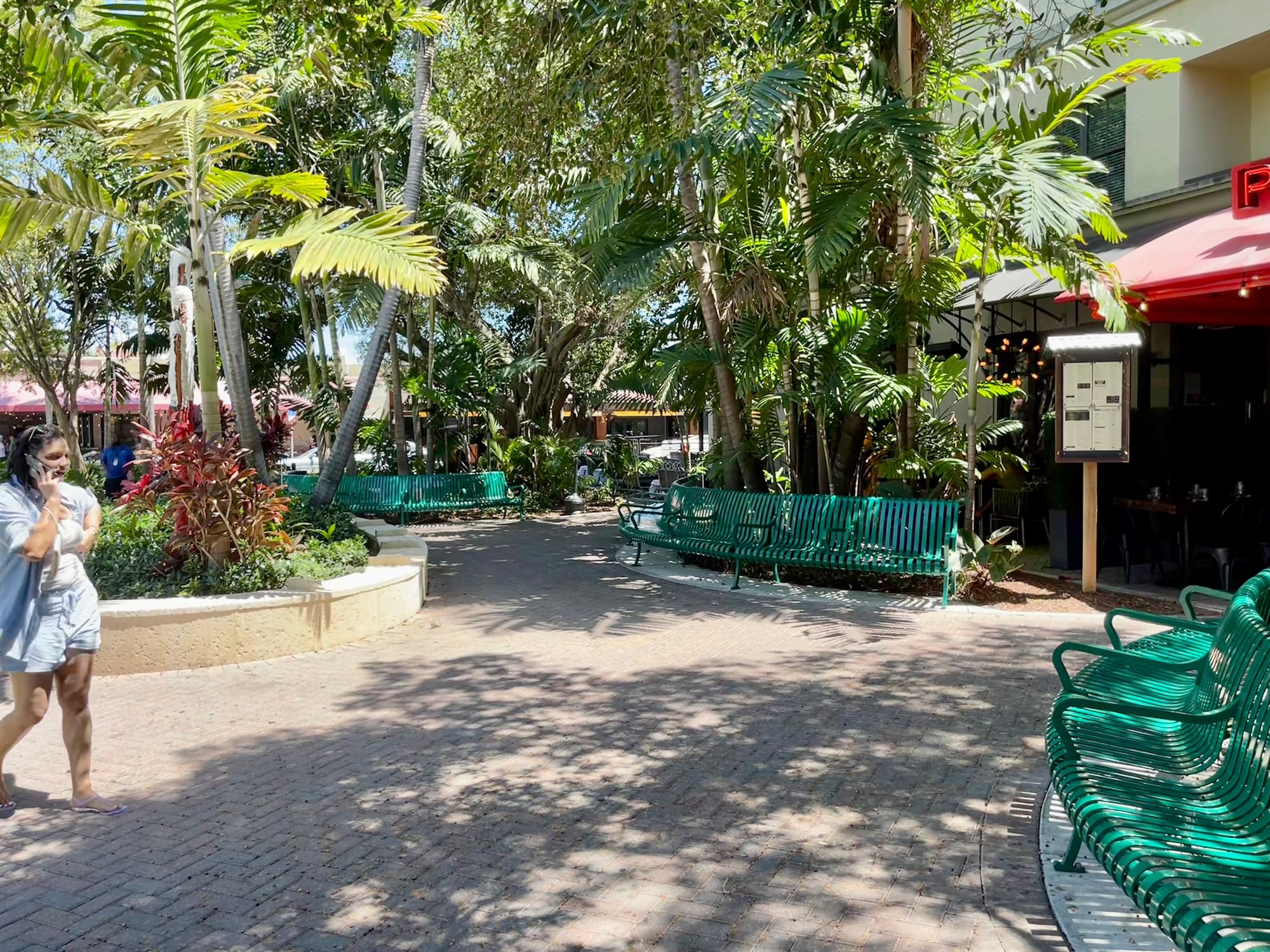
Turning Worthing Park into a square is an important intervention.
It could easily become a vibrant hub by:
- Opening up the edges and making them more engaging
- Adding bright features and minimizing the dark and foreboding presence it currently has through pruning and possibly the removal of some palm trees
- Strong programming
- Adding a focal point like a sculpture or water feature
- Adding temporary kiosks offering items like ice cream and light food with colorful umbrellas and seating
3) North and South Federal to Inter Coastal
North/South Streets on Atlantic
A critical decision needs to be part of this experimental phase. Are the North/South Streets on Atlantic designed to move traffic through or to be destinations that people want to arrive at? If it is the latter, a few intersections could be turned into "hubs" through commercial and social life activations, and the connections into neighborhoods would be greatly enhanced.
The biggest obstacle for growing the downtown north and south is the over-designing of roads and intersections. When there are ideas about activating wide streets and changing them into gateways by adding activities/destinations, people are conditioned to say, "What about the traffic?" Instead, we need to ask, "How do we create a walkable, socially and economically rich environment to expand our downtown experience"? Changing the dialogue creates the paradigm change that communities need in order to shape their future. There is no government agency responsible for sidewalks and how they can impact social life and local economies. The responsibility therefore falls to the community.
Our Findings
One clear finding is that two lane streets, like 2nd Avenue and Atlantic, create a more relaxed atmosphere that is conducive to social and commercial activity. However, when they grow to three lanes or add a turn lane, they change dramatically. They start to feel too hectic and erode the pleasant atmosphere of the area.
When you grow them to four lanes or more, people become obstacles or friction to the primary goal of traffic throughput and the message is "stay away or take your life into your own hands...especially children and the elderly." Even adding bikes creates another level of complication and therefore stress. The number of people killed in intersections as the number of lanes increases needs to be better understood. Sharing space by making streets and intersections narrower and more welcoming for everybody can be an agenda that leads to a brighter and safer future.
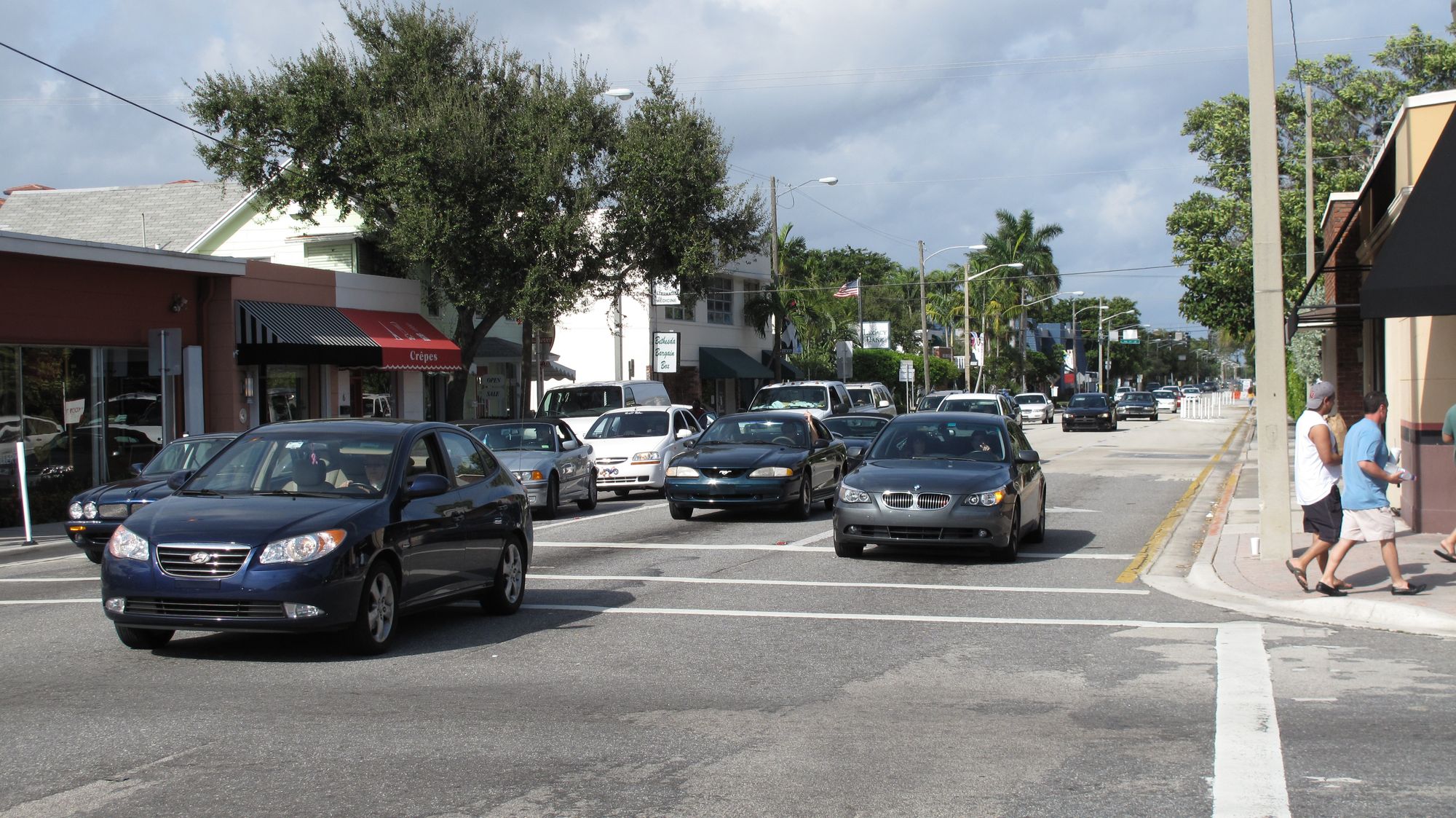
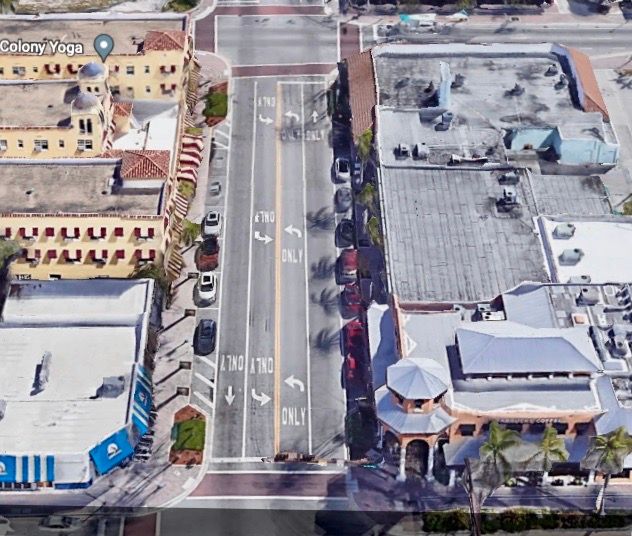
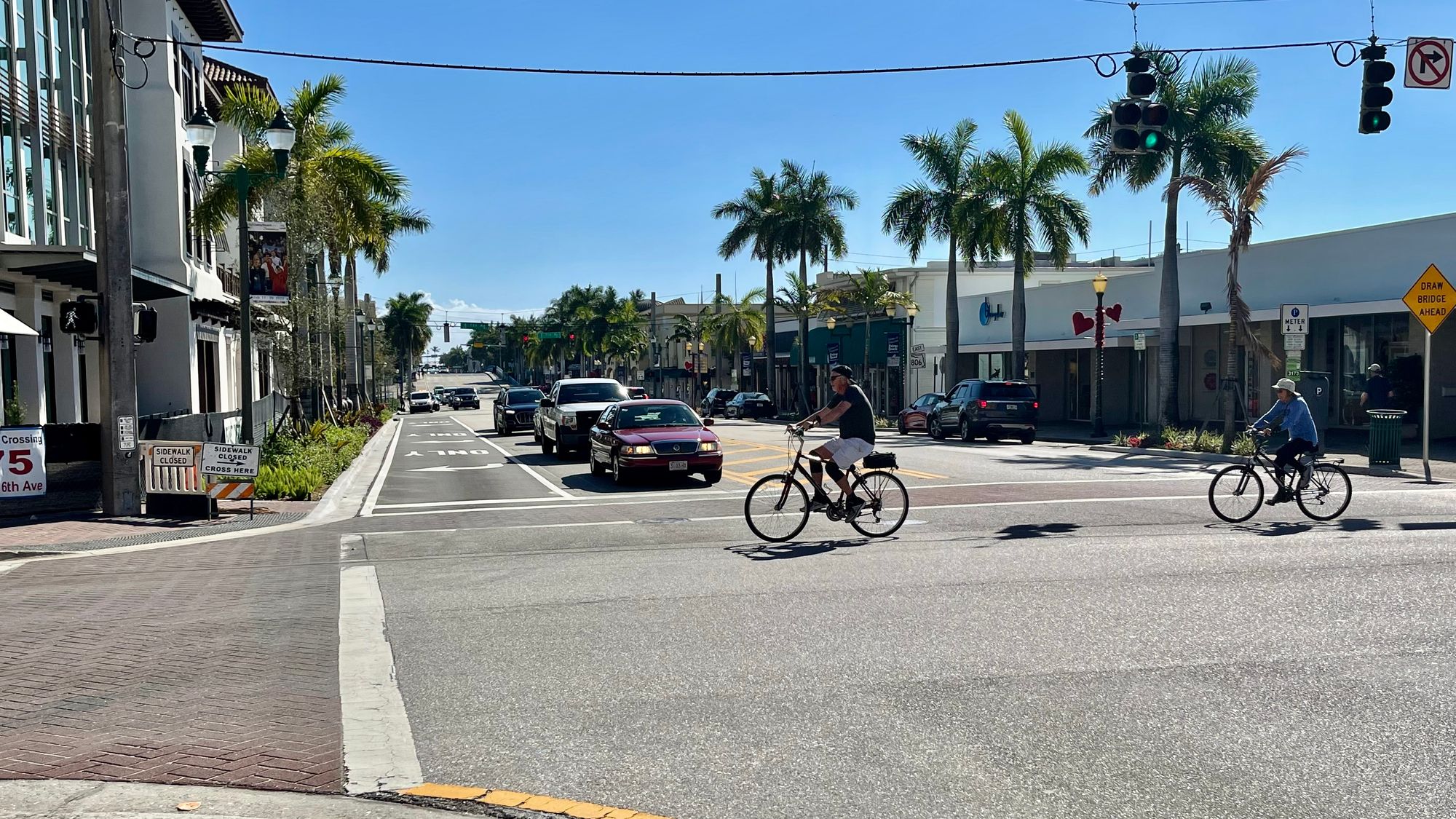
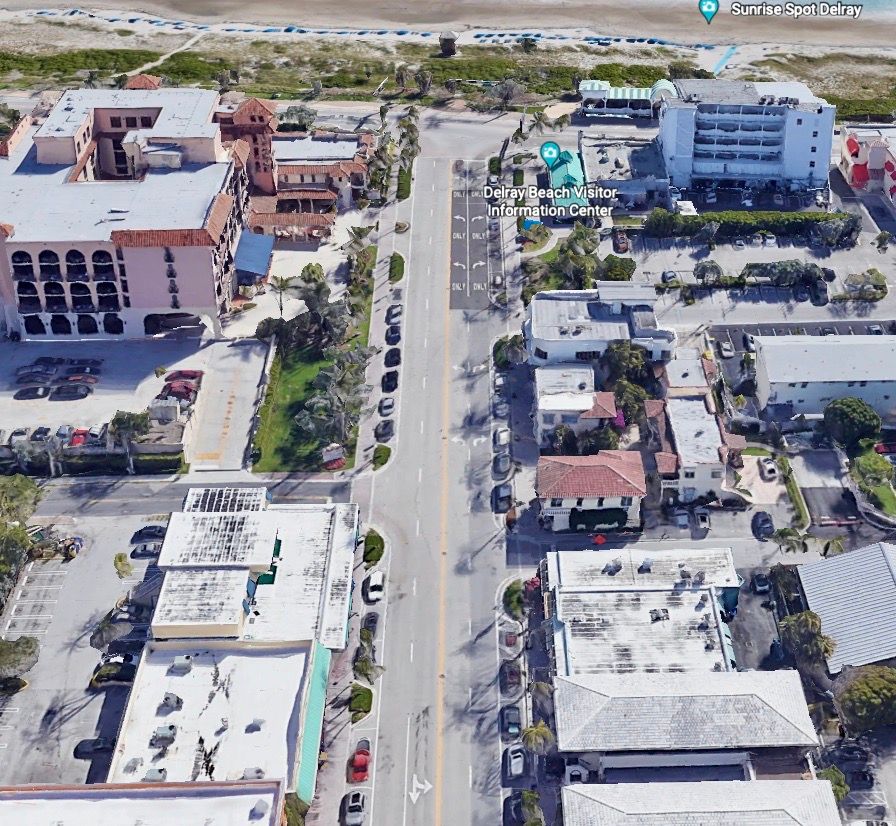
4) Create a Waterfront Promenade on the Inter Coastal
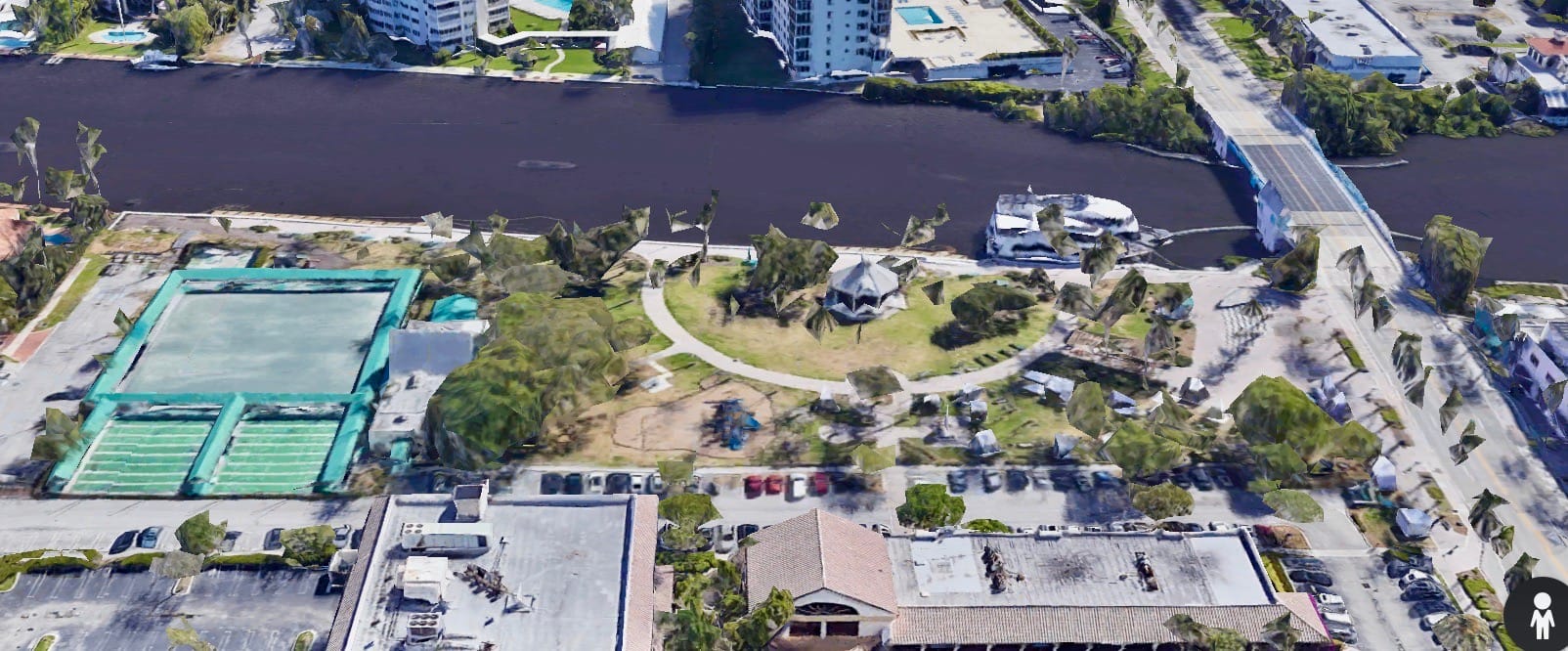
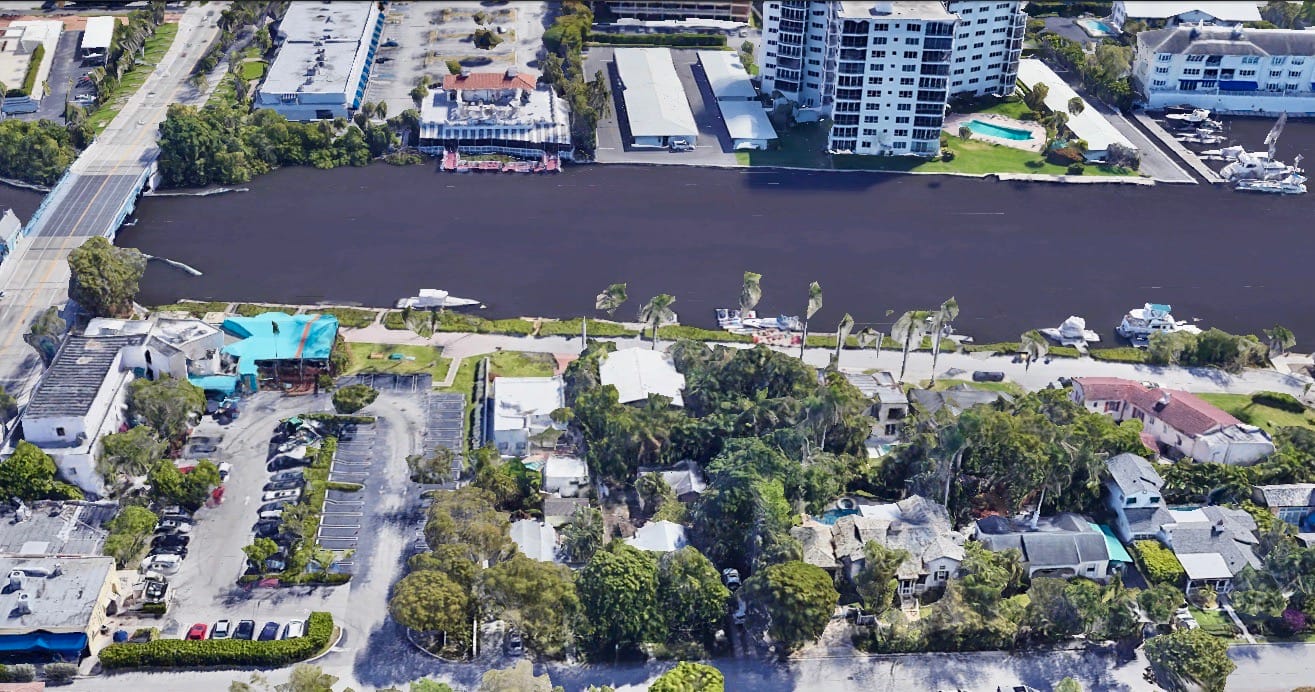
Eating on the water is an experience that everyone enjoys, but so is walking along the water. The Delray beach and the west side of the Inter Coastal have the beginnings of great promenades. Adding a string of small food offerings like food trucks or kiosks, especially with outdoor seating, can greatly enhance the experience of walking in these areas.
Below, you can see how the temporary restaurants along the Seine in Paris create a major hub on a formerly desolate area.
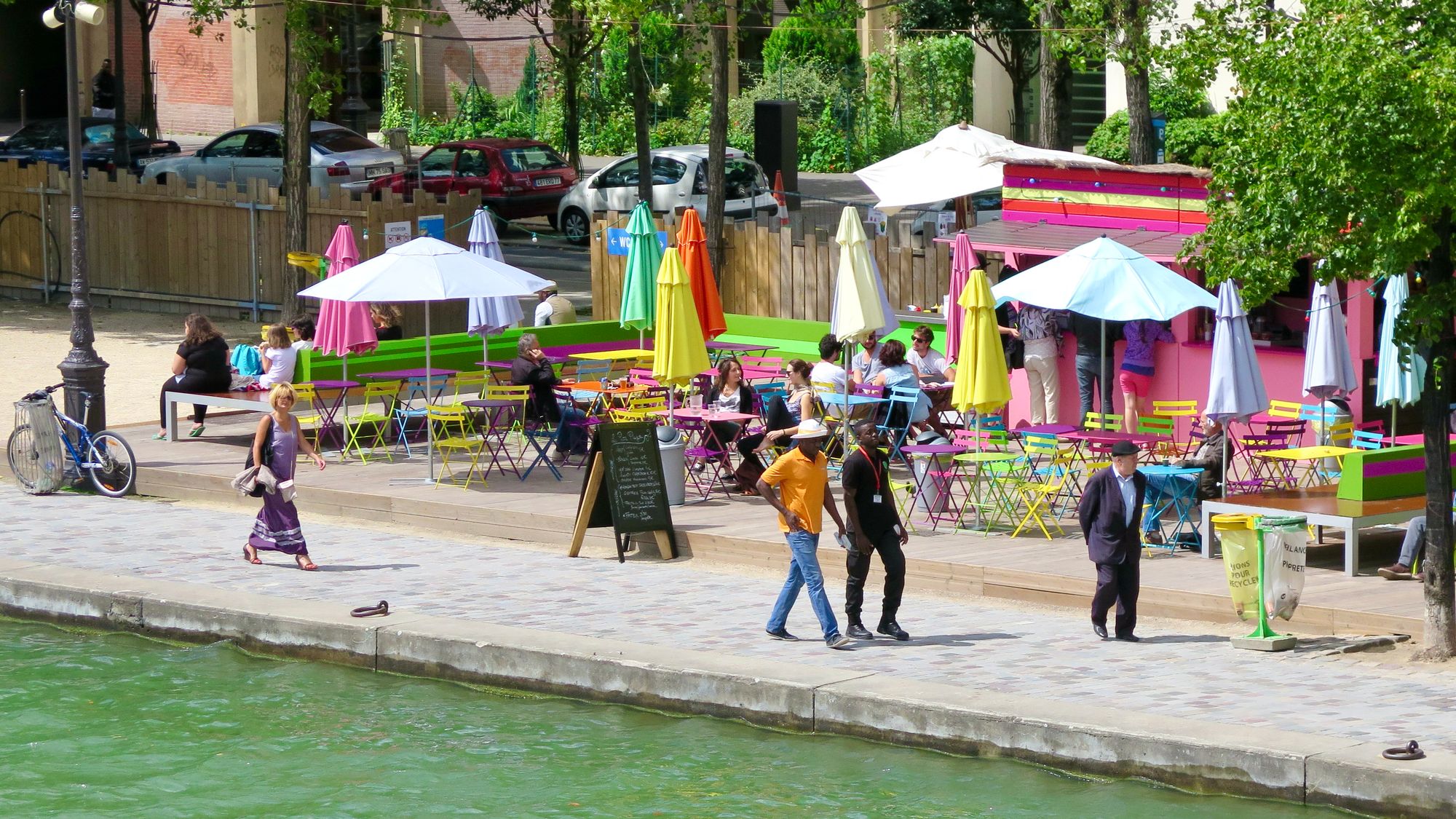
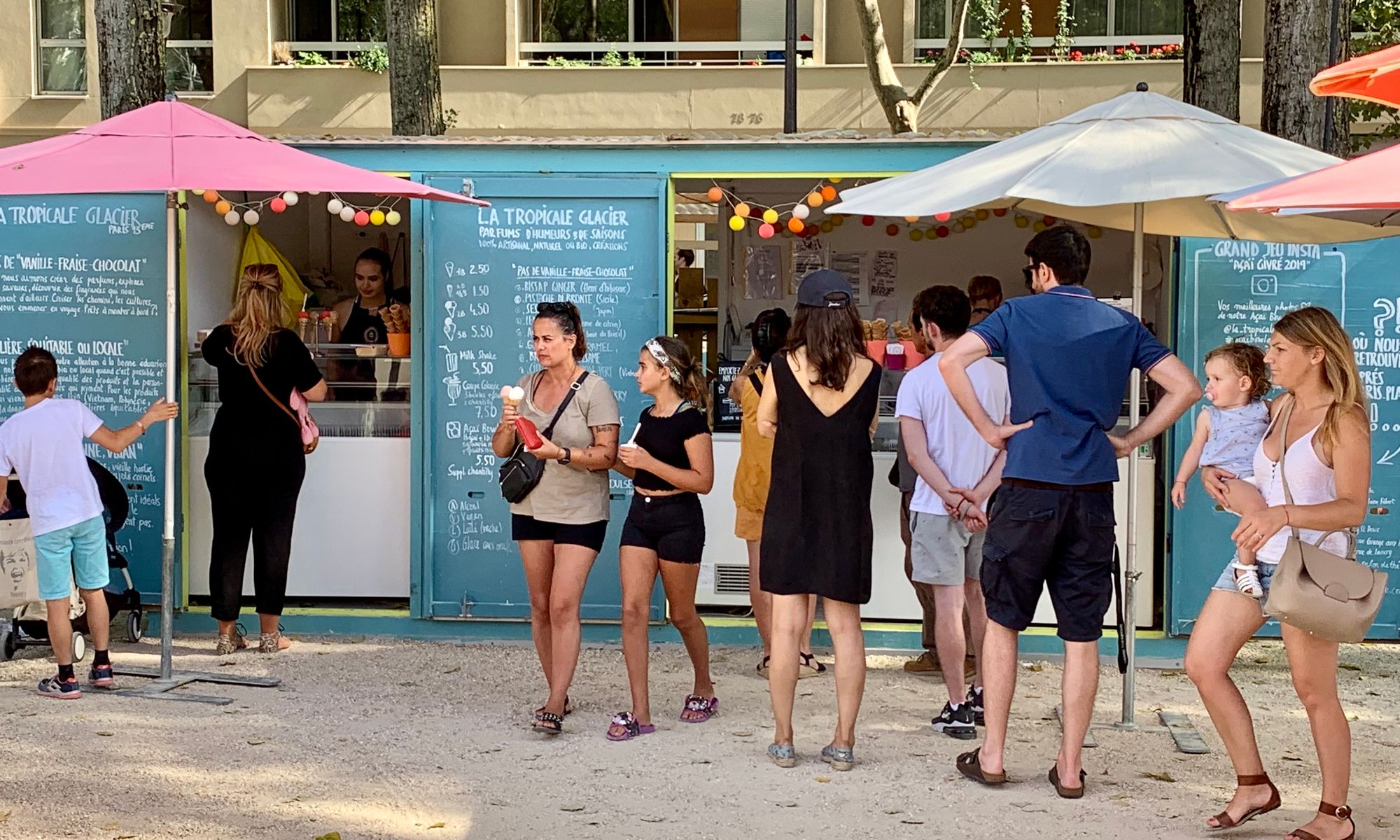
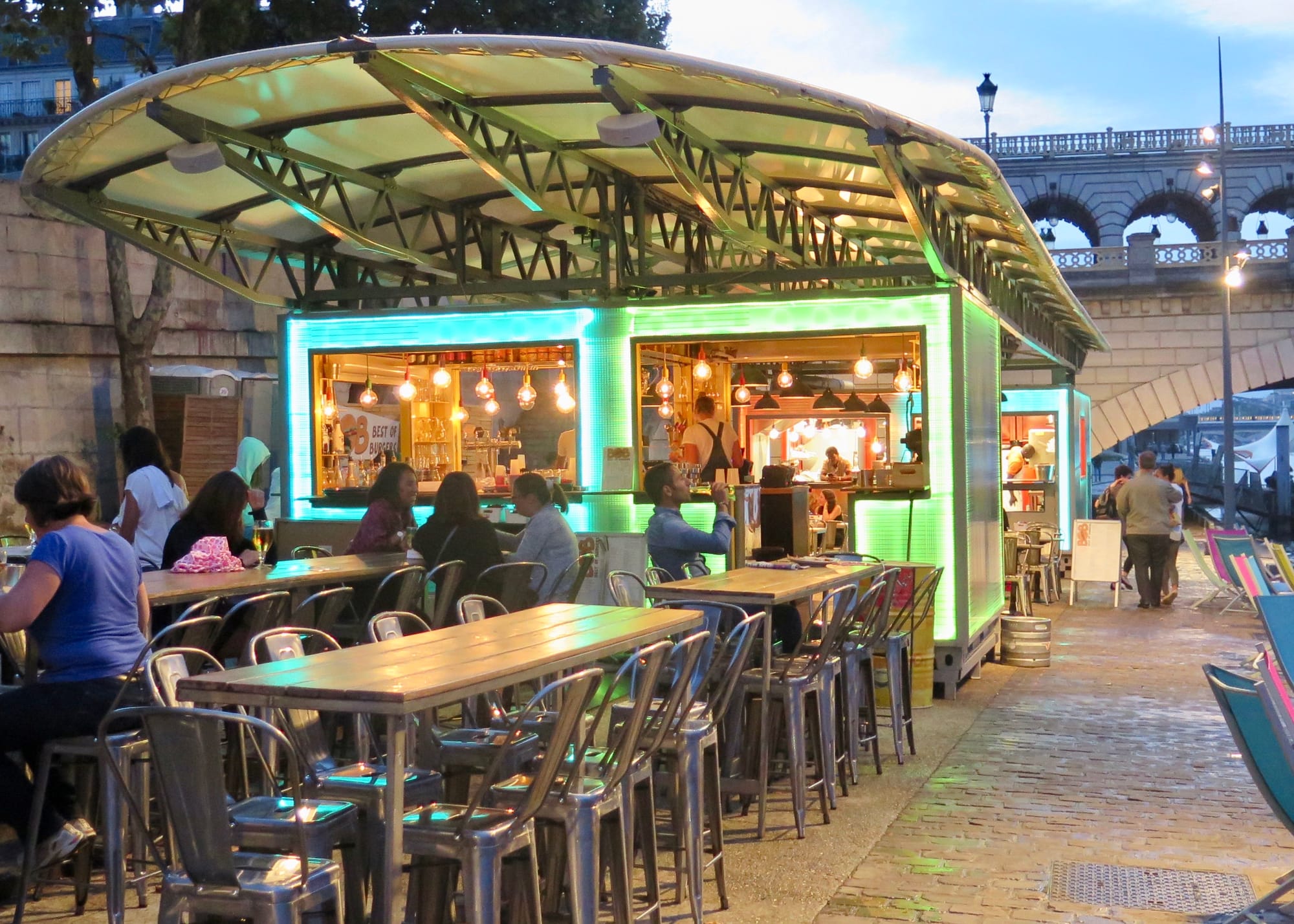
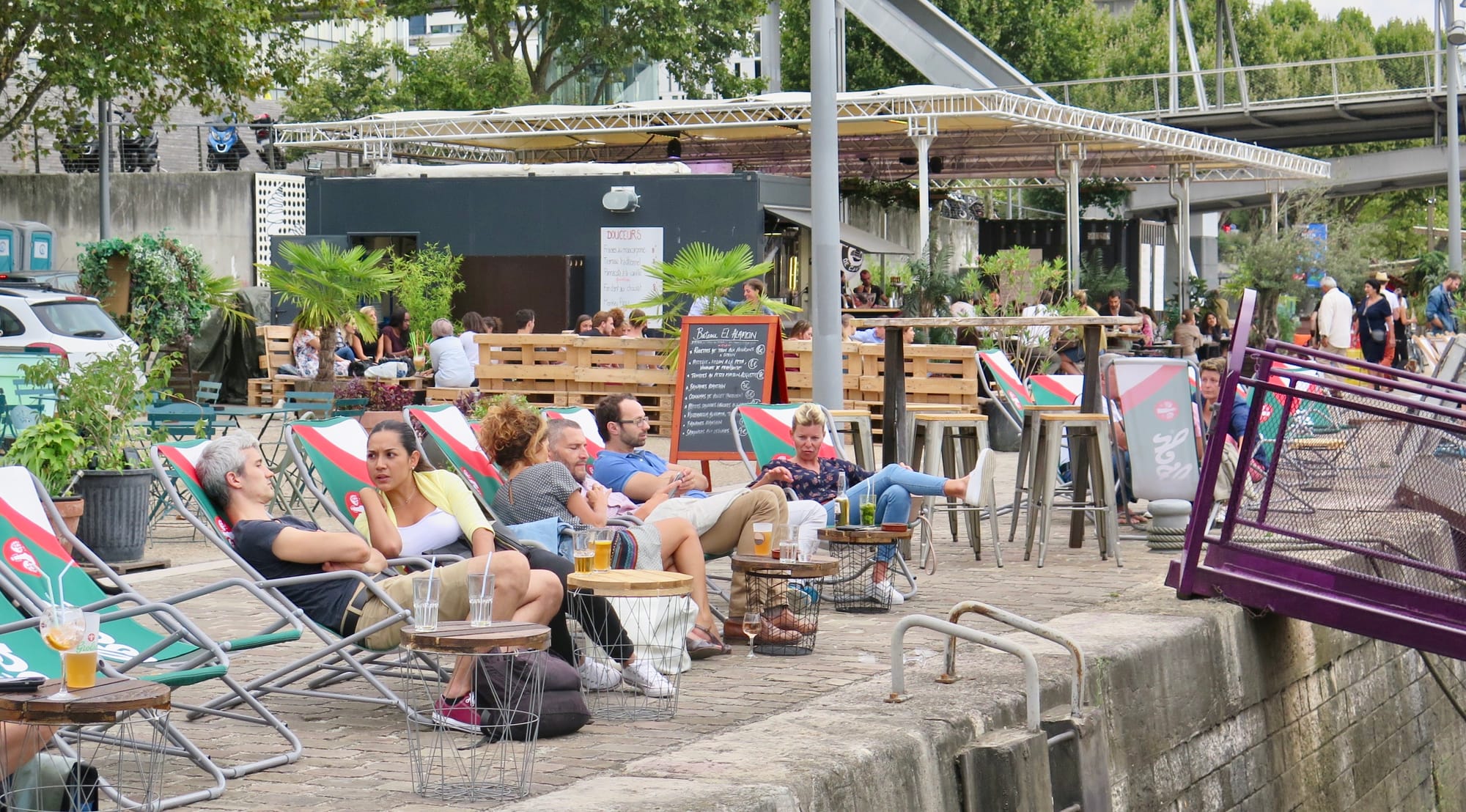
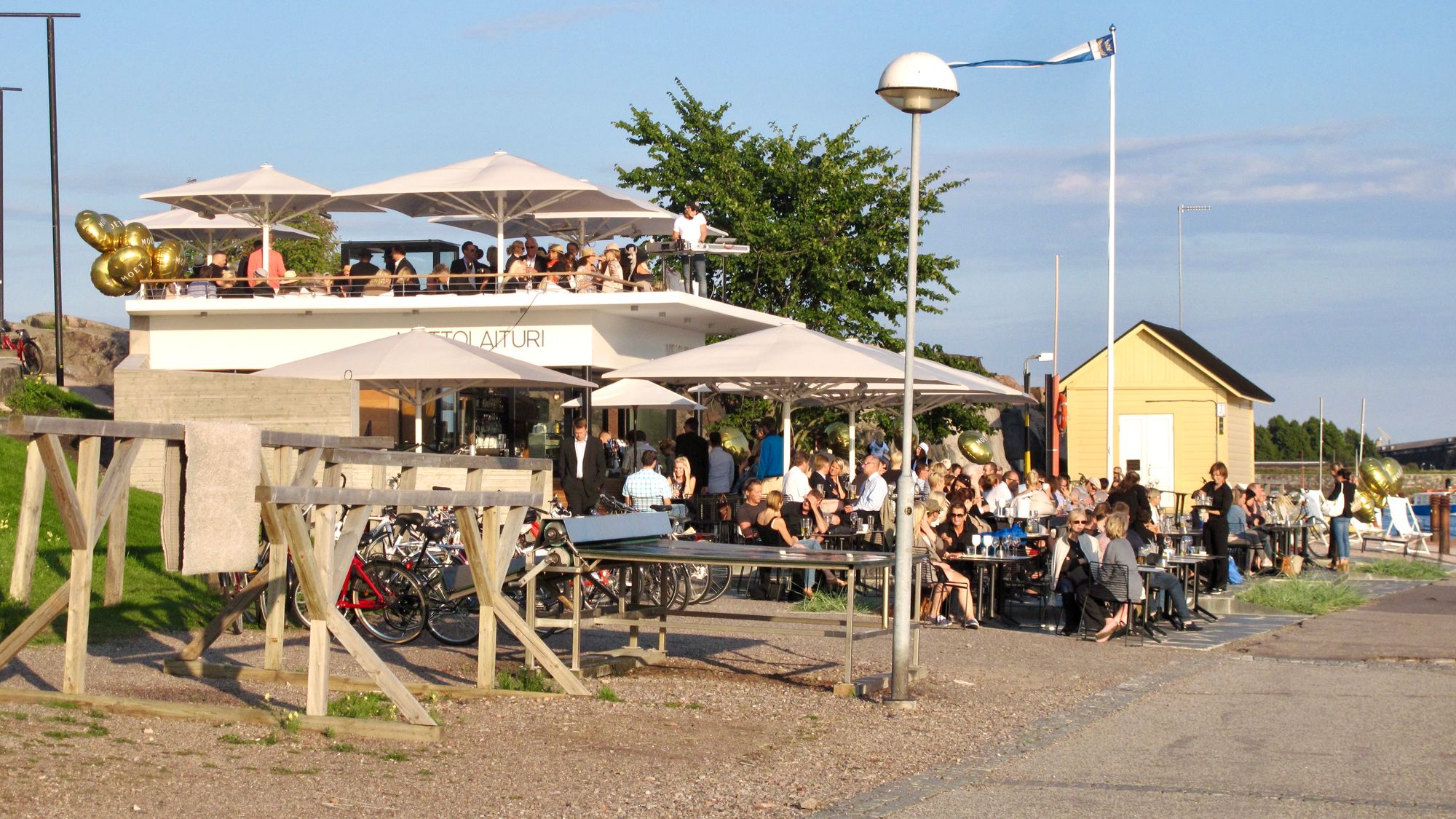
5) Amenities: Seating, Bollards, Focal Points, Sculptures
Amenities are the features that make a place great. The right mix of amenities can breathe new life into previously underused and under-appreciated areas.
Seating
Seating is a crucial component of any great public space. People like to rest often, and we are often most comfortable engaging in social experiences while sitting. Therefore, the more seating options and the greater diversity of them that we can have, the more kinds of interactions a public space can support.
What we have found is that a diversity of seating options allows for people to live out a diversity of experiences. Different designs, orientations, and details invite different kinds of interactions and behaviors.
Our Favorite Bench in Paris
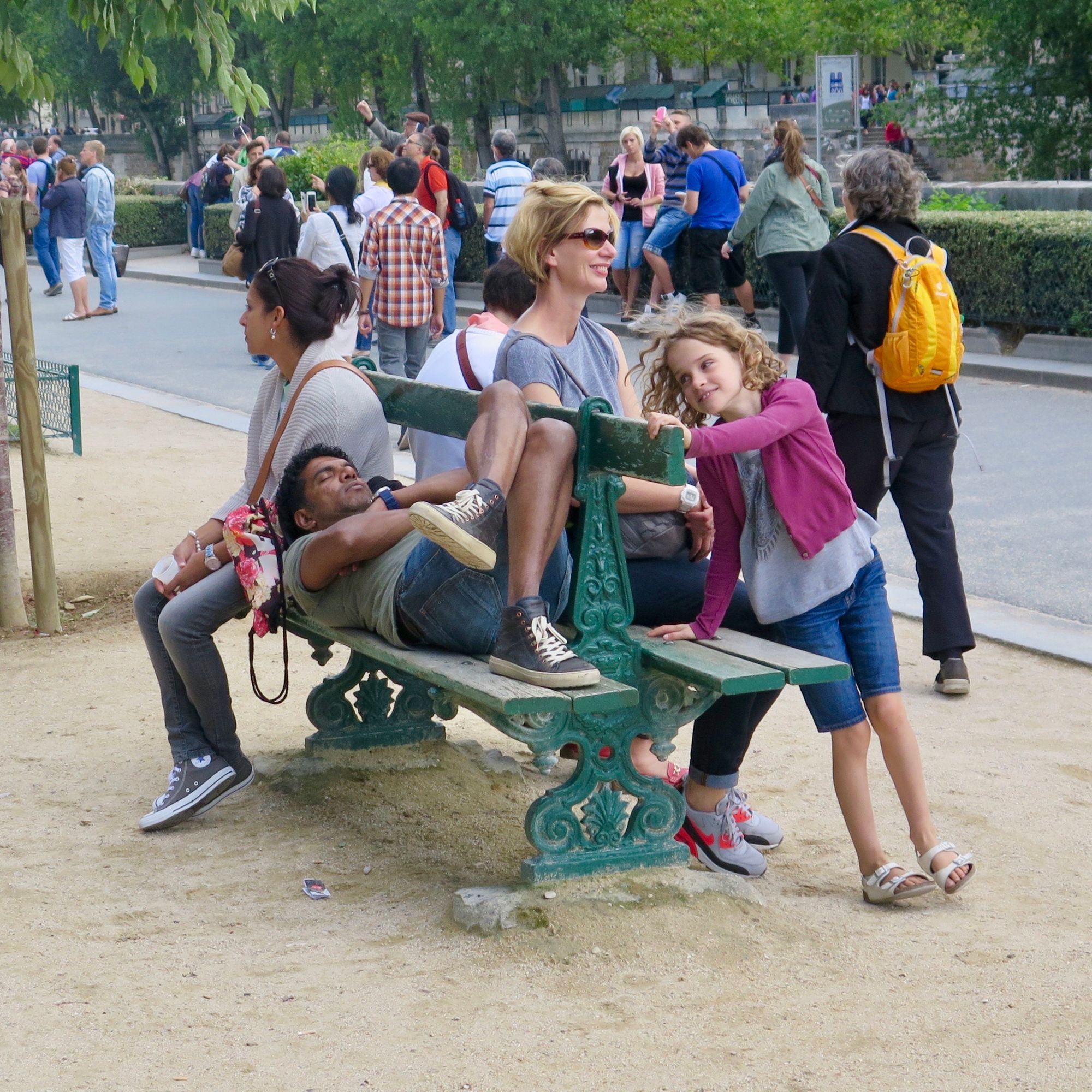
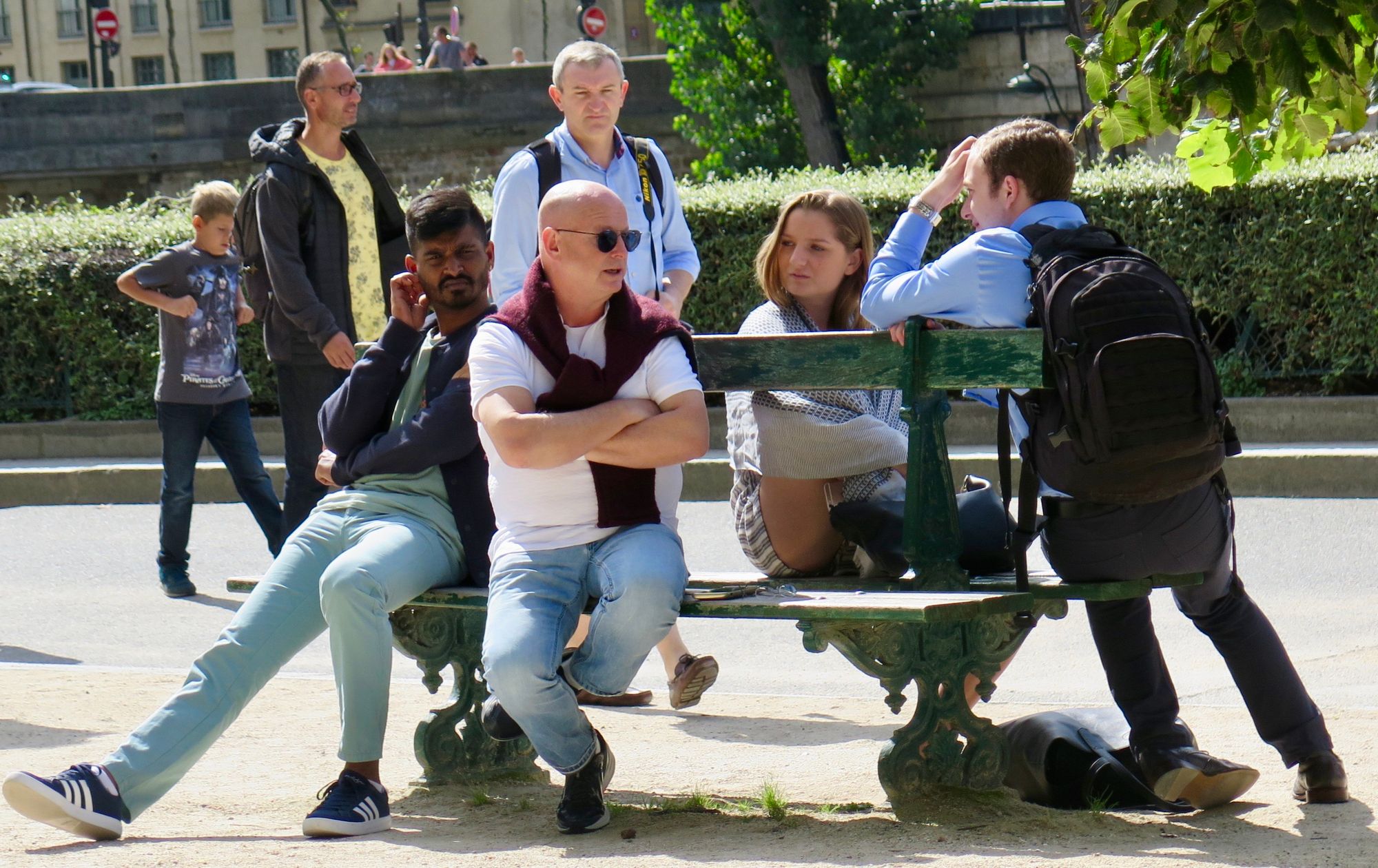
Two New Kinds of Paris Benches
One of the best innovations in public seating that we've ever seen is what we call the New Paris Bench, an element that has been a key of the Paris Plage. What is unique about these benches is how distinctly shareable they are – how much they seem to invite different groups of people to inhabit the same space.
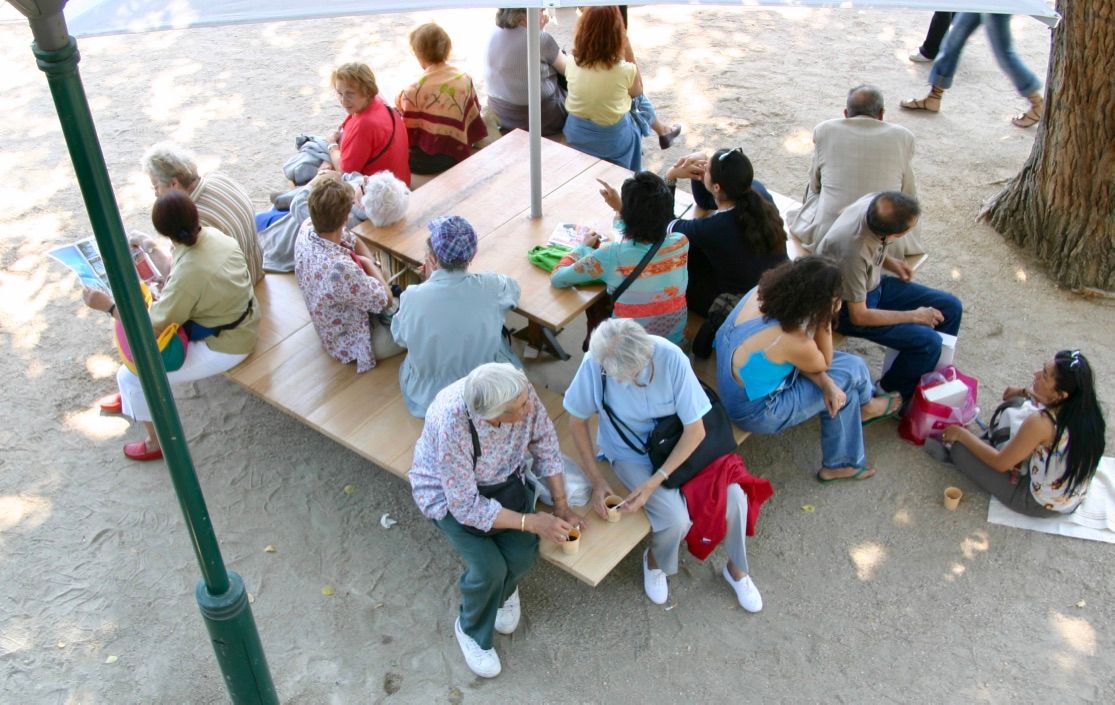
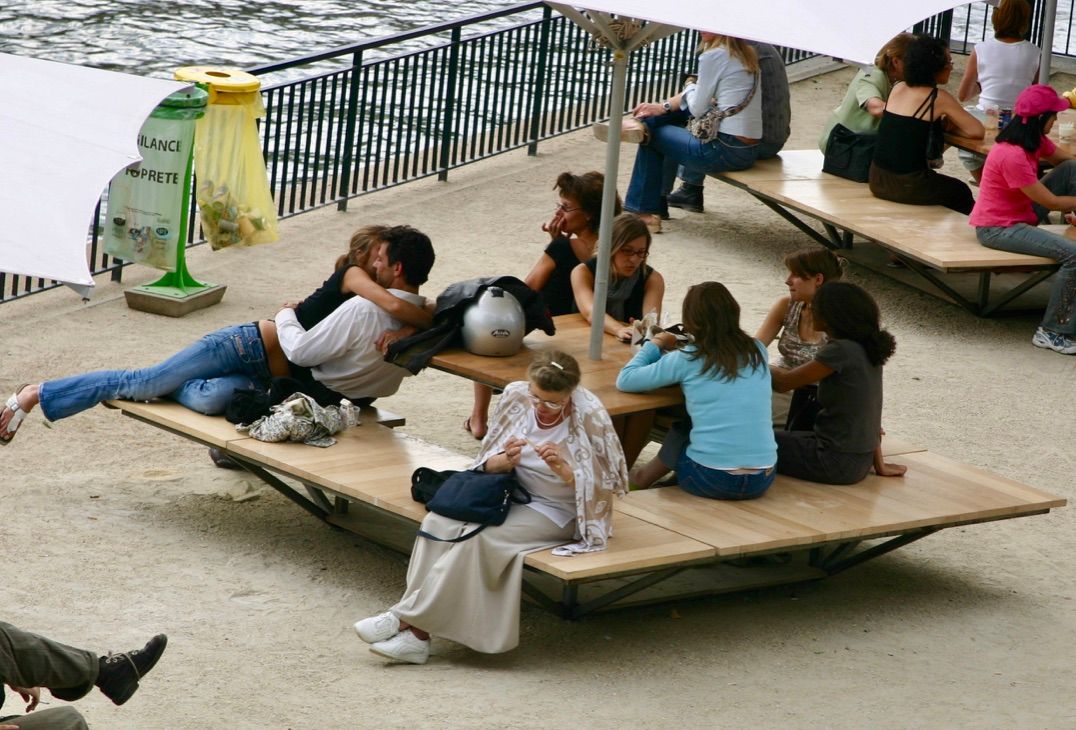
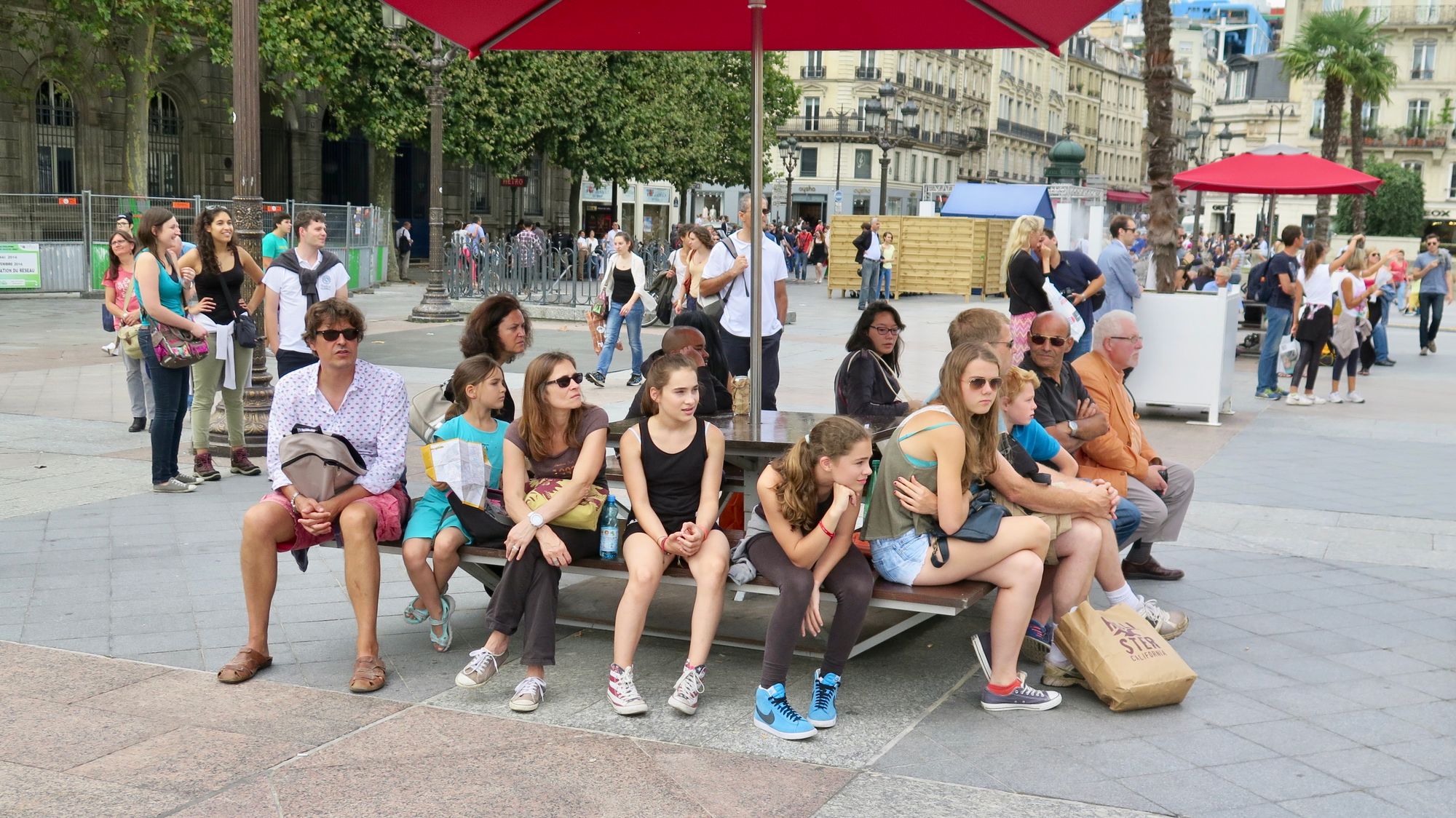
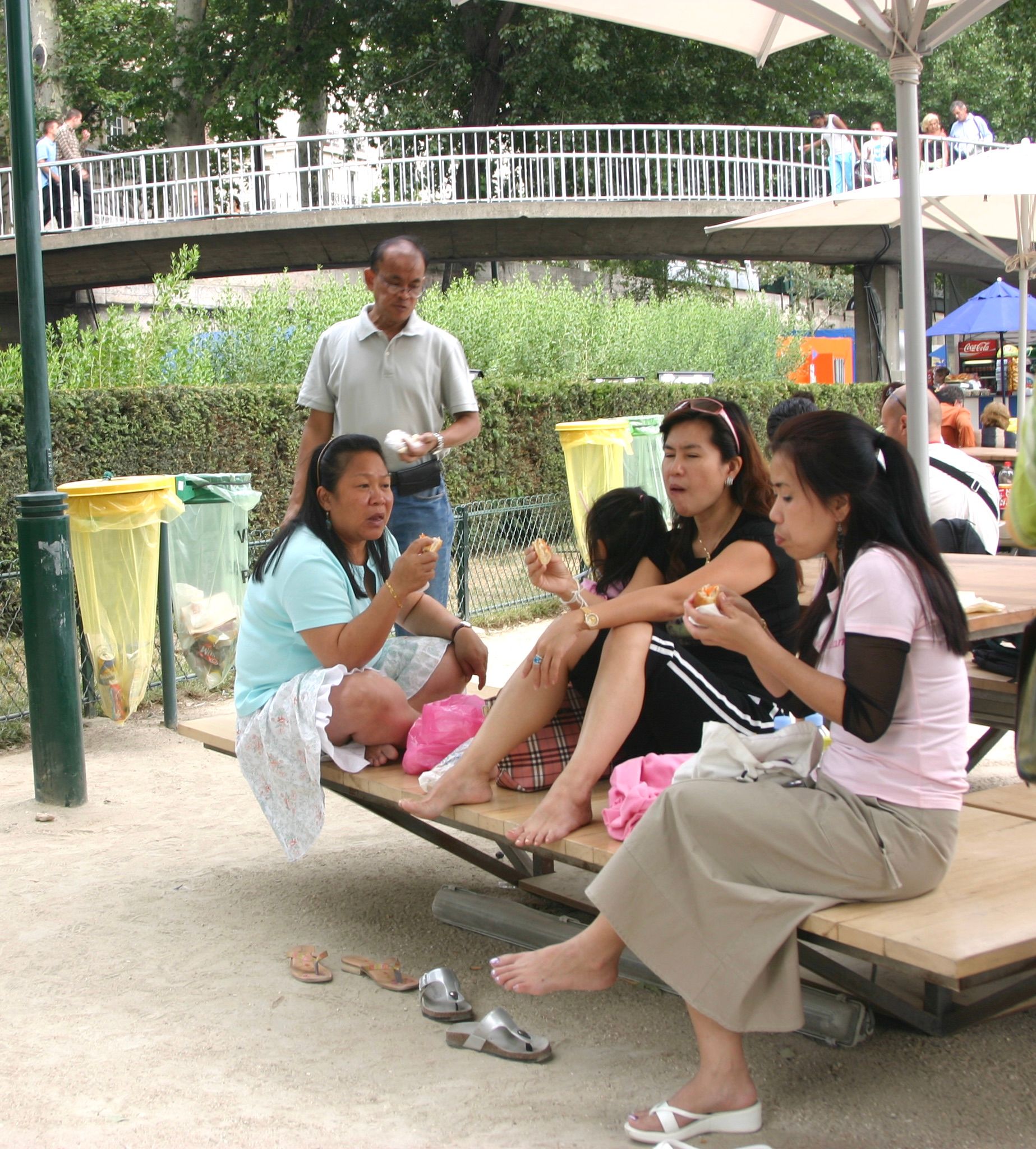
The bench: A simple re-thinking of a classic style of public seating.
Plank Seating
This multi-layered design attracts all kinds of people and lets them sit in whatever configuration most pleases them.
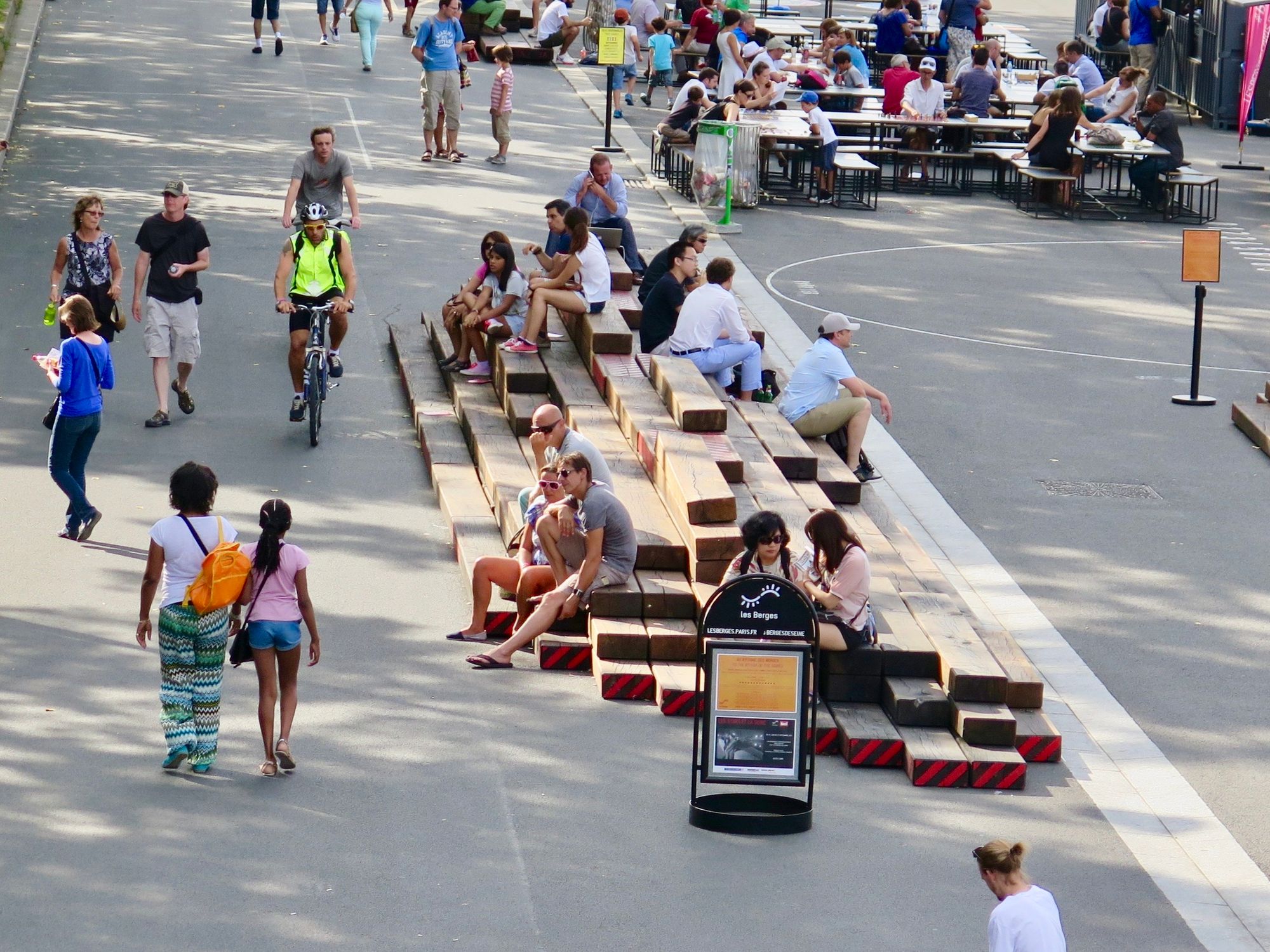
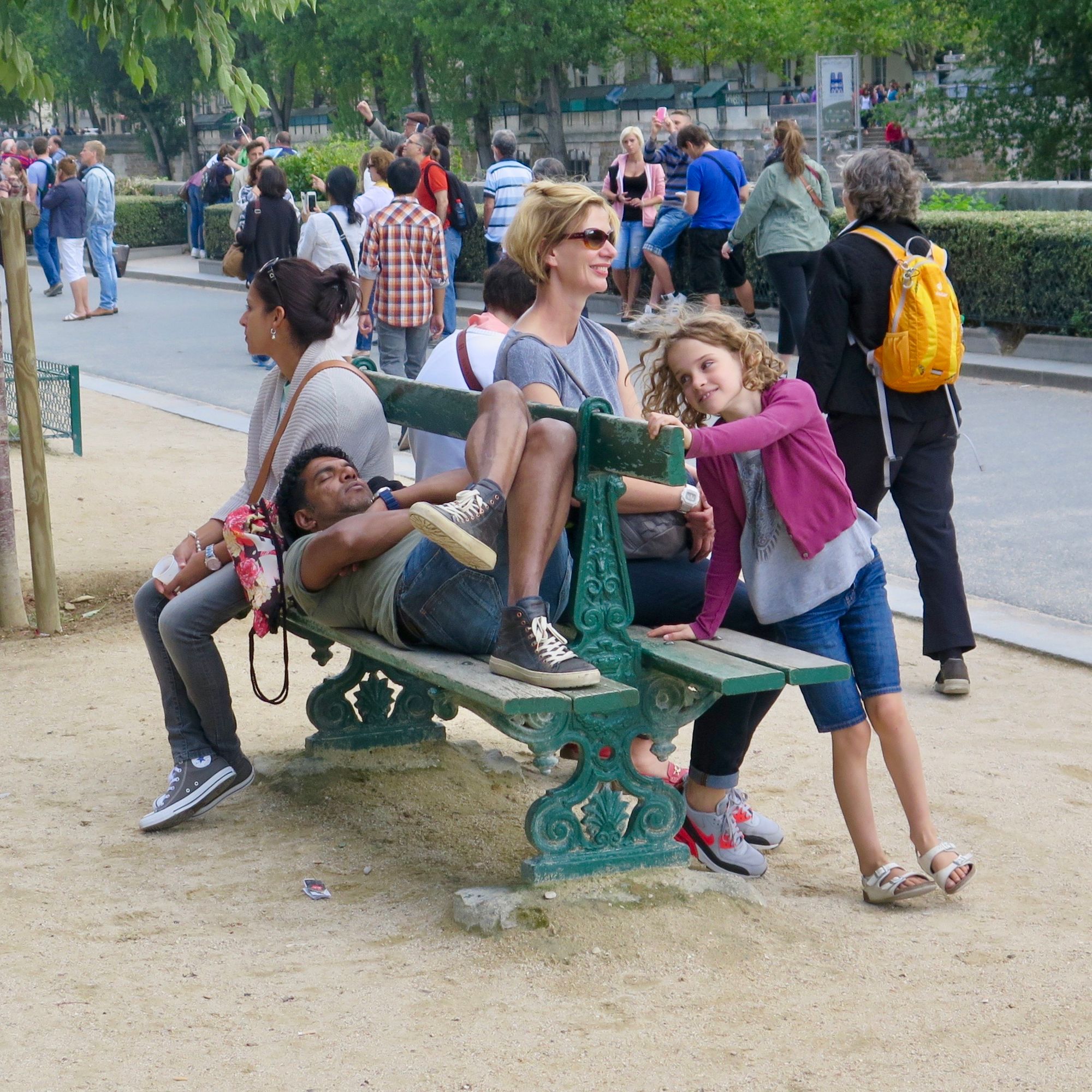
Zurich: How a Simple Bench Can Be a Canvas for Social Life
One place that always comes to mind when it comes to seating is Zurich. In 2001, we stumbled upon a collaborative exhibit by the City, in which box structures were provided to artists, who would in turn design benches to be placed around town. With no two benches alike, we saw in real time how a bench is a mirror to our interactions and behaviors in public spaces.
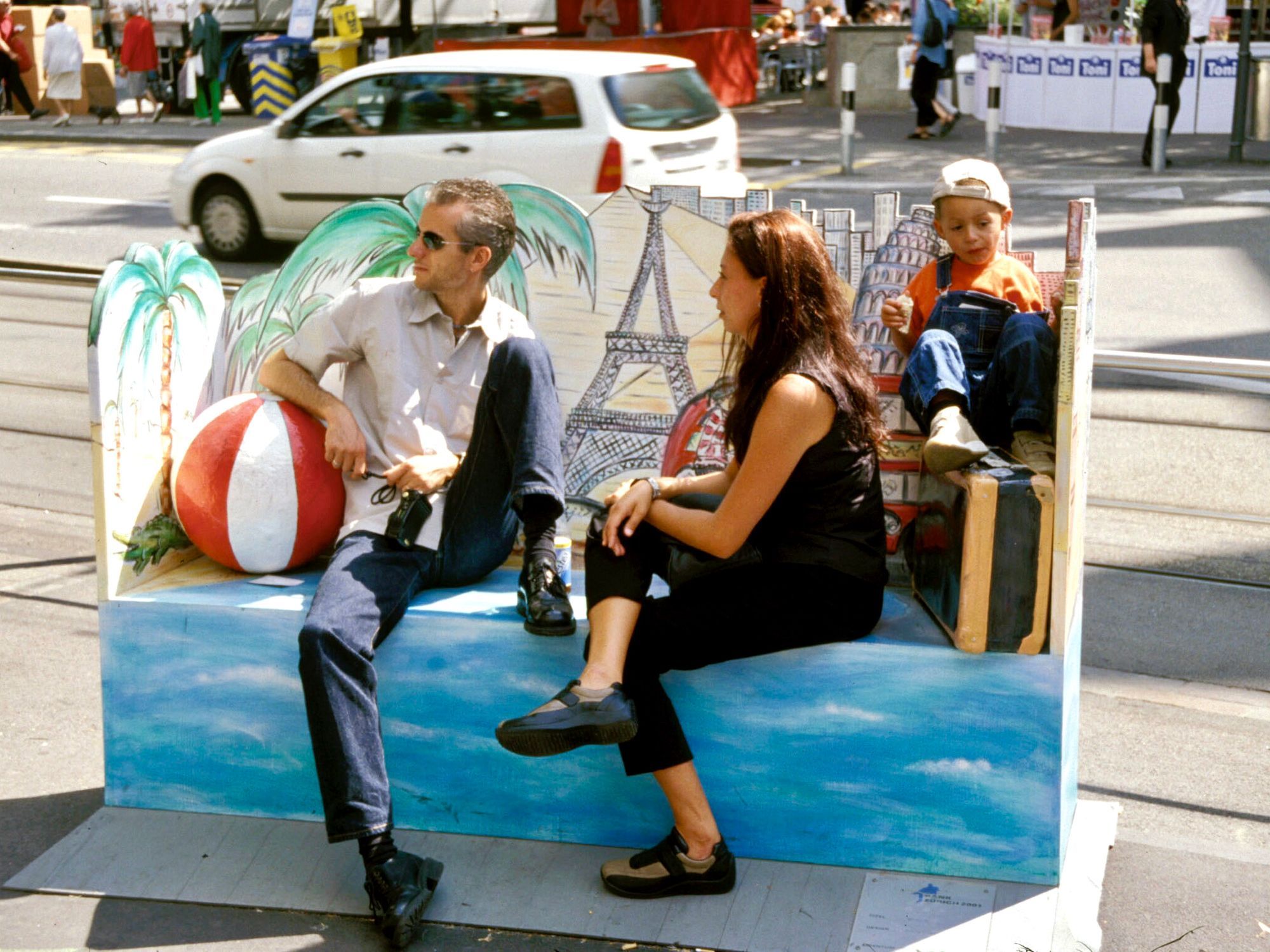
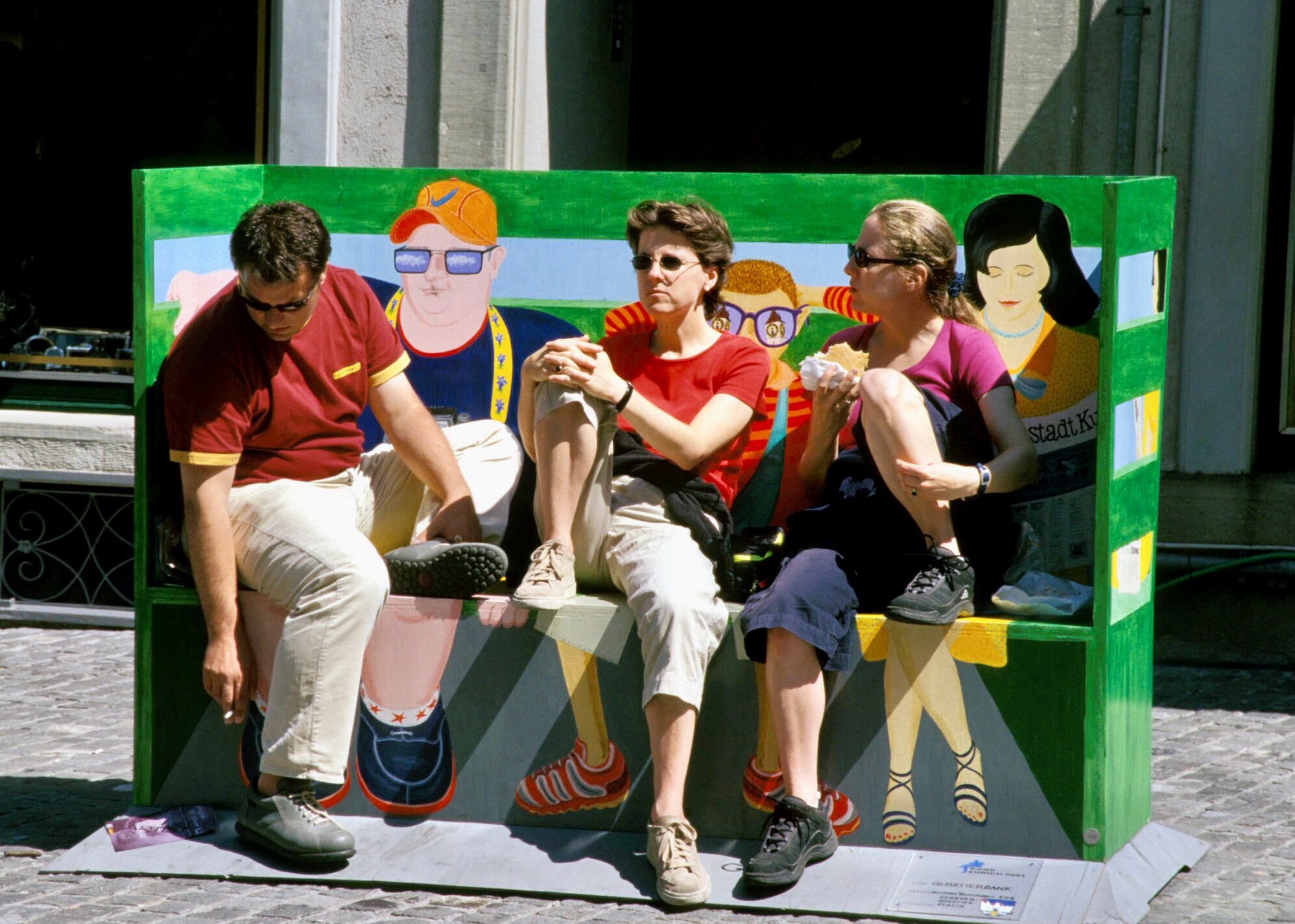
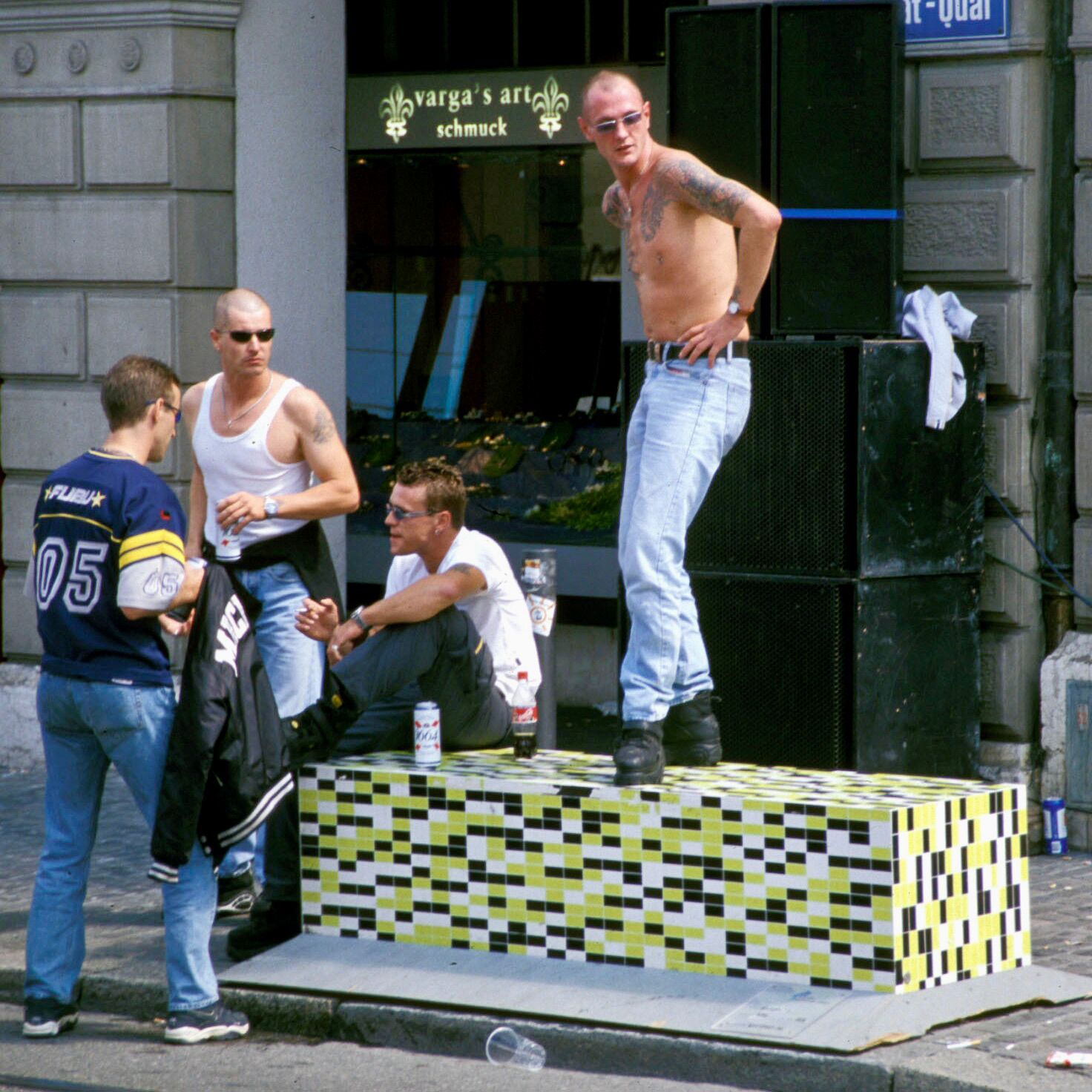
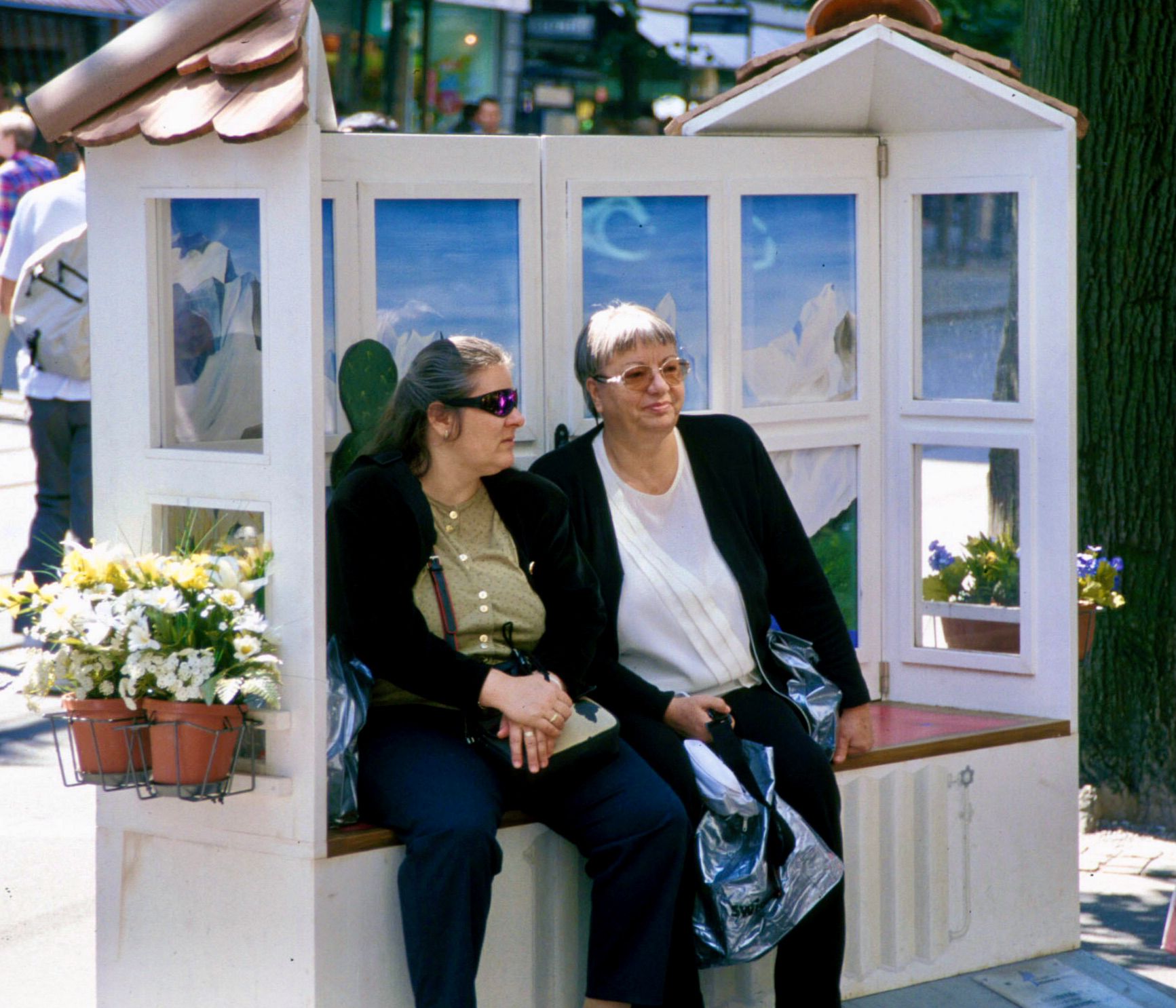
These two cultures would probably never consider the other bench to enjoy... Each seems tailor-made to their respective needs.
The Corner Bench in Our Brooklyn Neighborhood was Transformative
This bench in our Brooklyn neighborhood's main street quickly became a major gathering place when it was first introduced and piqued our curiosity. We were stunned as we witnessed the impact such a simple bench had on a corner we went through at least once a day.
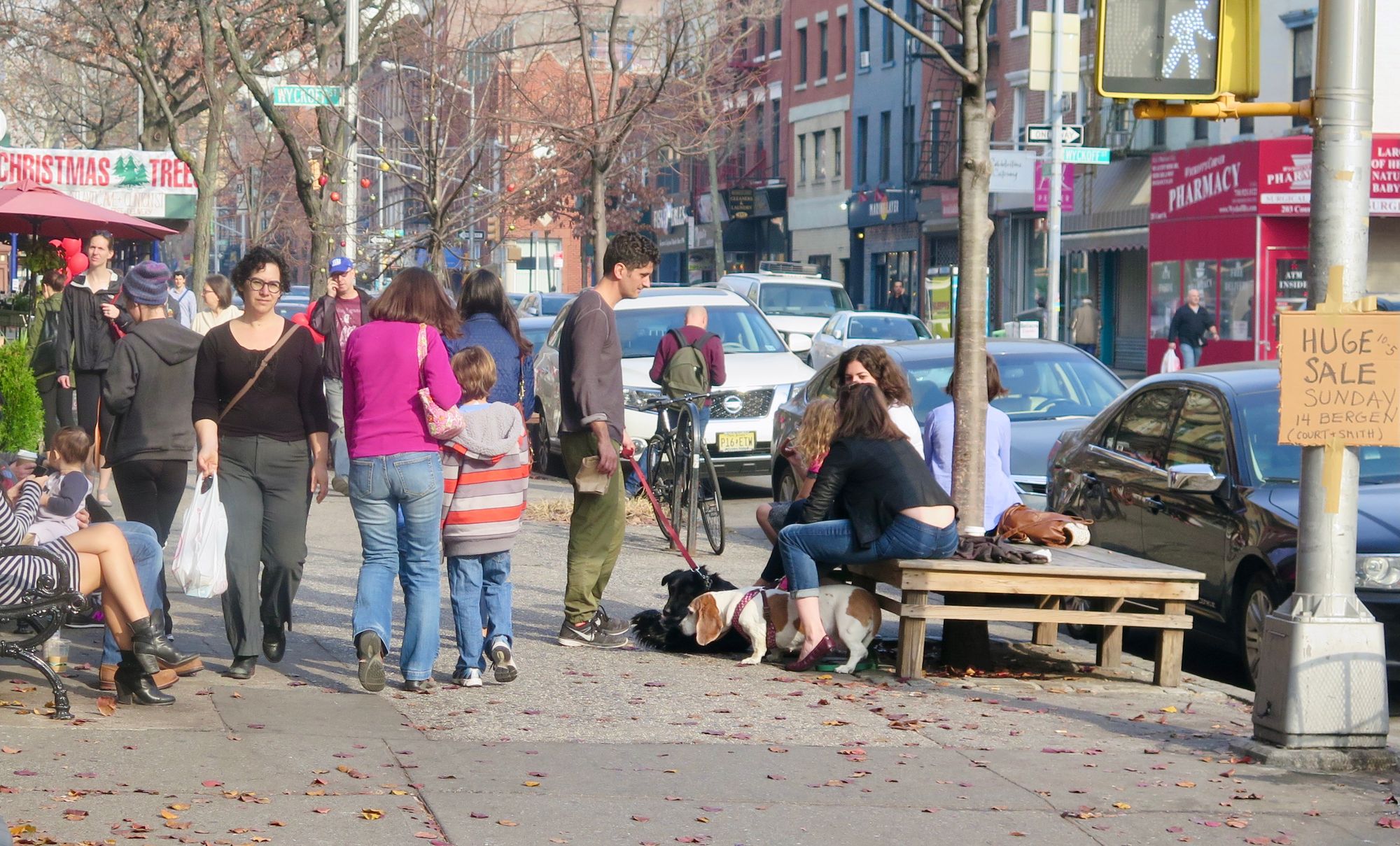
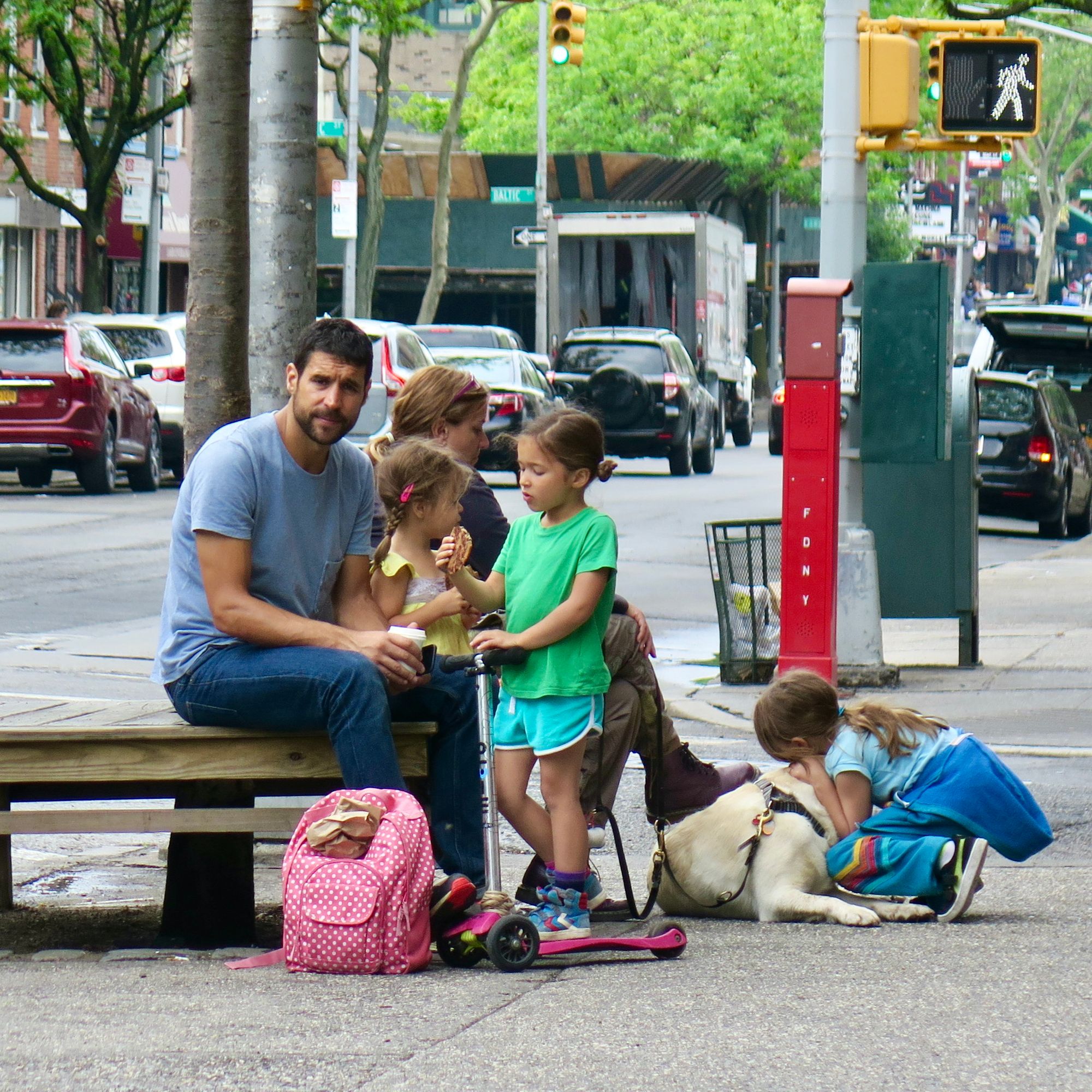
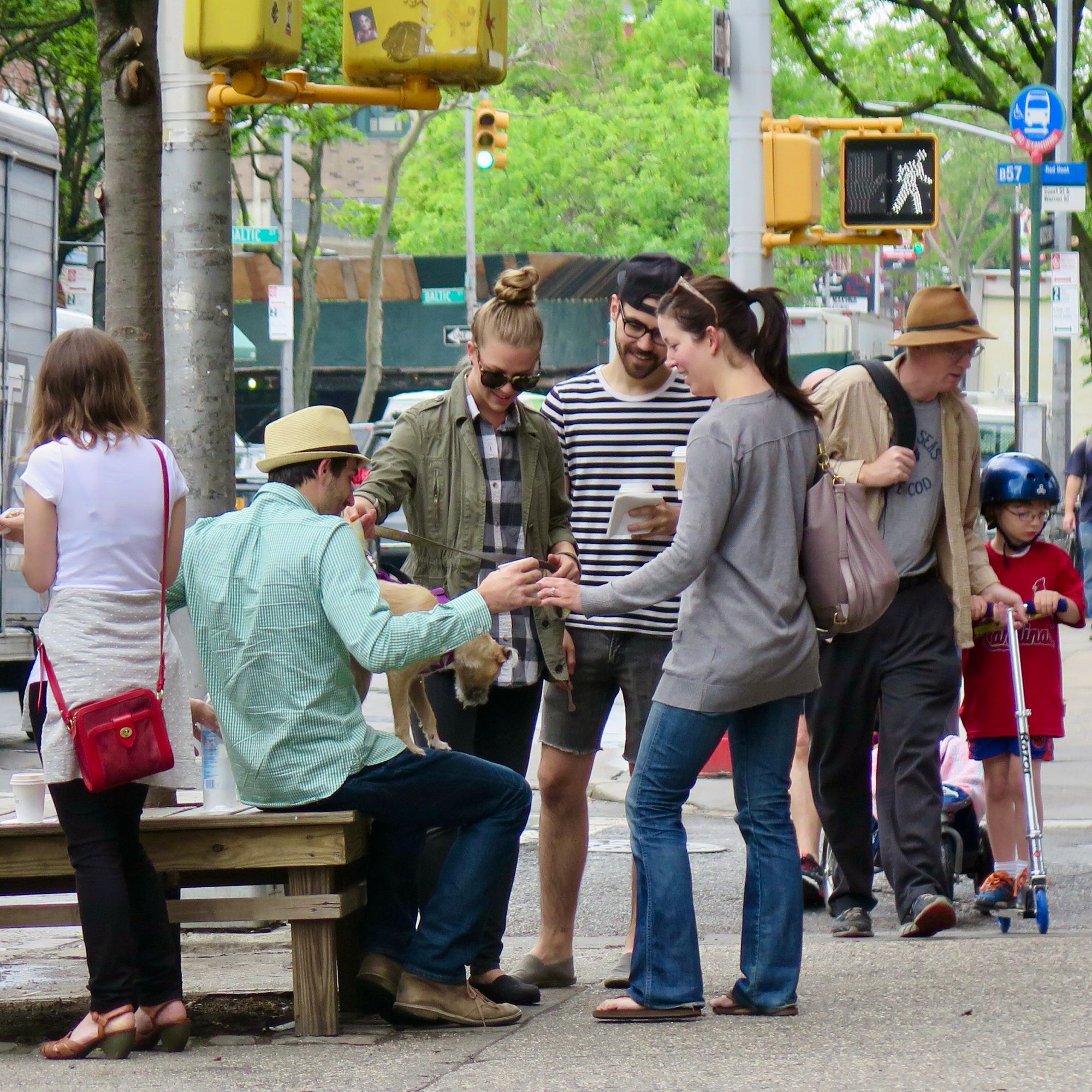
Other Amenities to Consider: Focal Points, Shade and Bollards
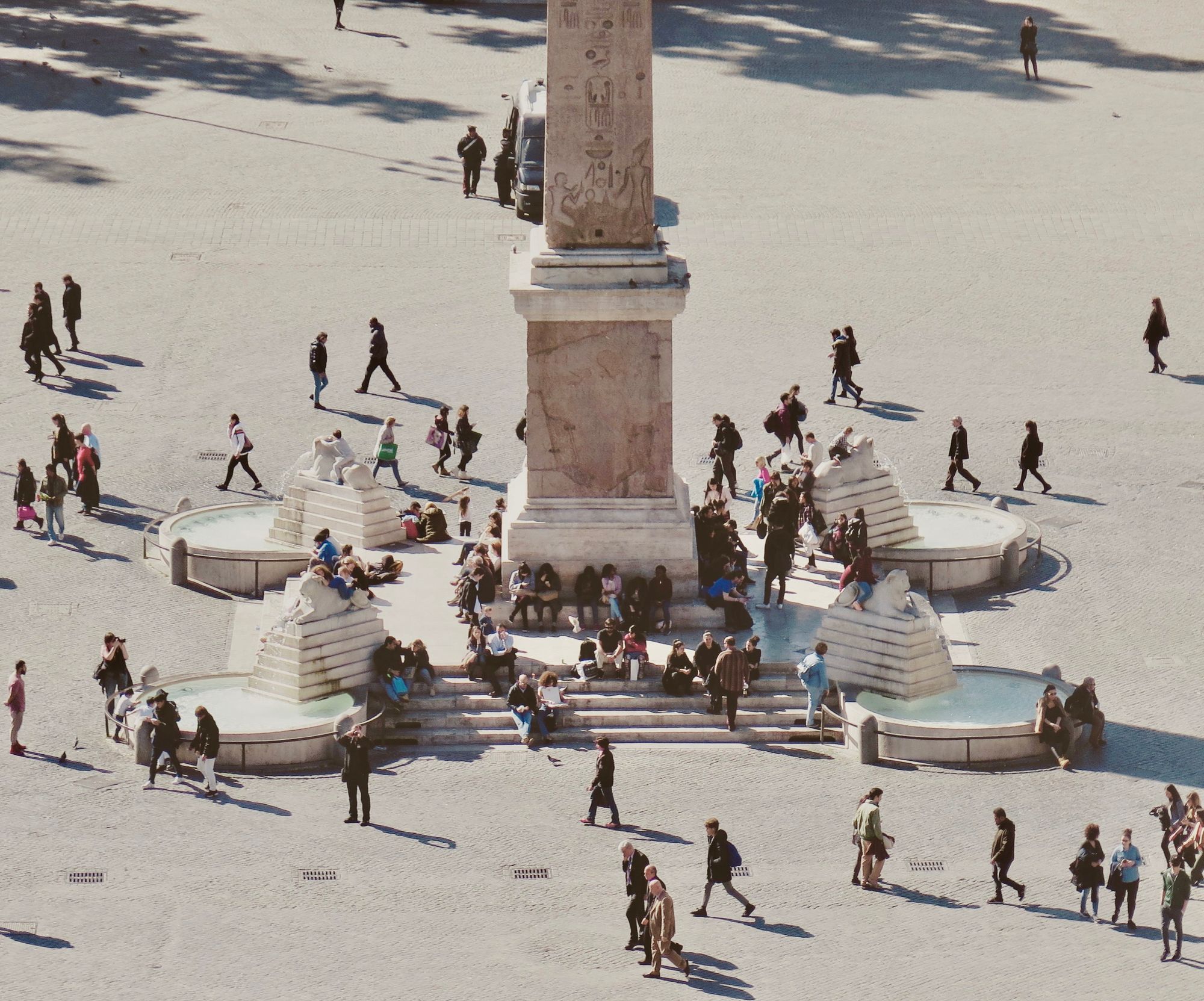
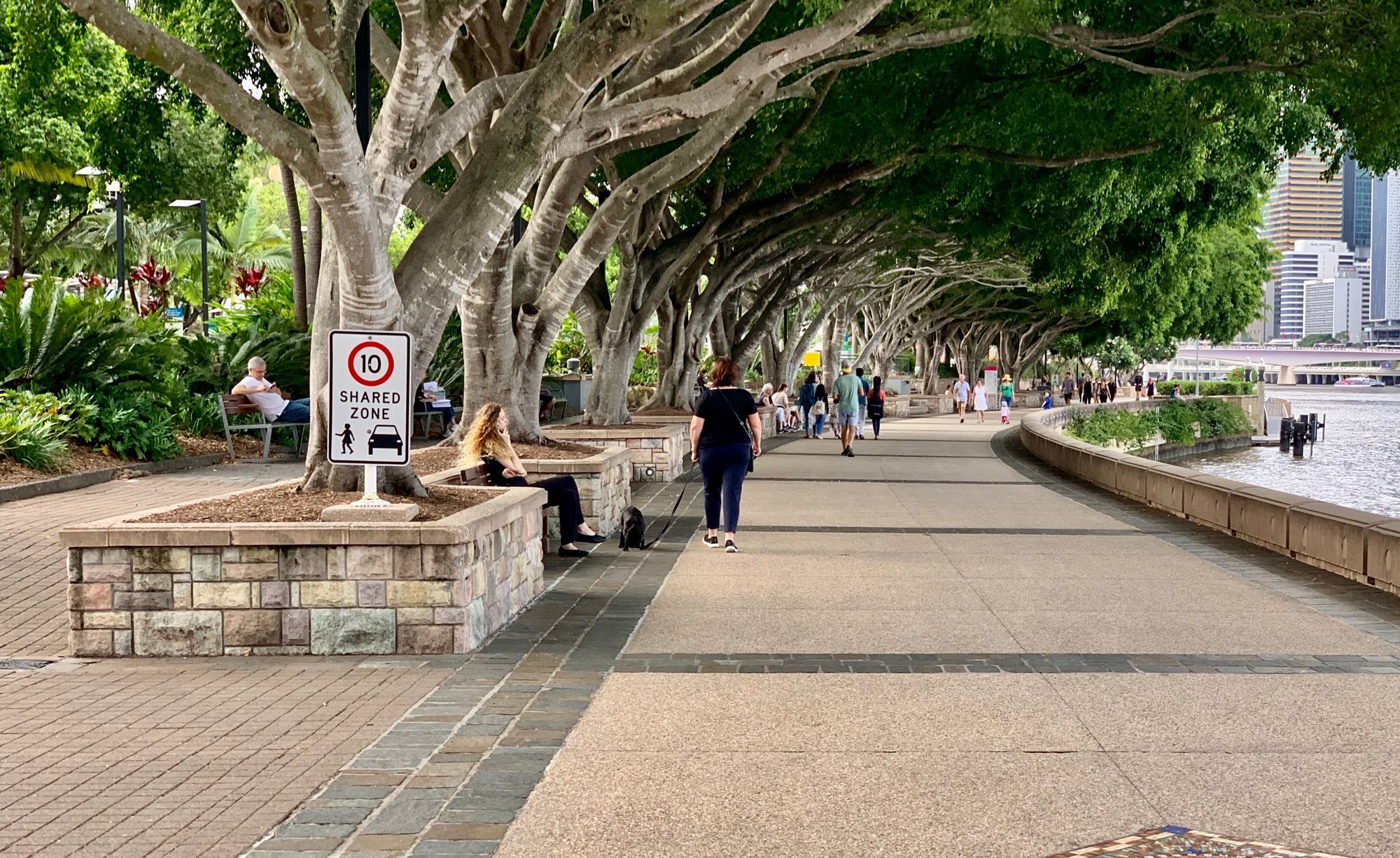
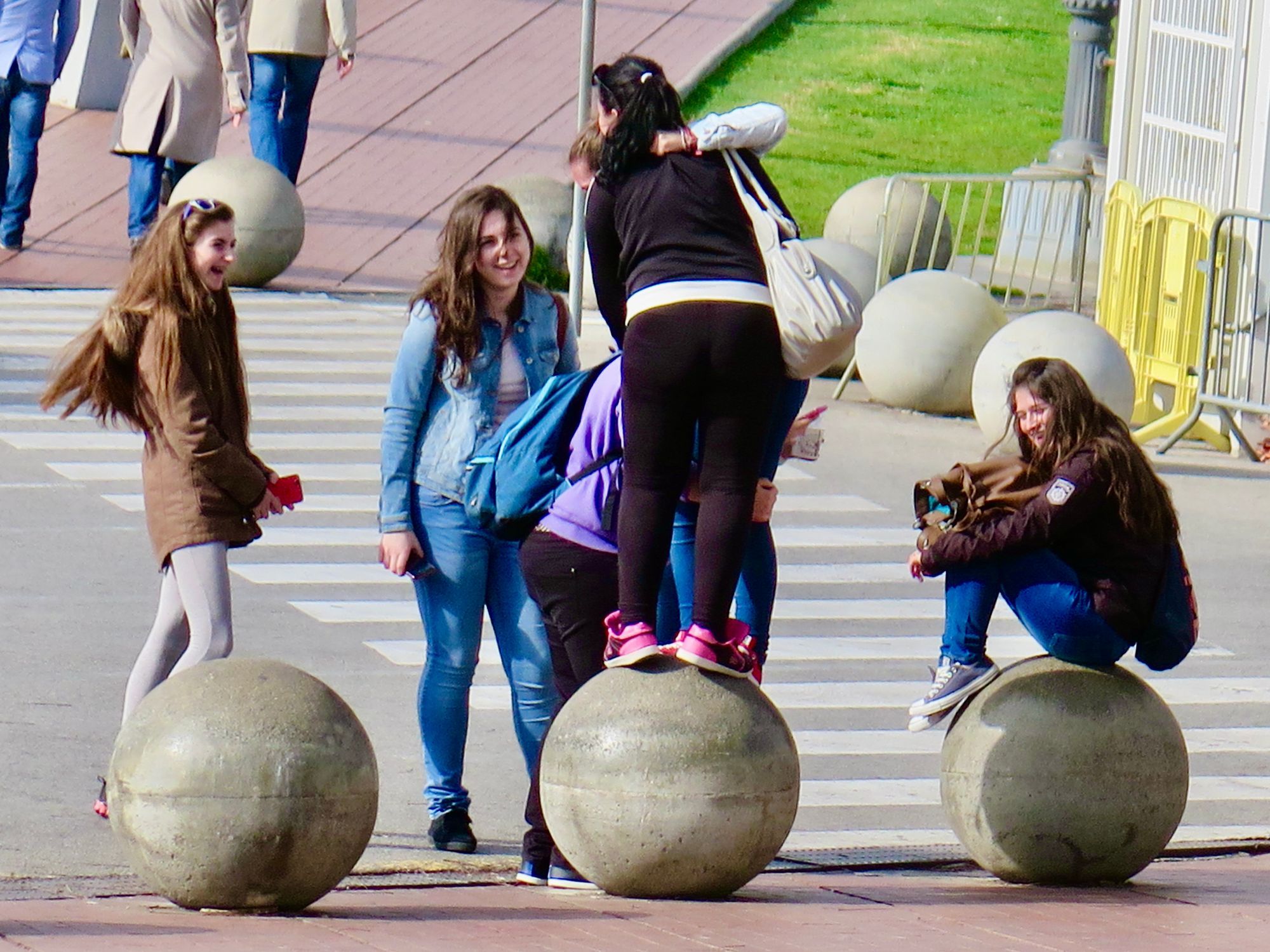
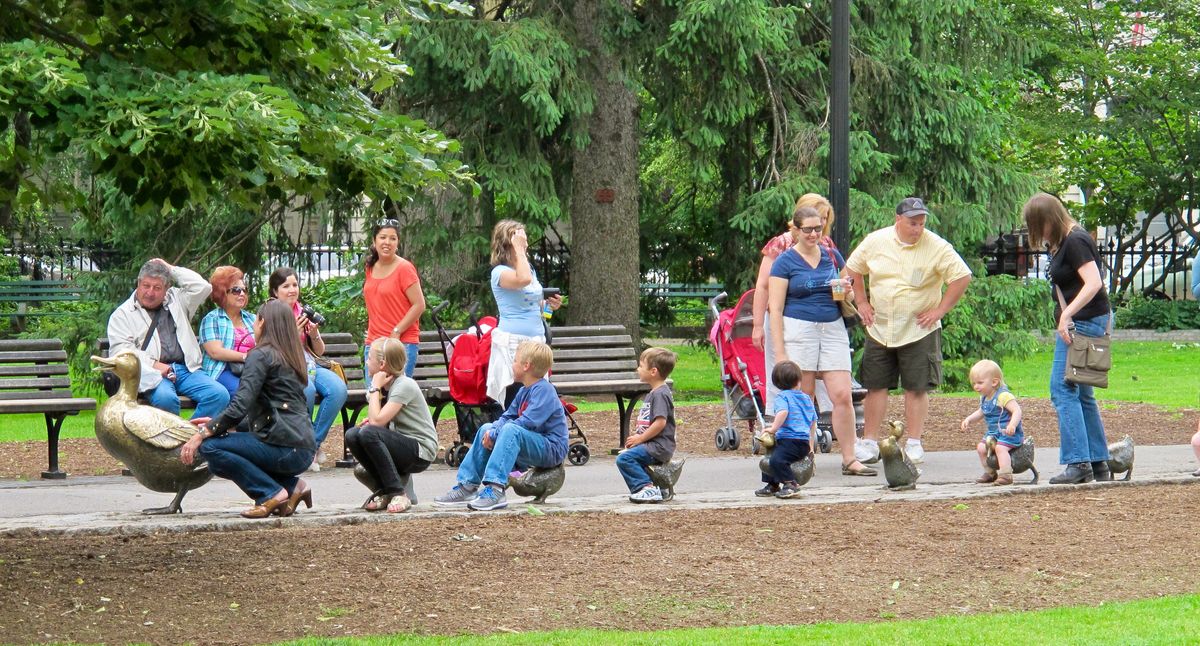
6) Bringing the Inside Out
Buildings designed primarily as objects to be admired, like pieces of art, hide what is most important about the buildings – what is going on inside. The Colony provides a wonderful example of a building that "spills out onto the street" and shares its inside world with the public realm.
Colony Hotel – Delray Beach, Florida
This historic hotel is a main anchor along Atlantic Avenue. It is the midpoint of the downtown portion of Atlantic Avenue. It is a classic, historic hotel that has an iconic position on the Avenue. It is like what the Plaza Hotel is in Midtown New York City, or what the Adelphi Hotel, in Saratoga Hotel is to the Main Street in Saratoga Springs.
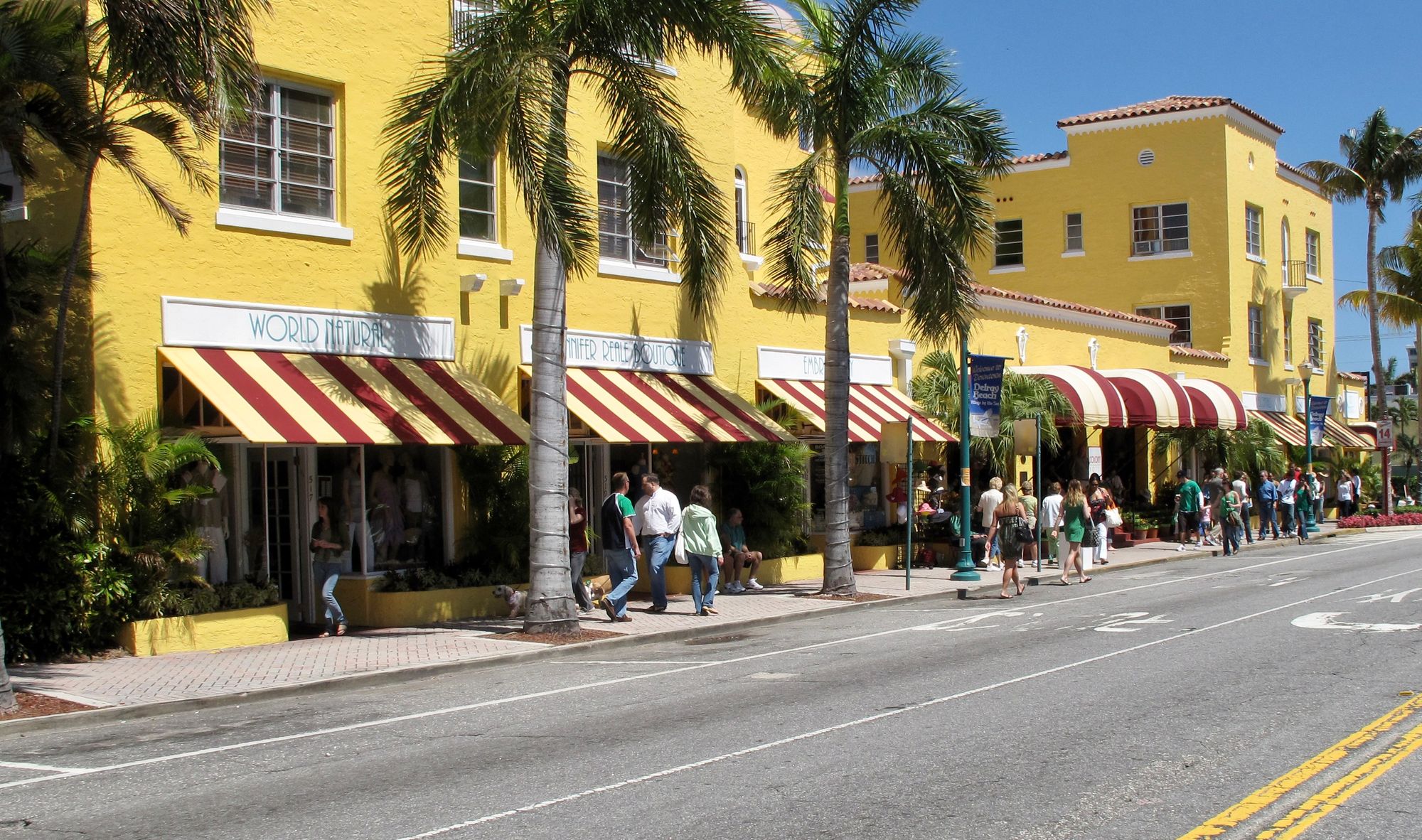
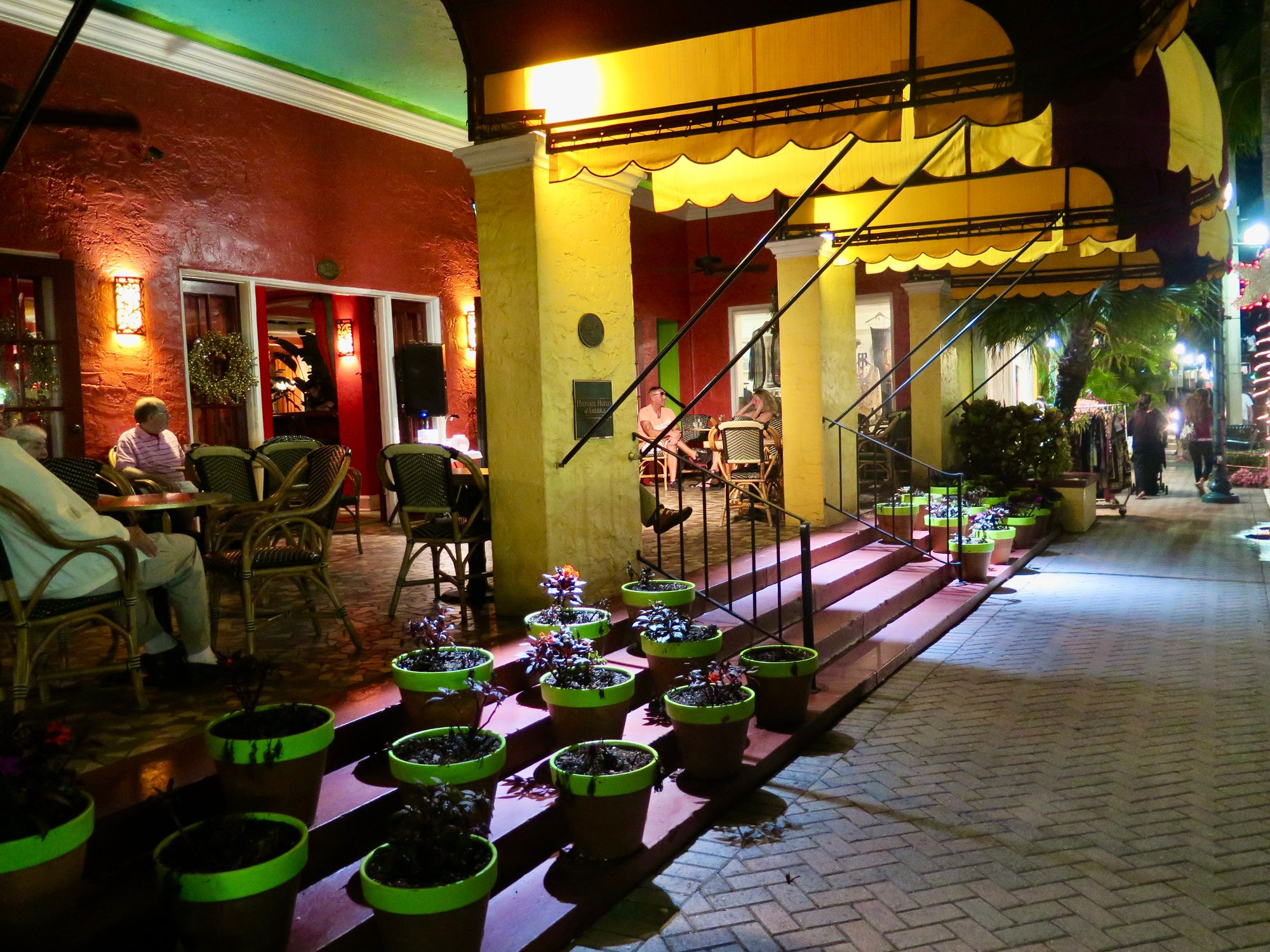
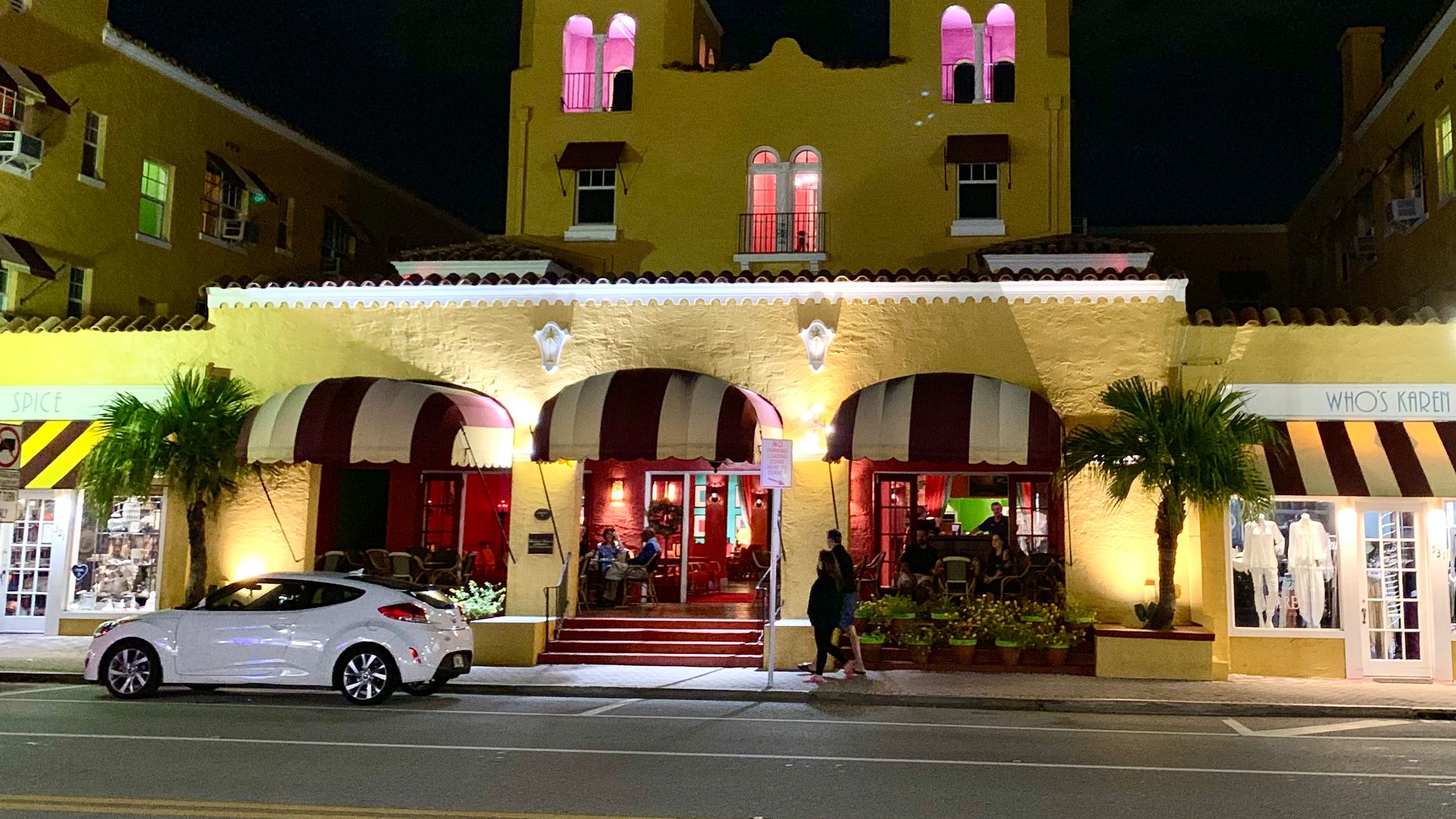
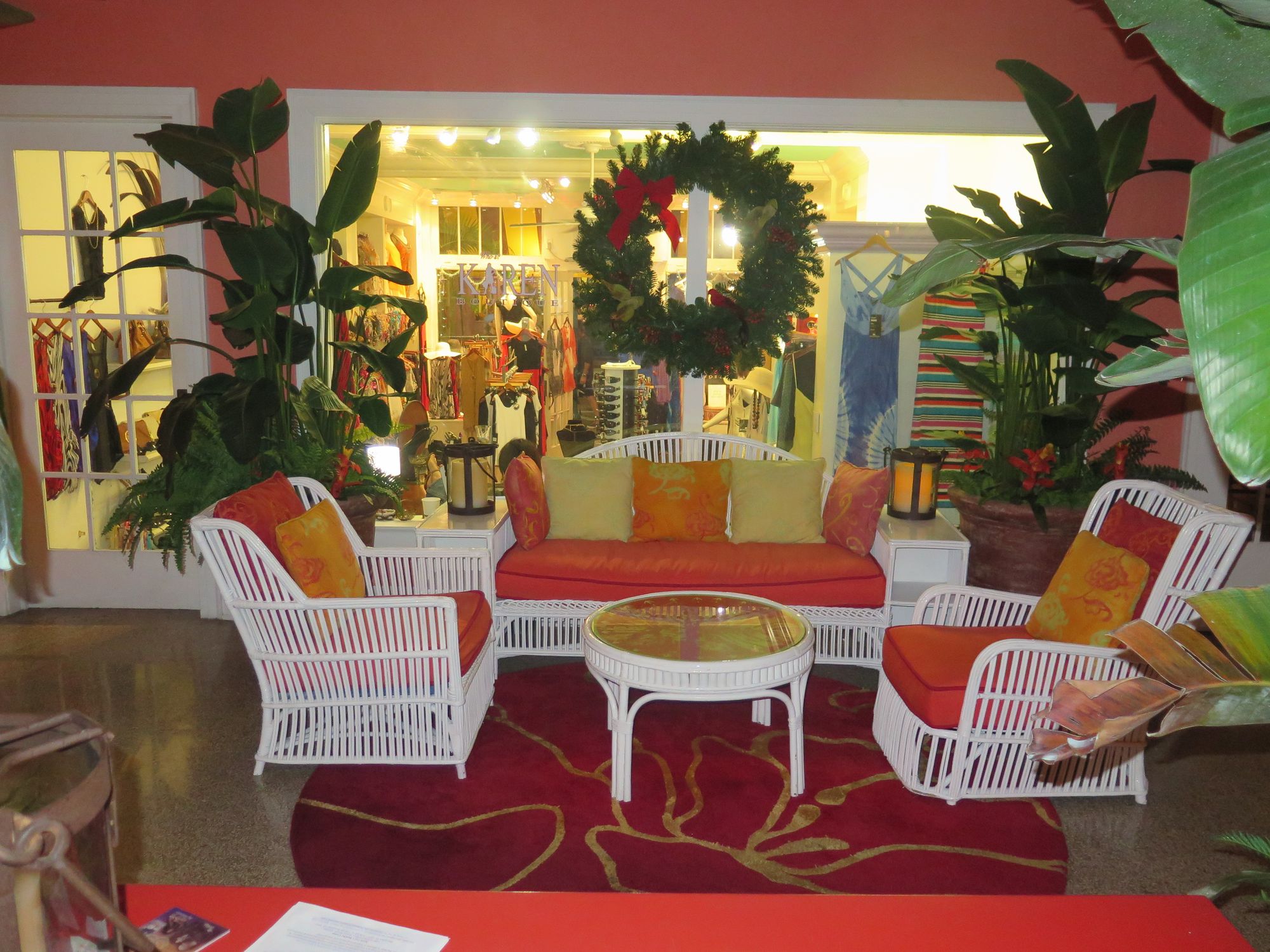
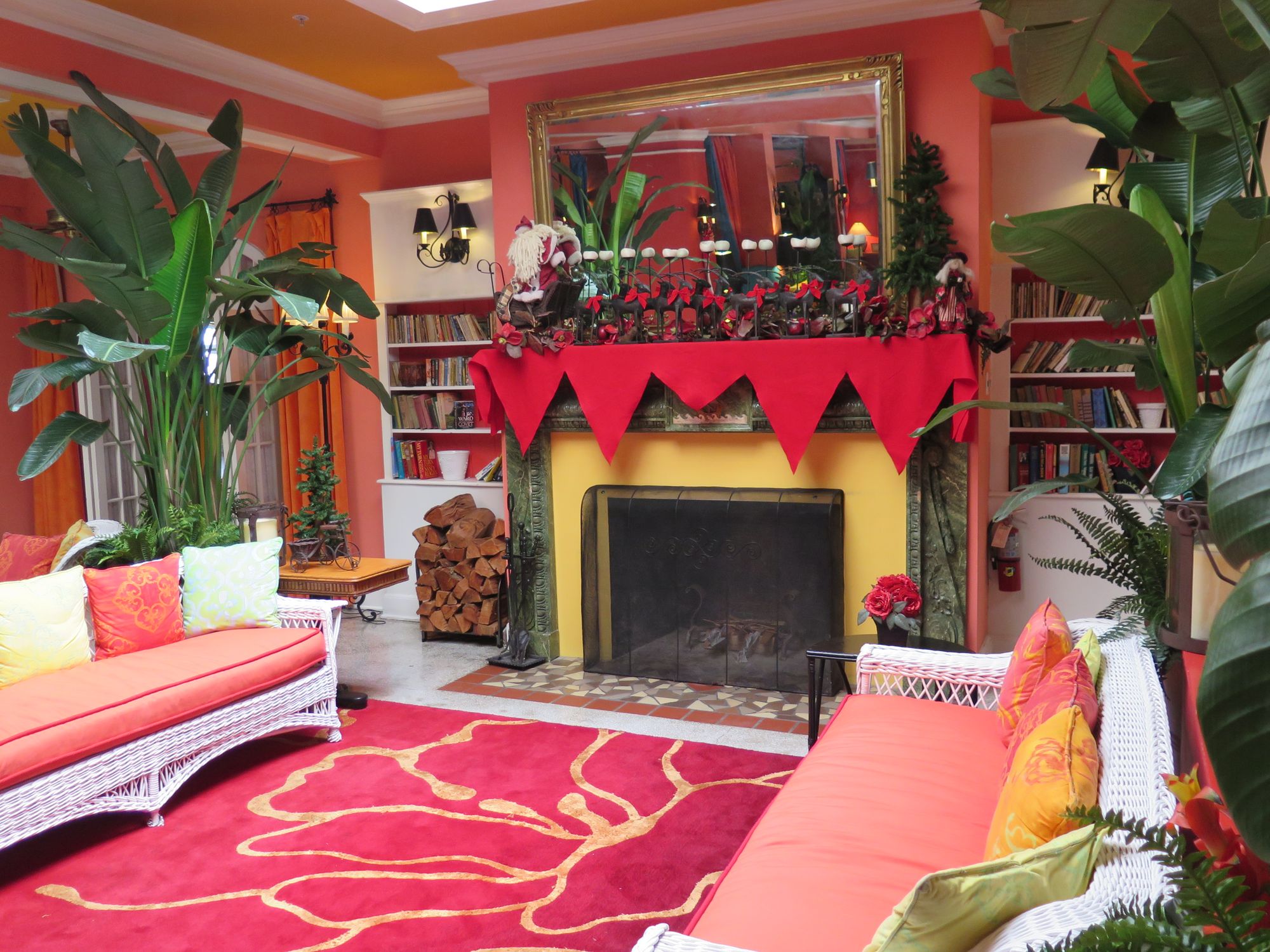
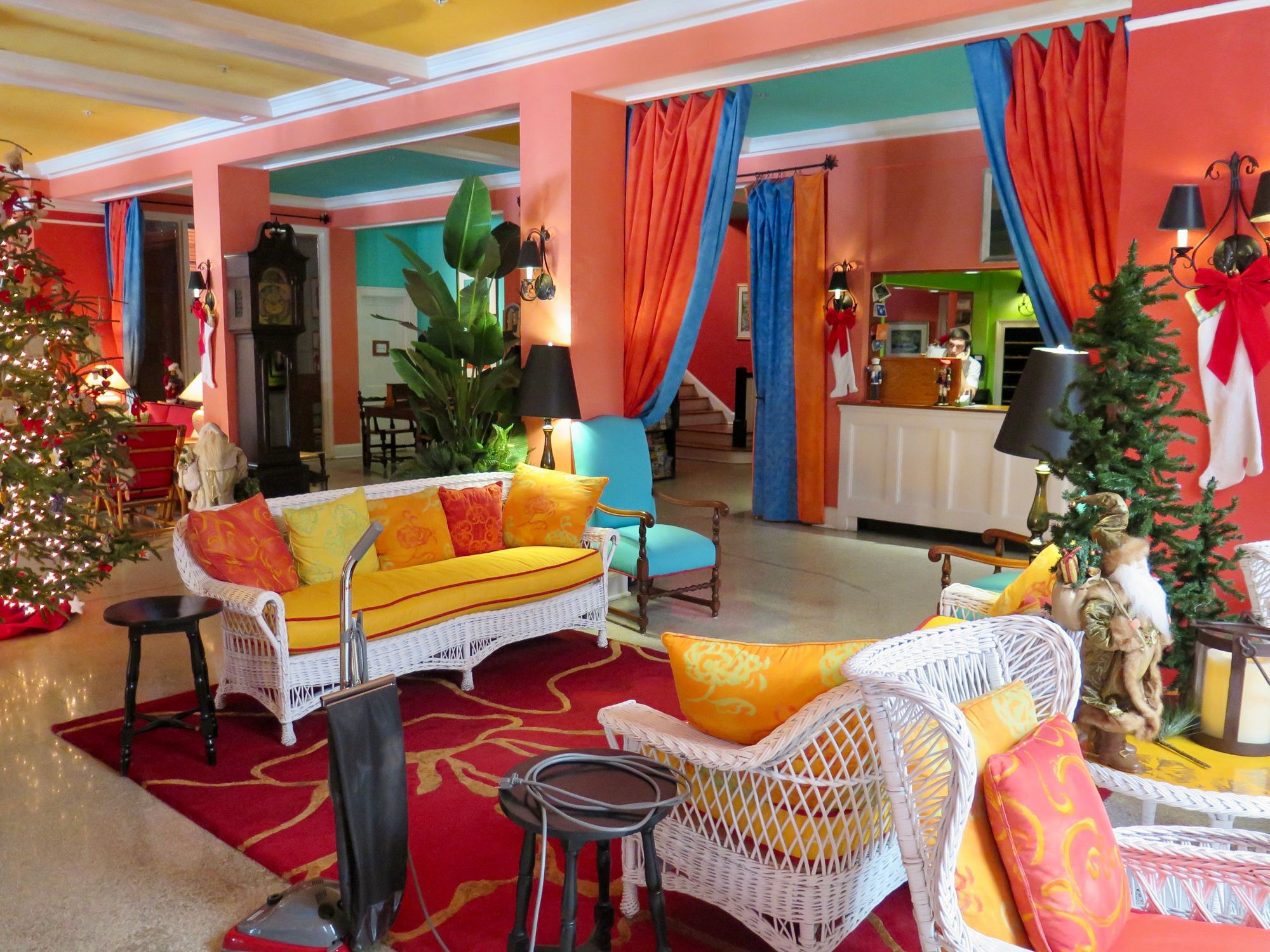
The Adelphi Hotel in Saratoga Springs
The sidewalk plaza/porch in front of the historic Adelphi Hotel is like the Colony. Their liveliness is no small part of why these two hotels are local landmarks.
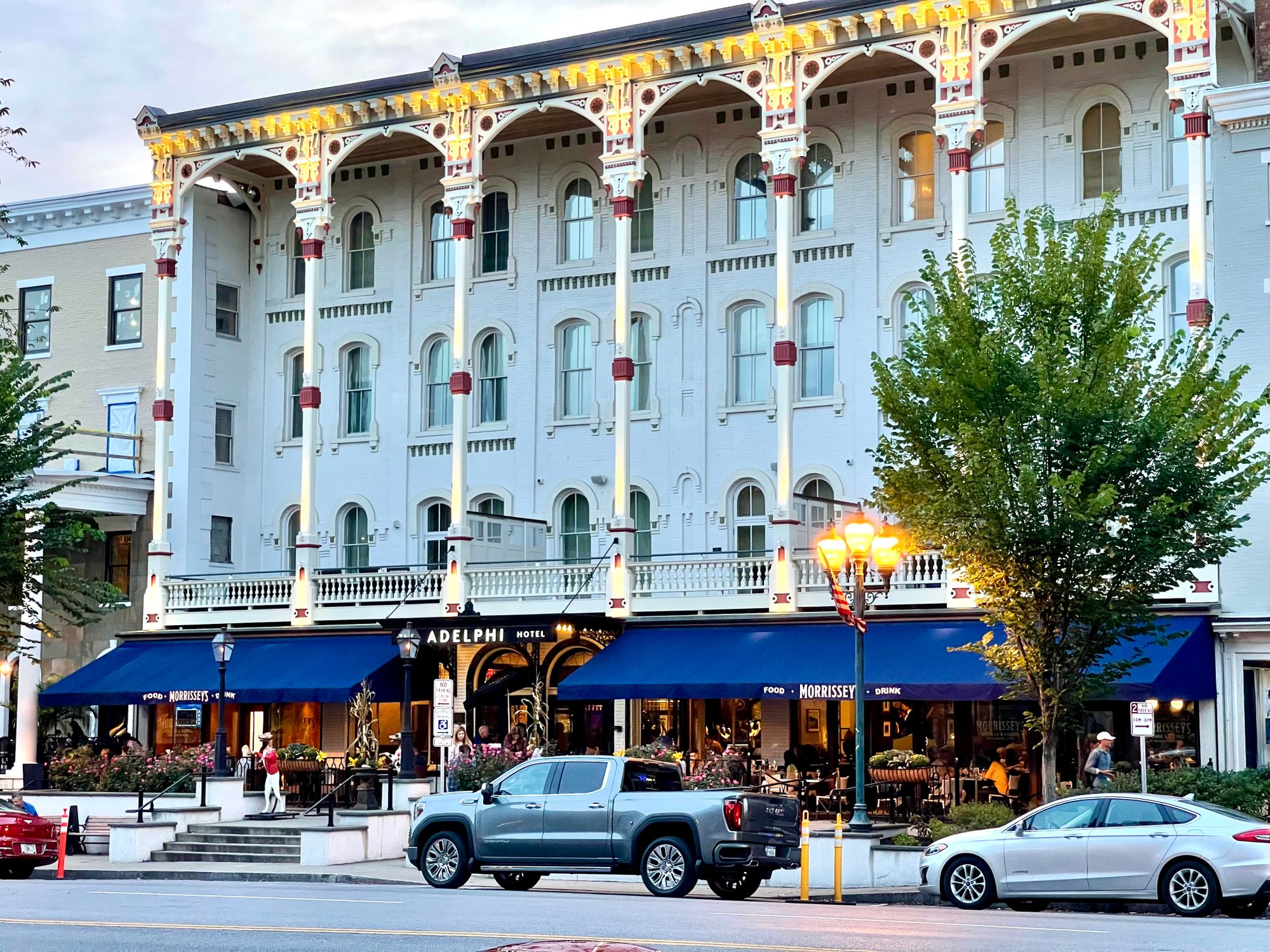
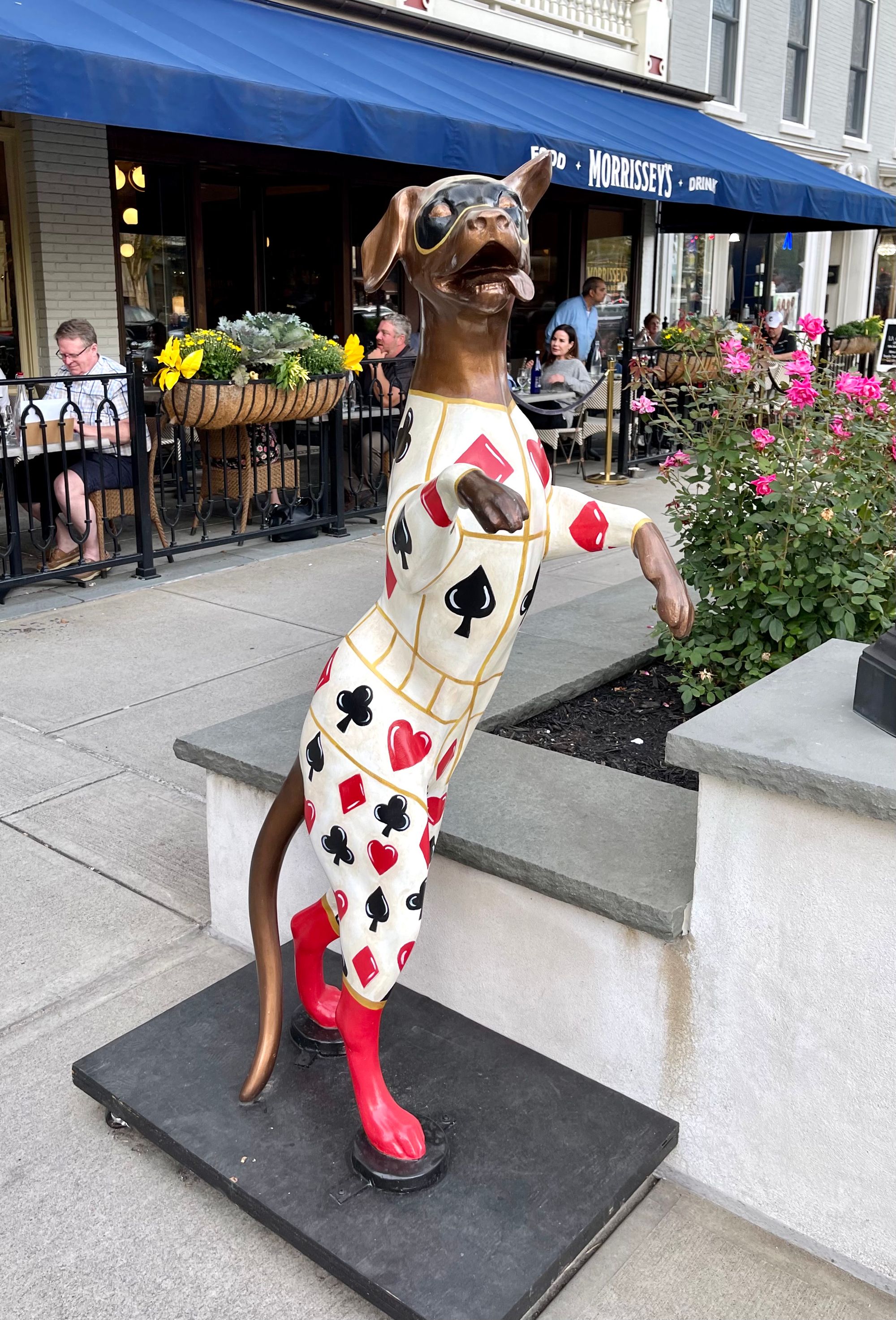
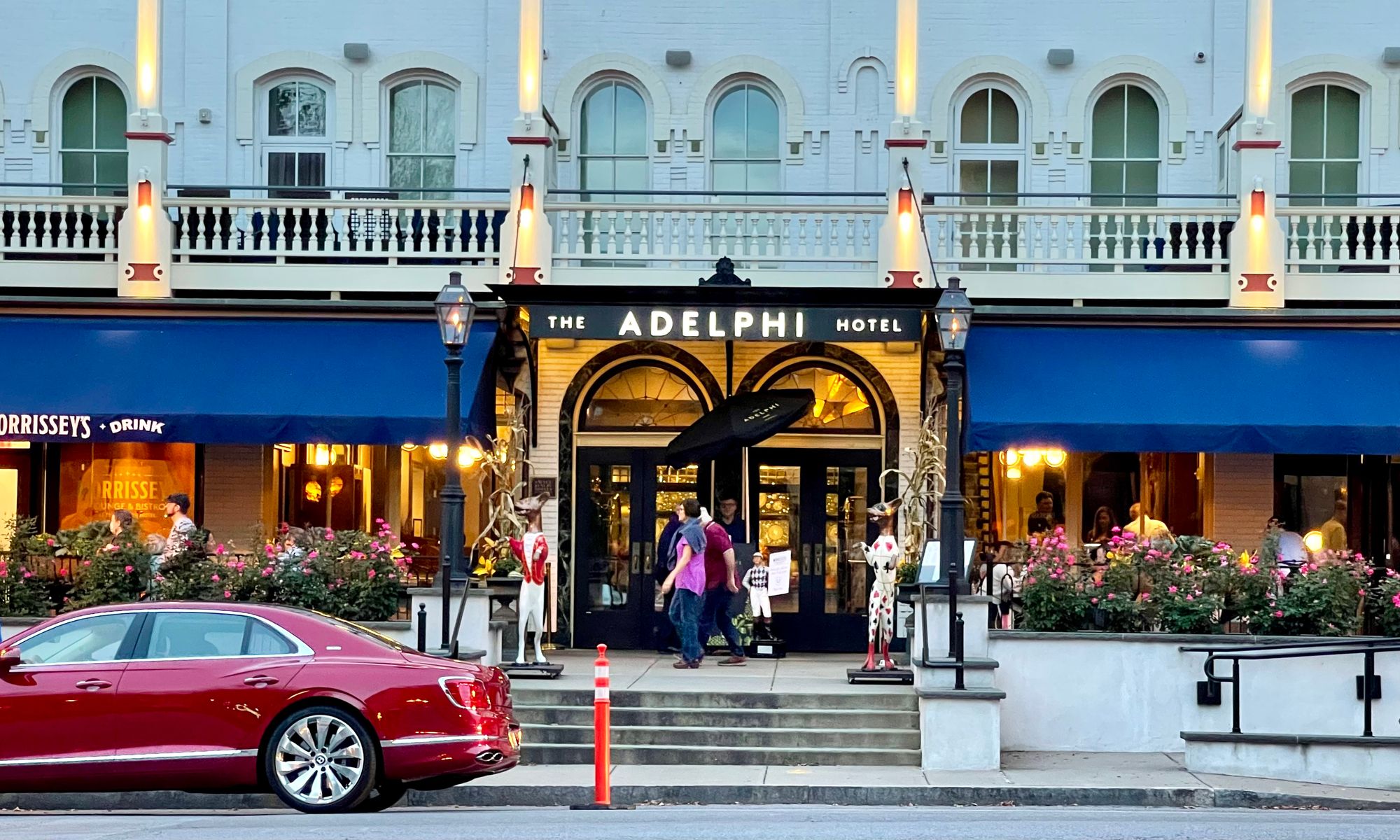
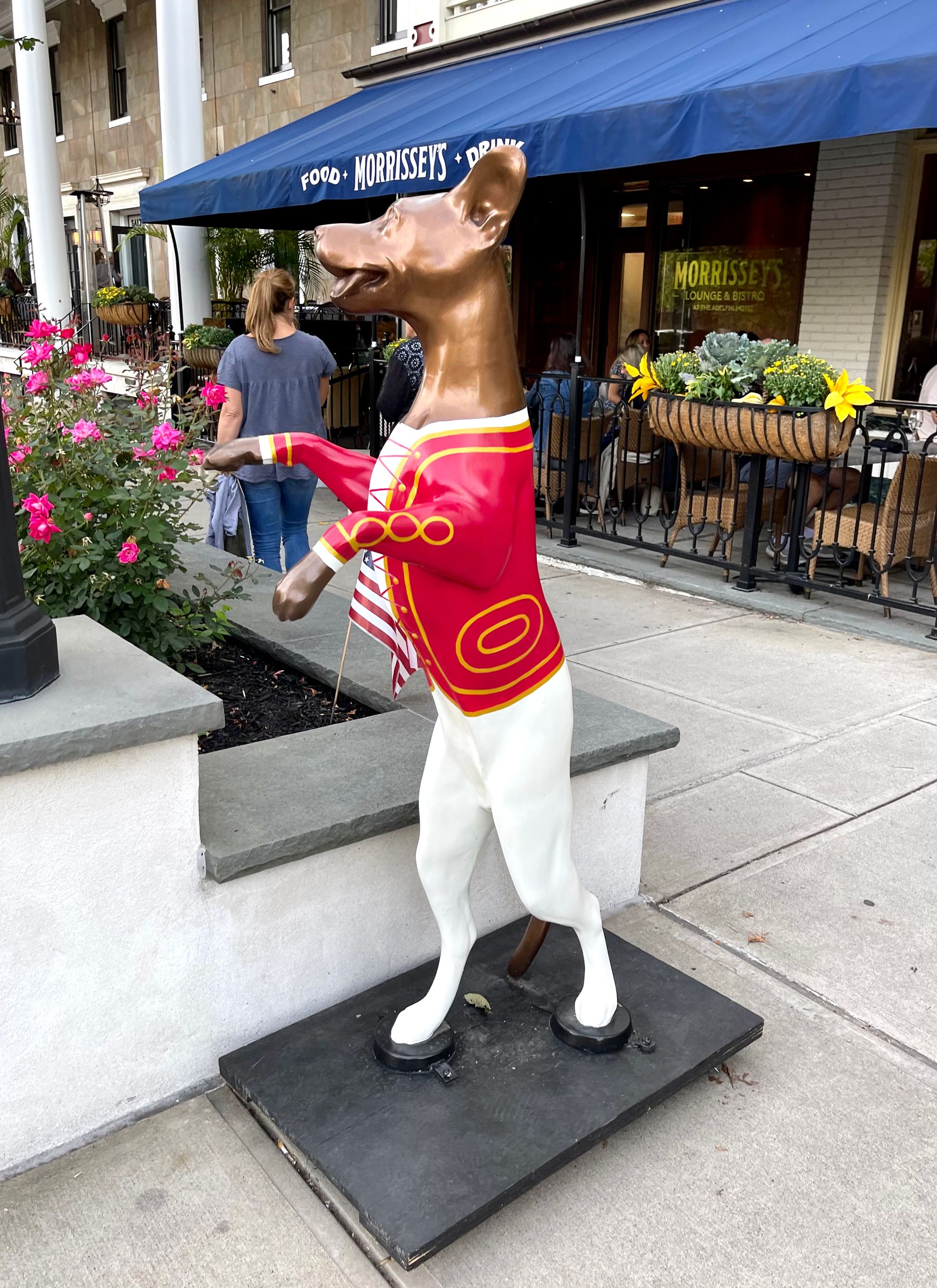
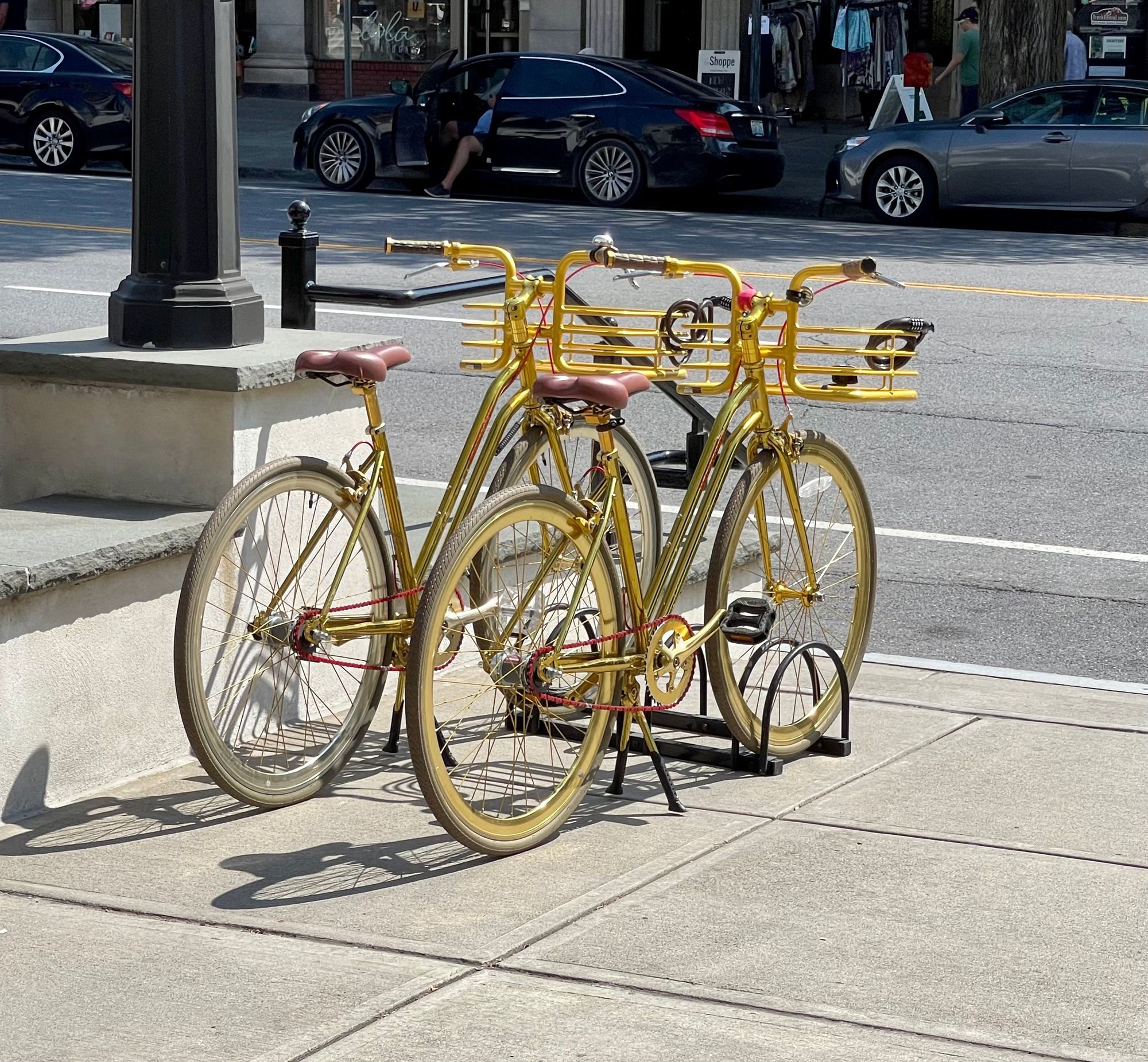
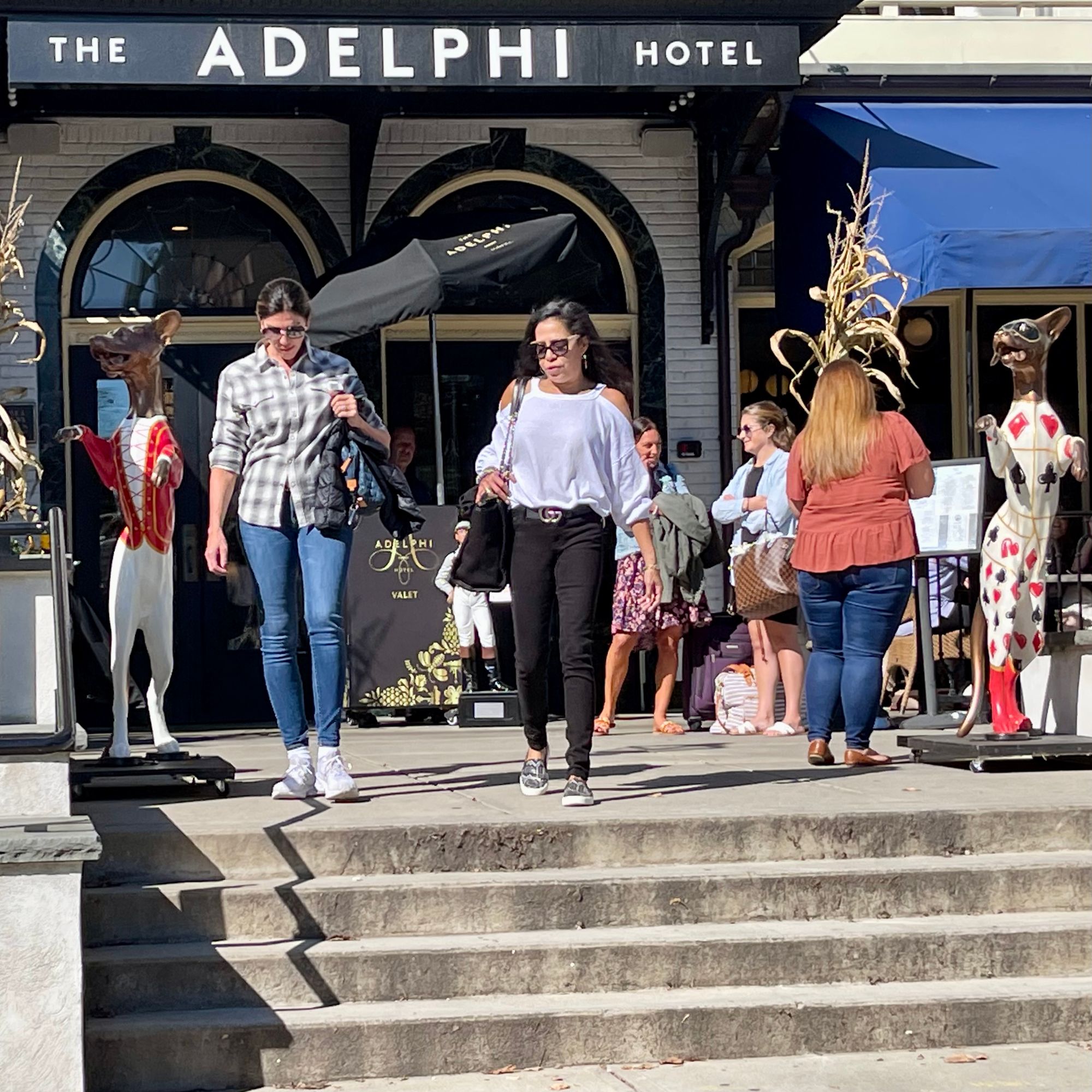
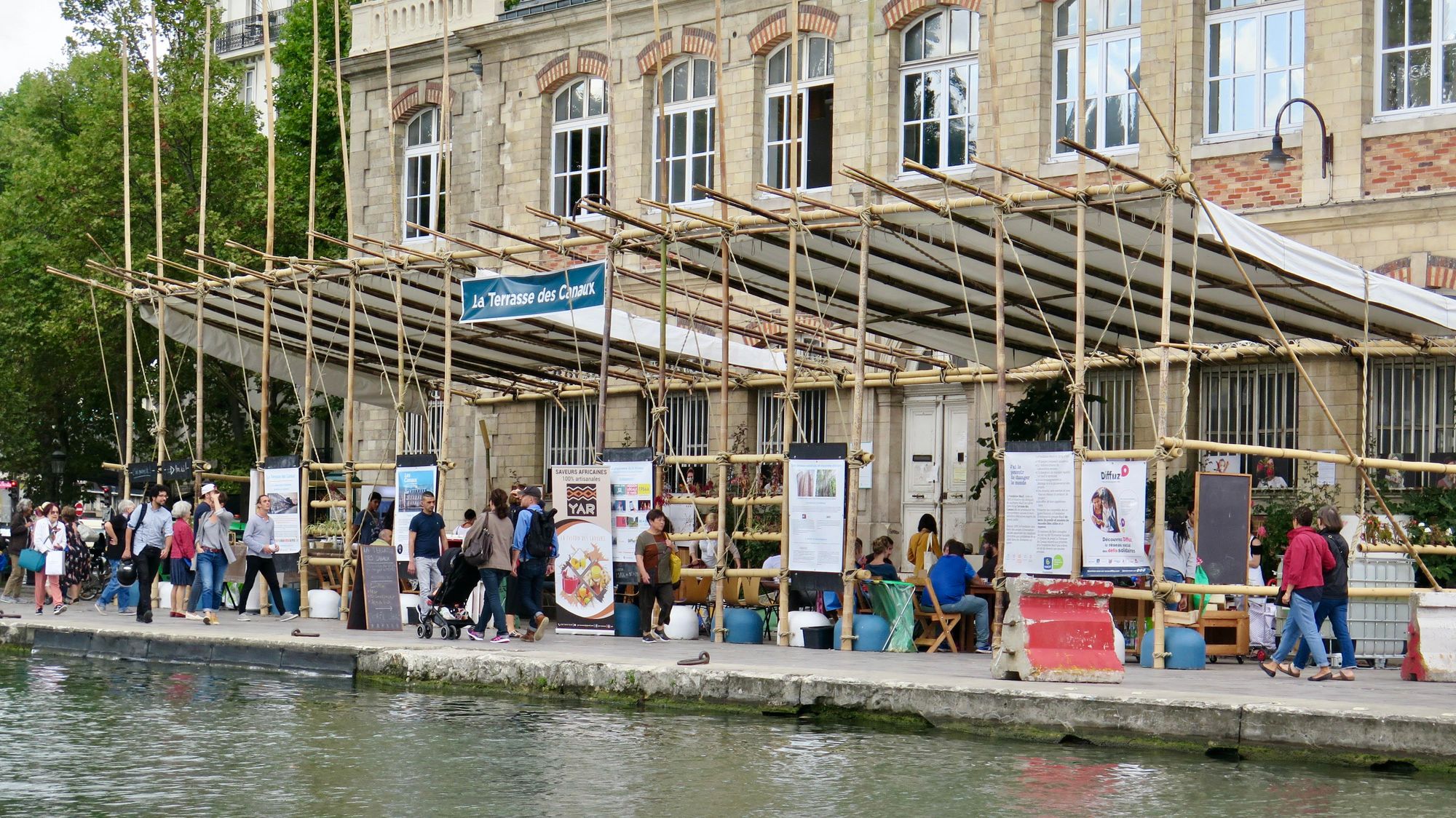
Public Realm Officer, or Public Space Czar
Finally, a position needs to be created within city government to manage public spaces. The position could be named Chief Public Realm Officer or Public Space Czar according to Curbed magazine. They need the power to convene, implement and establish priorities to create a public realm that serves the entire city. They need to have the authority to provide oversight on all agencies that have a role in the public realm including transportation, zoning, parks and design guidelines. They can lead the transformations that will revitalize the city in key ways and shape its future.
